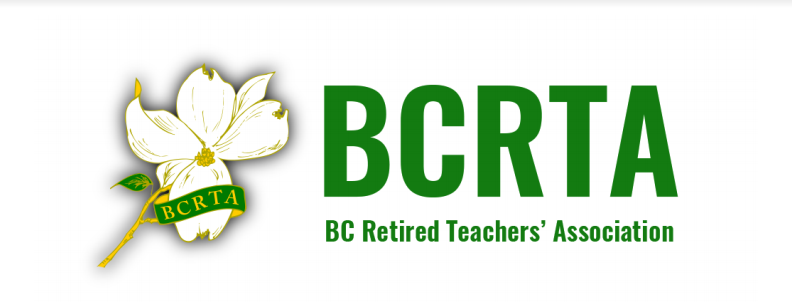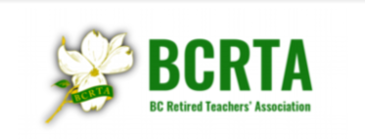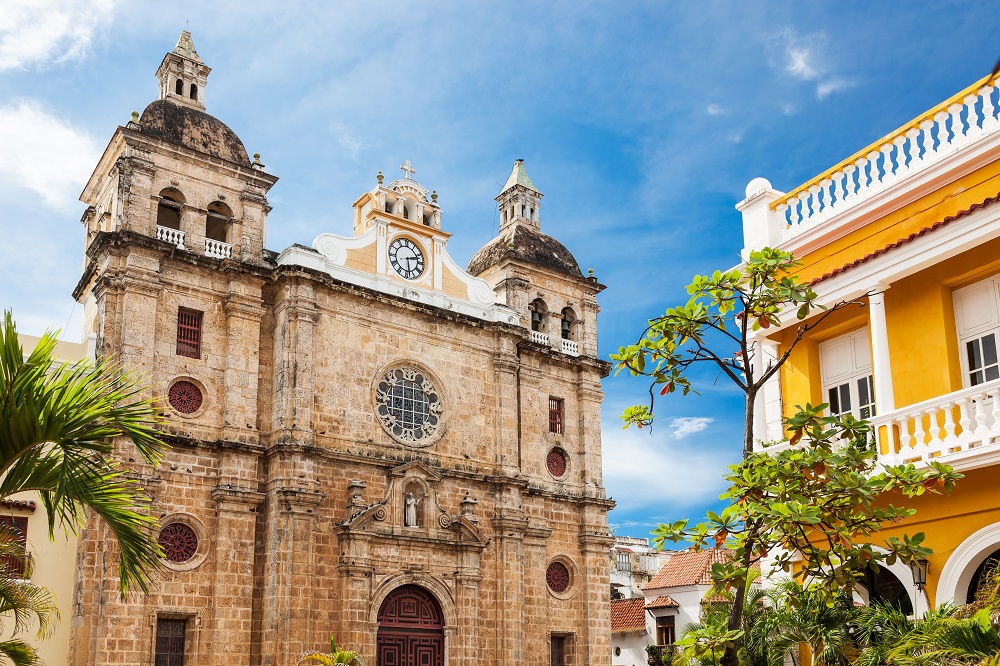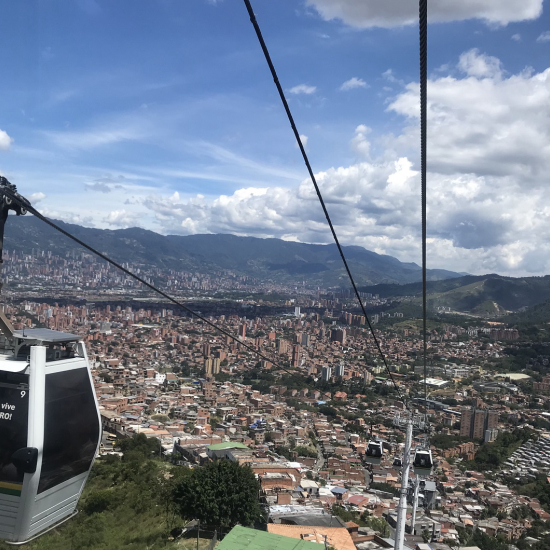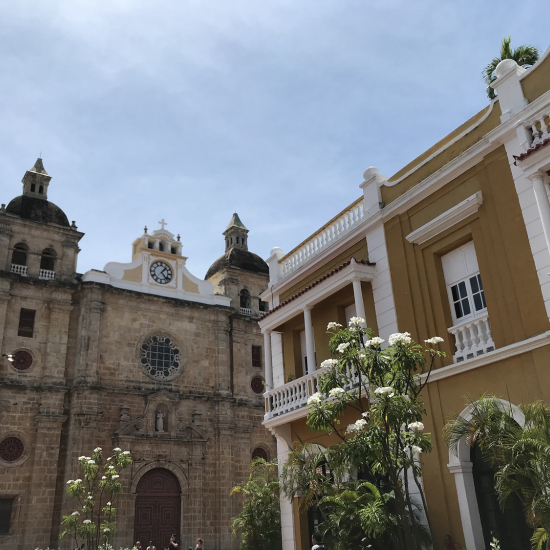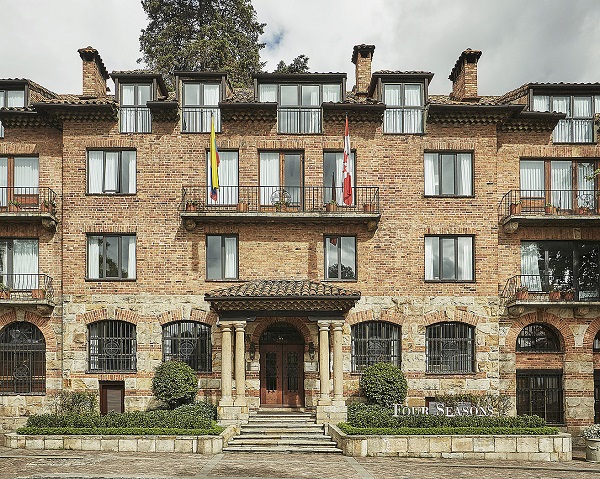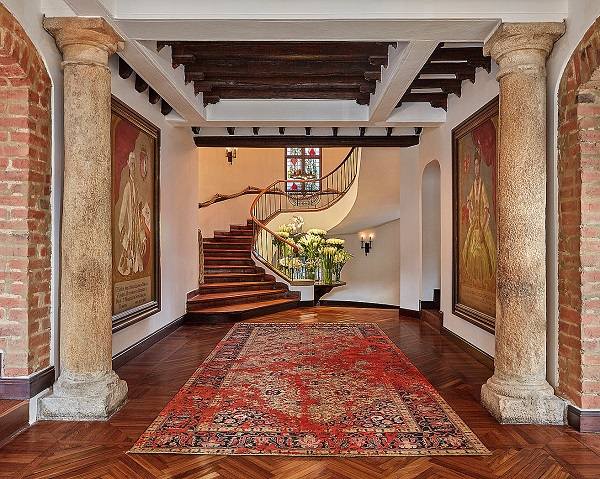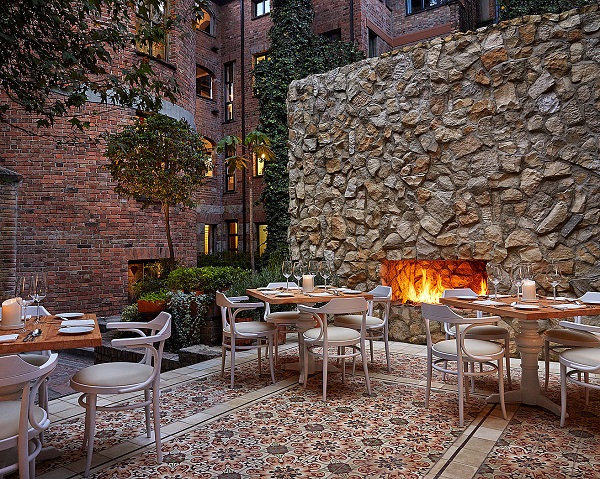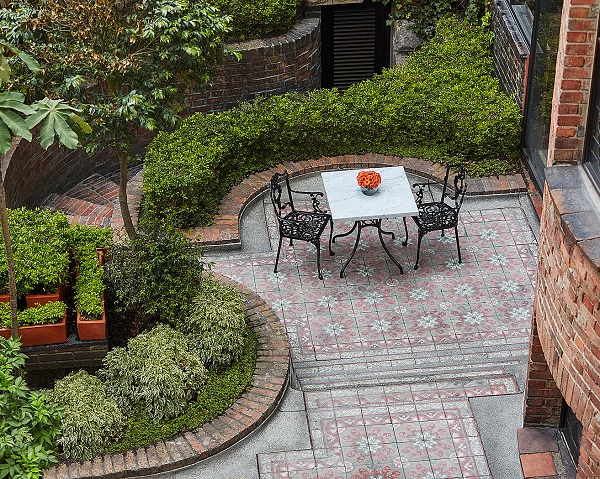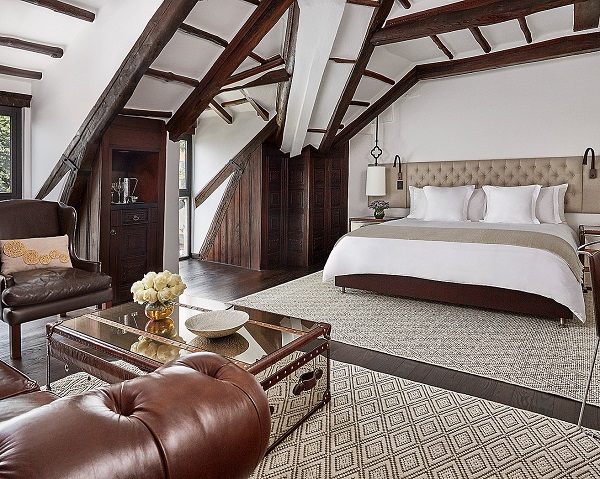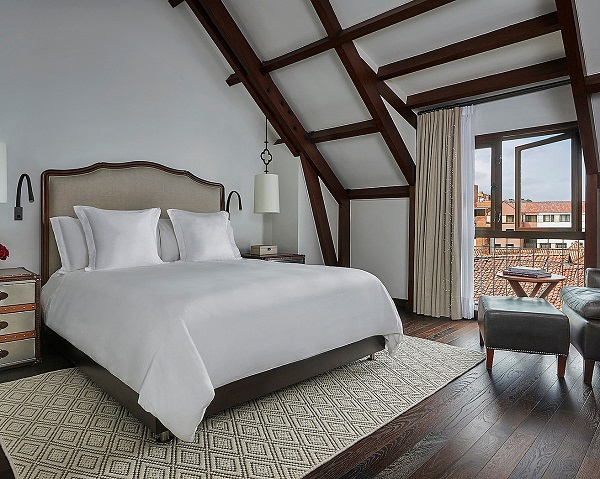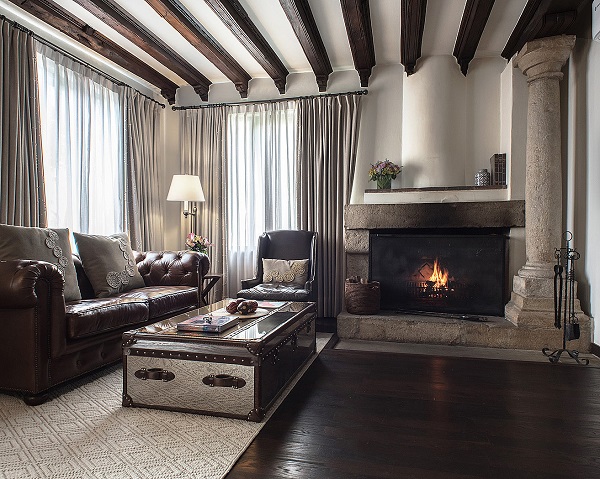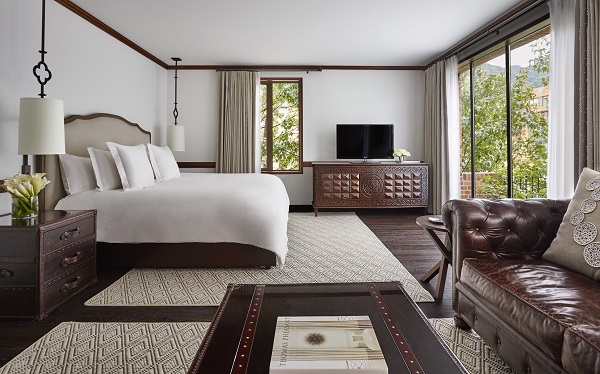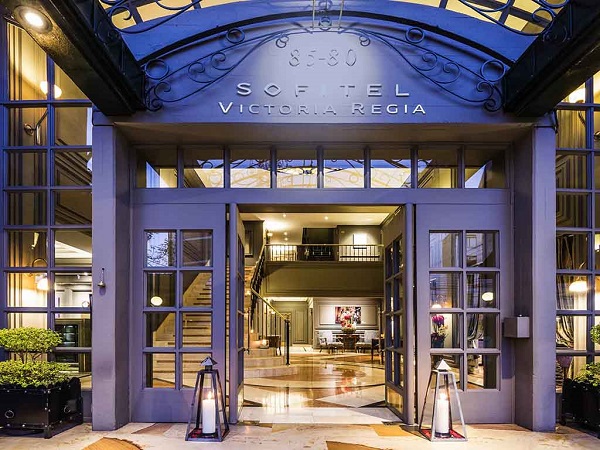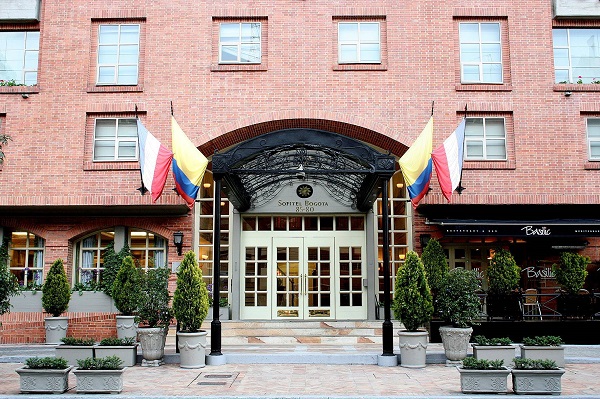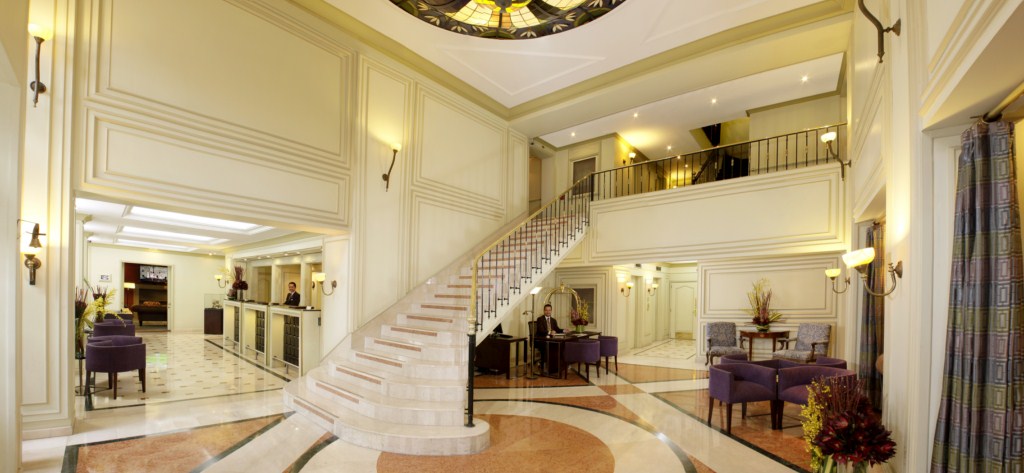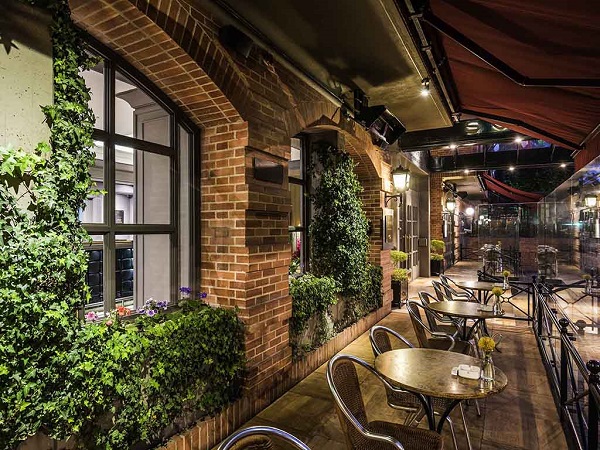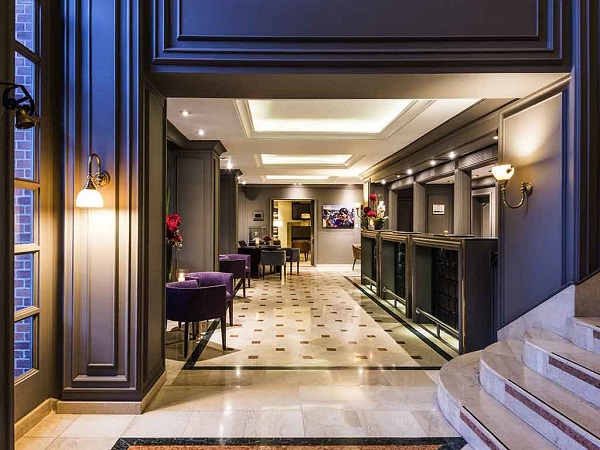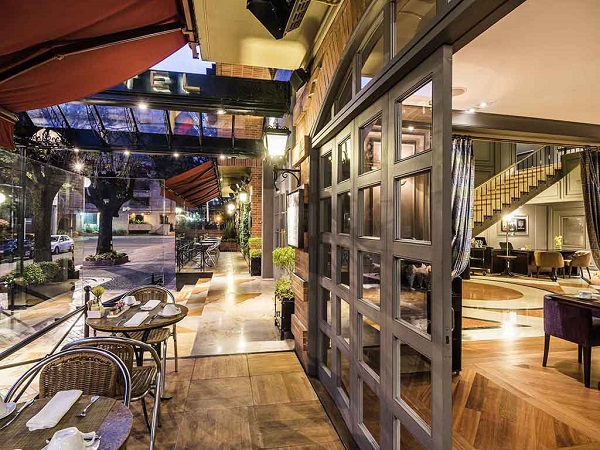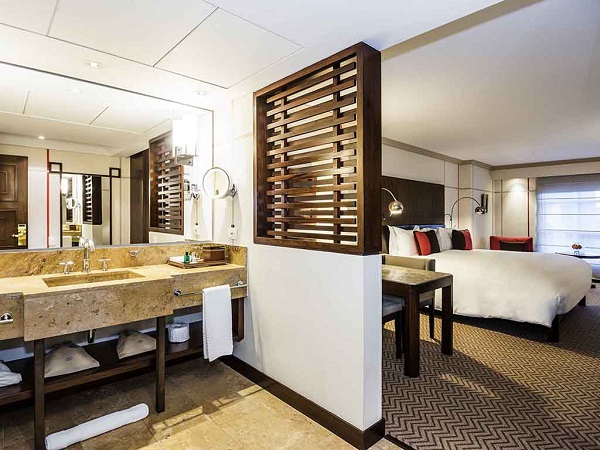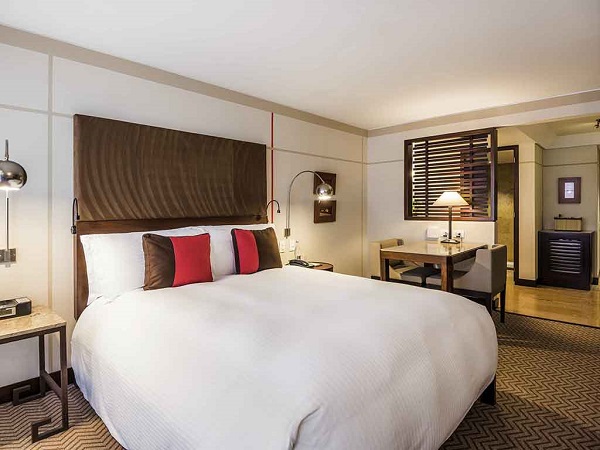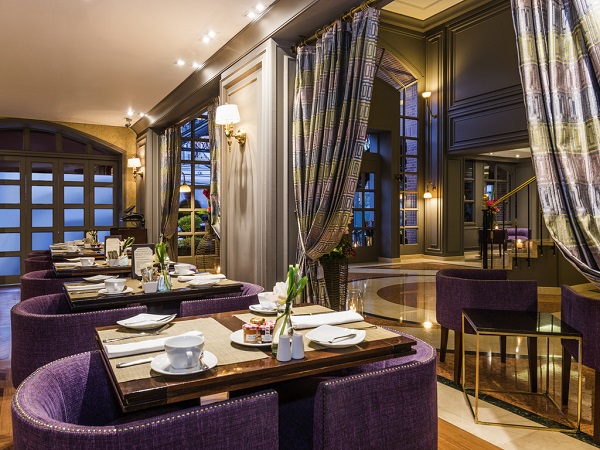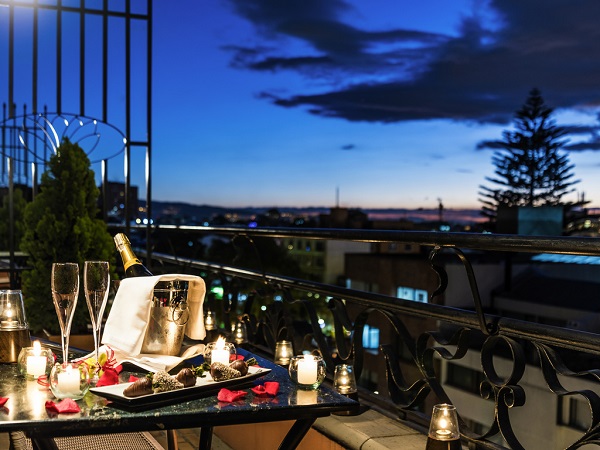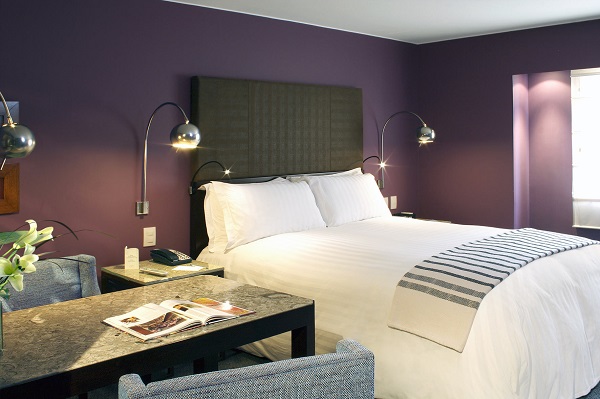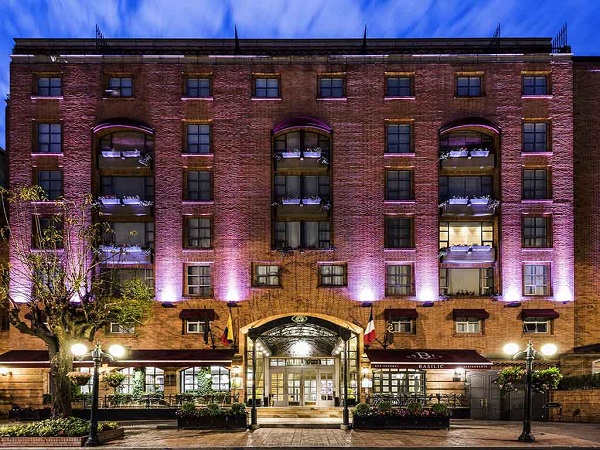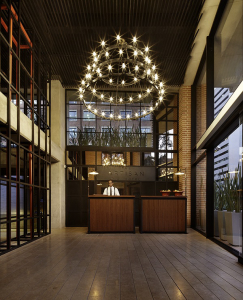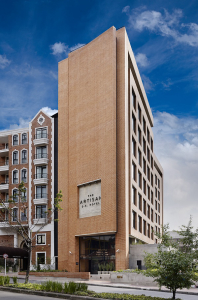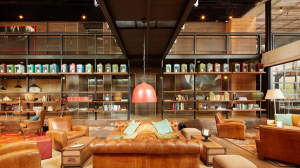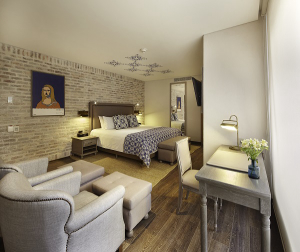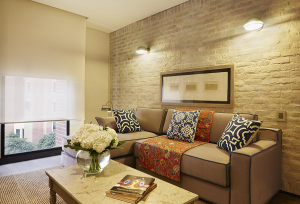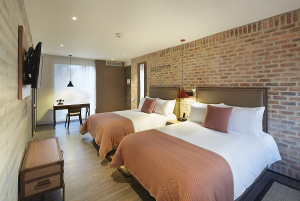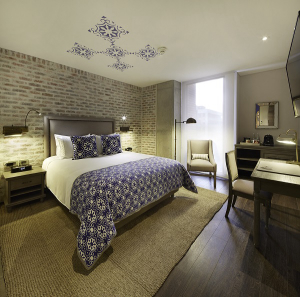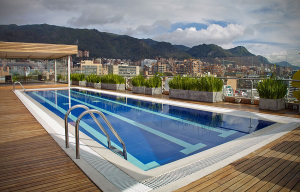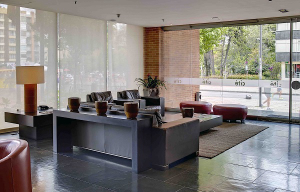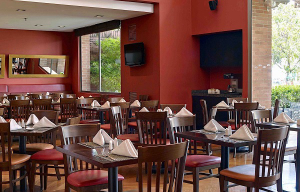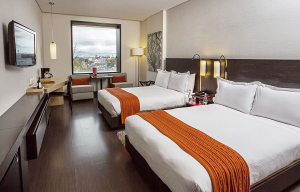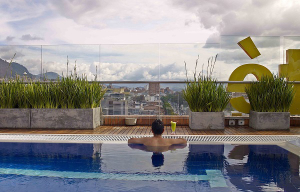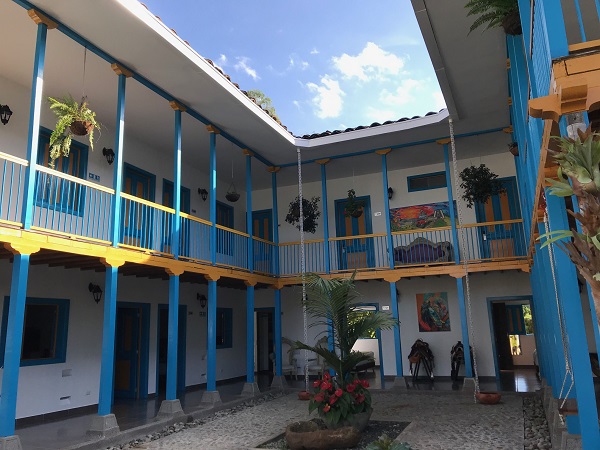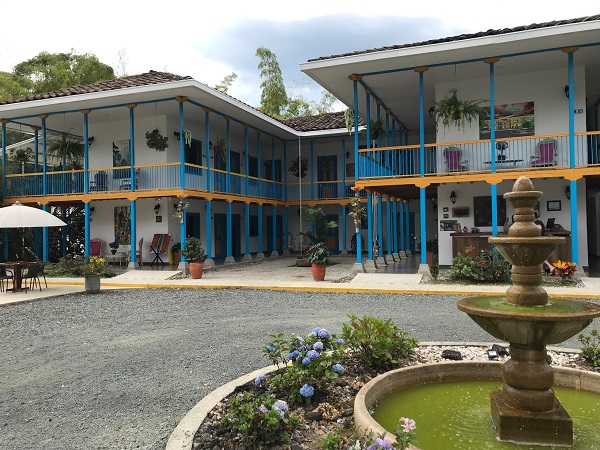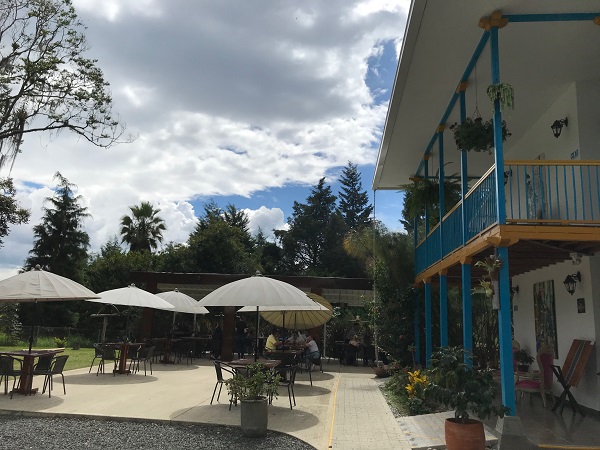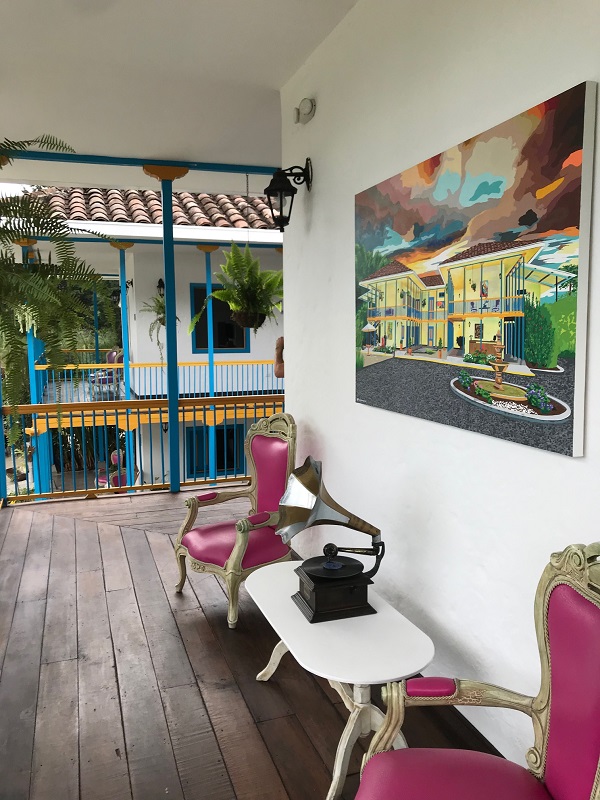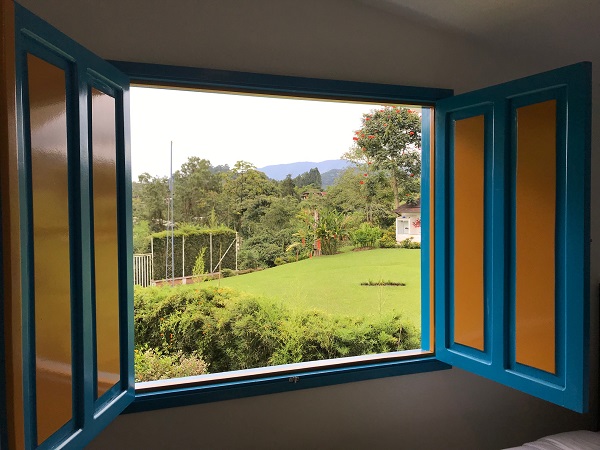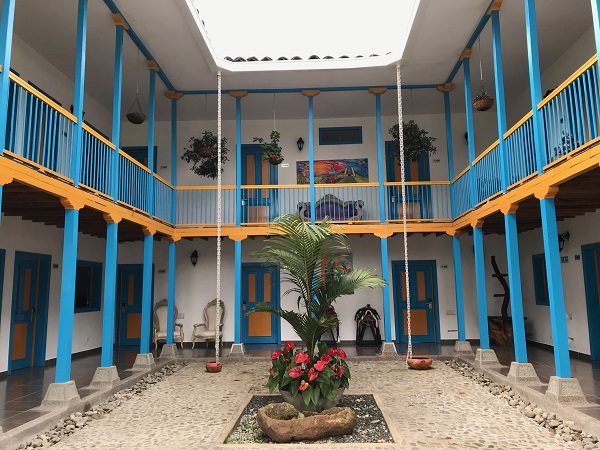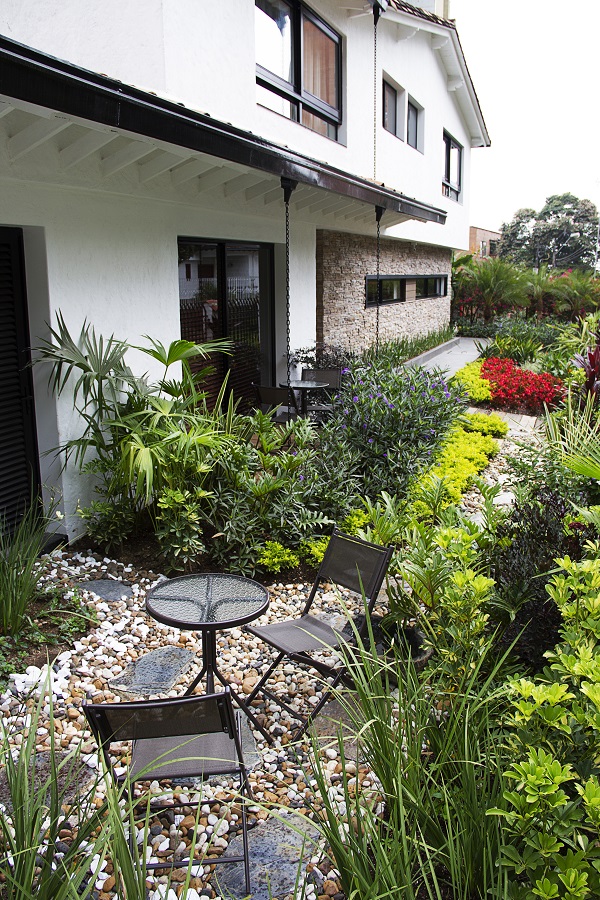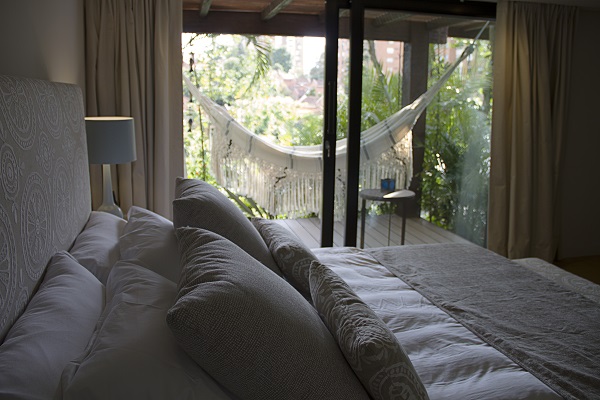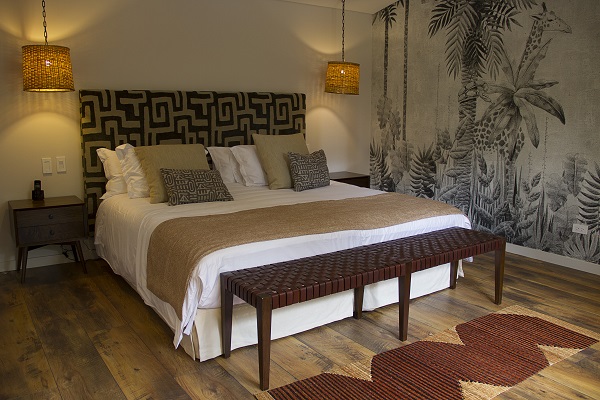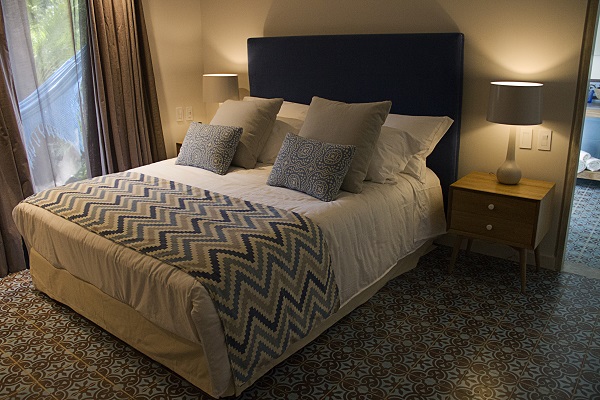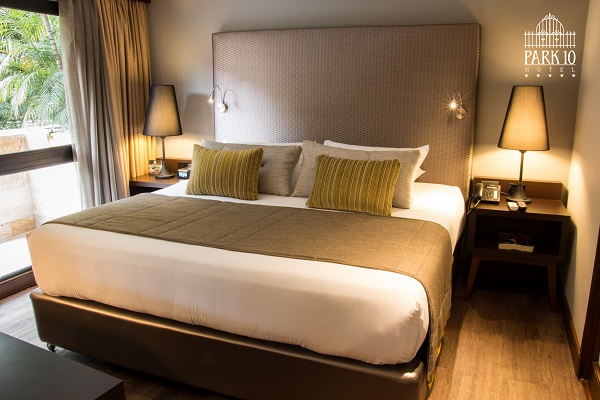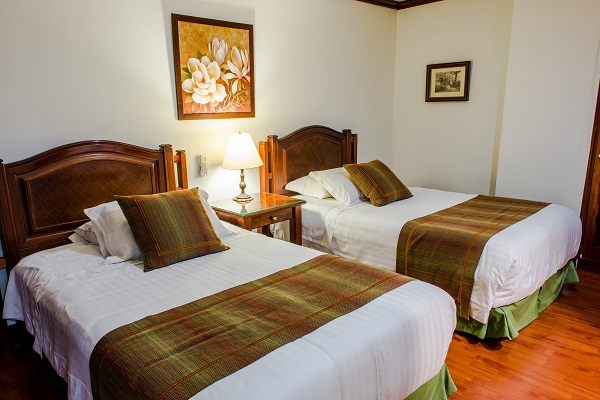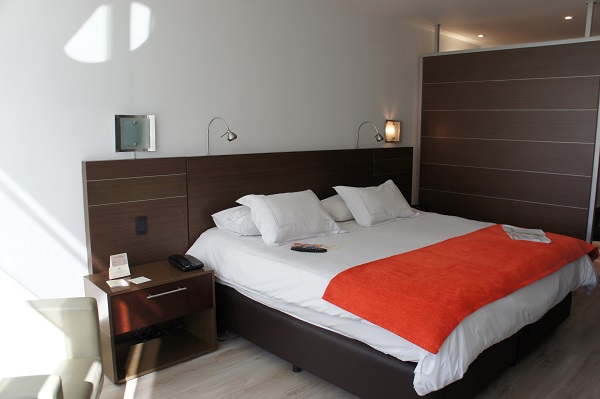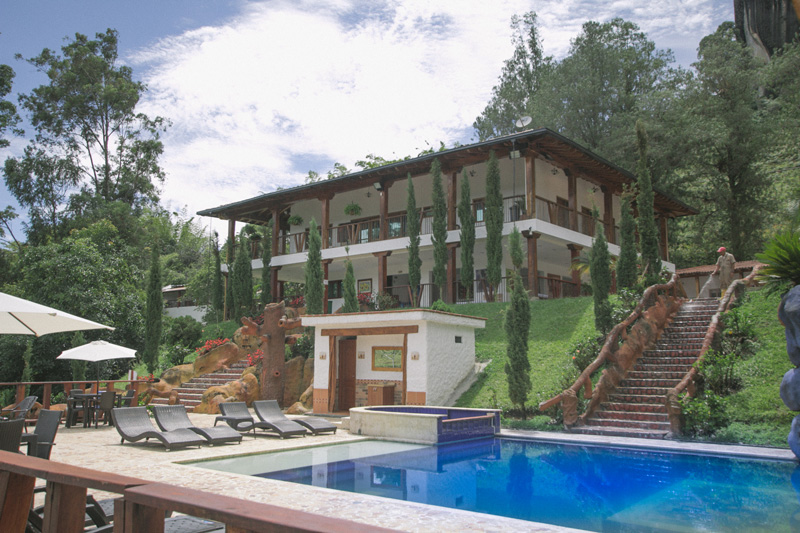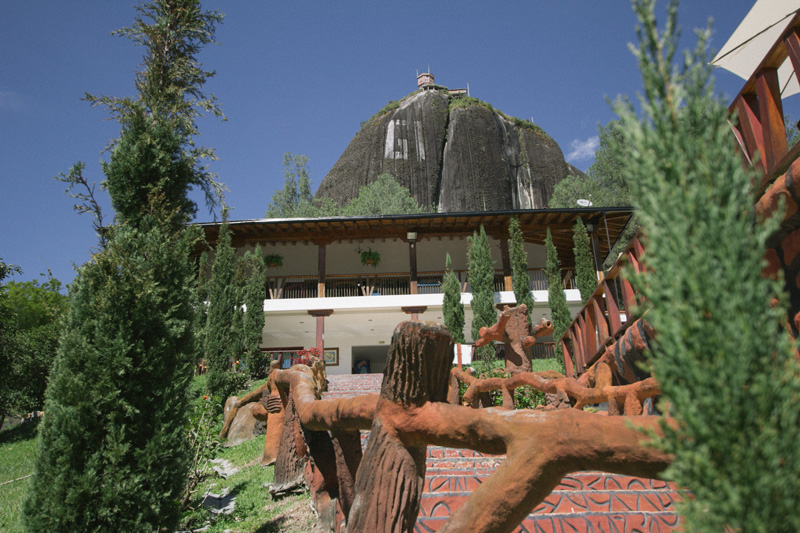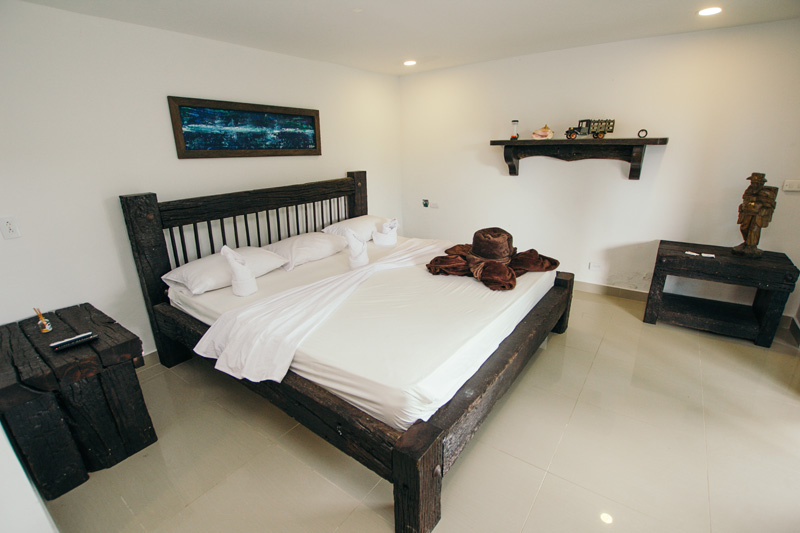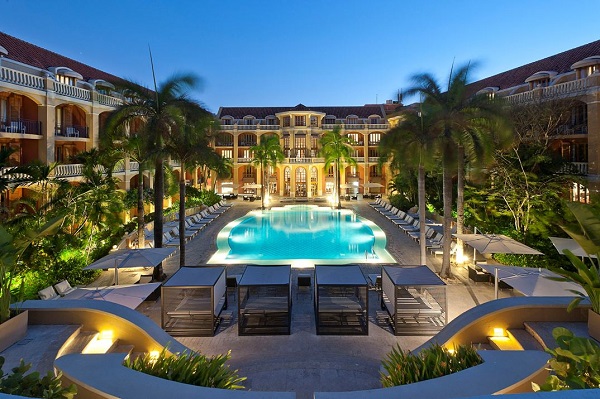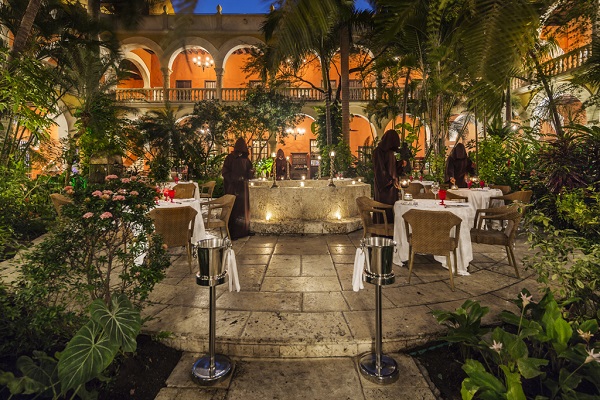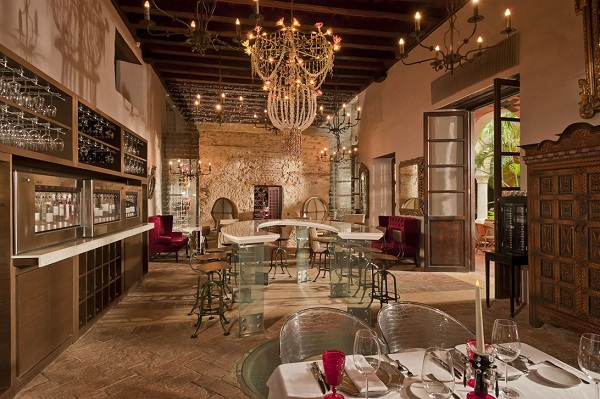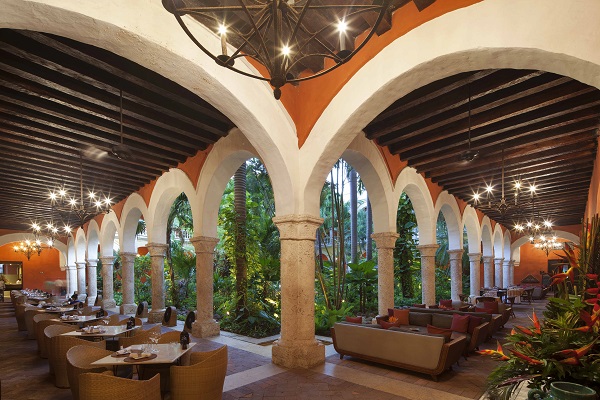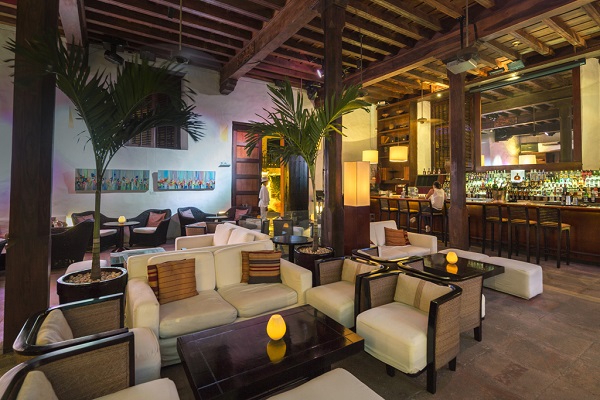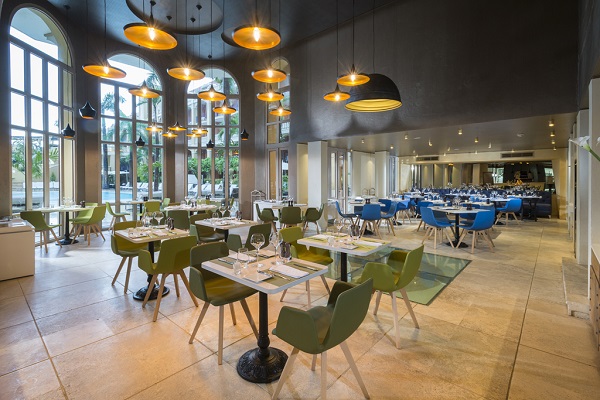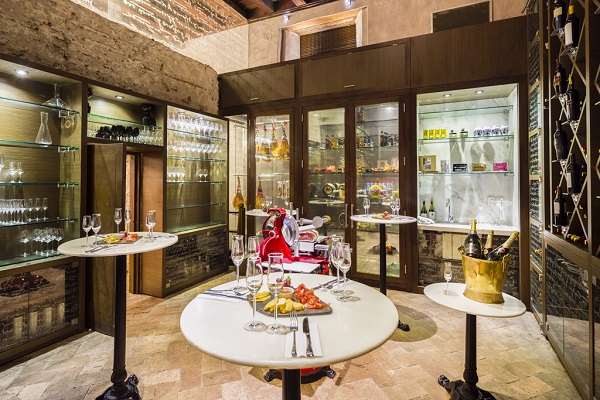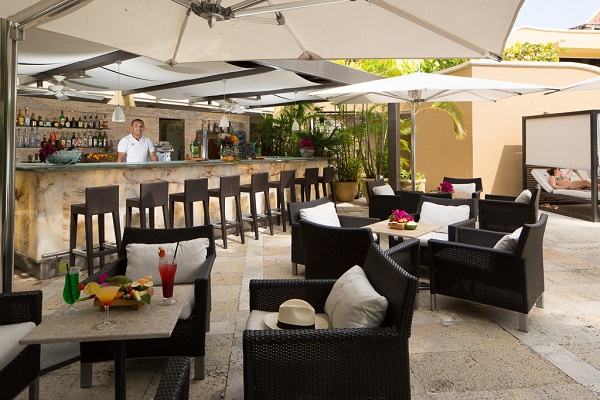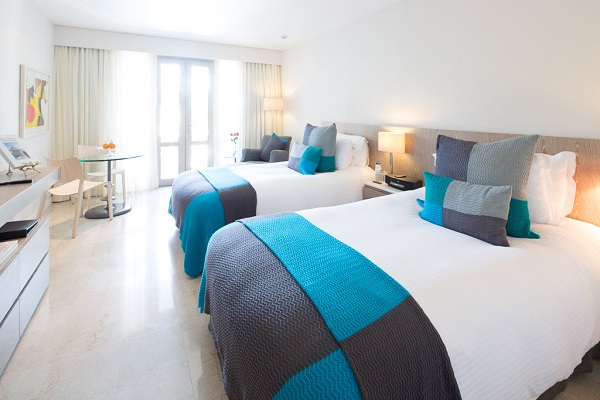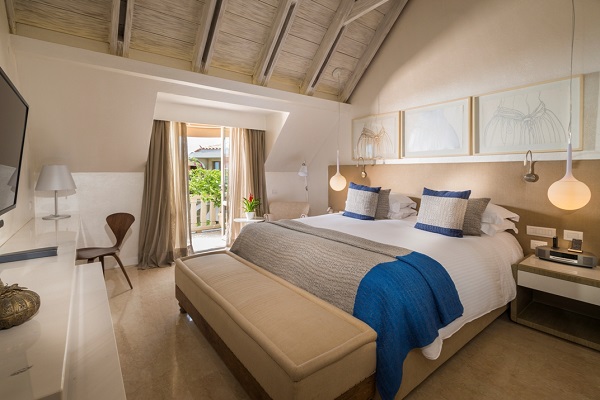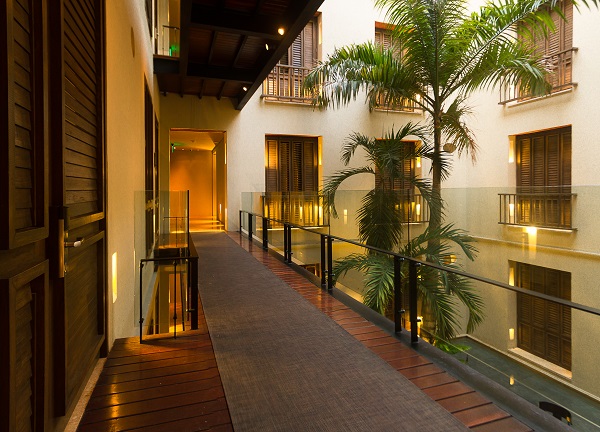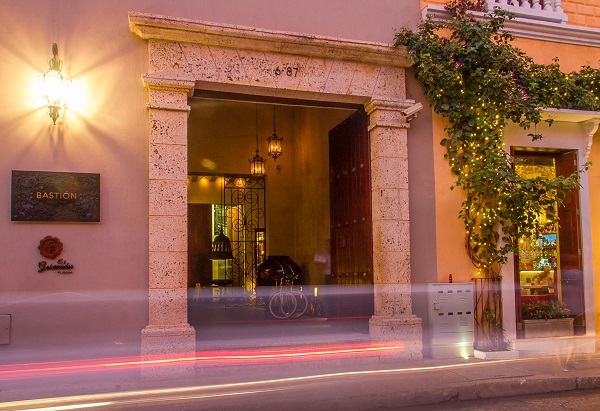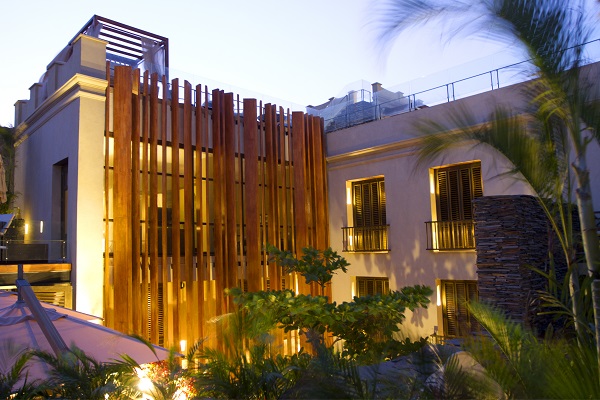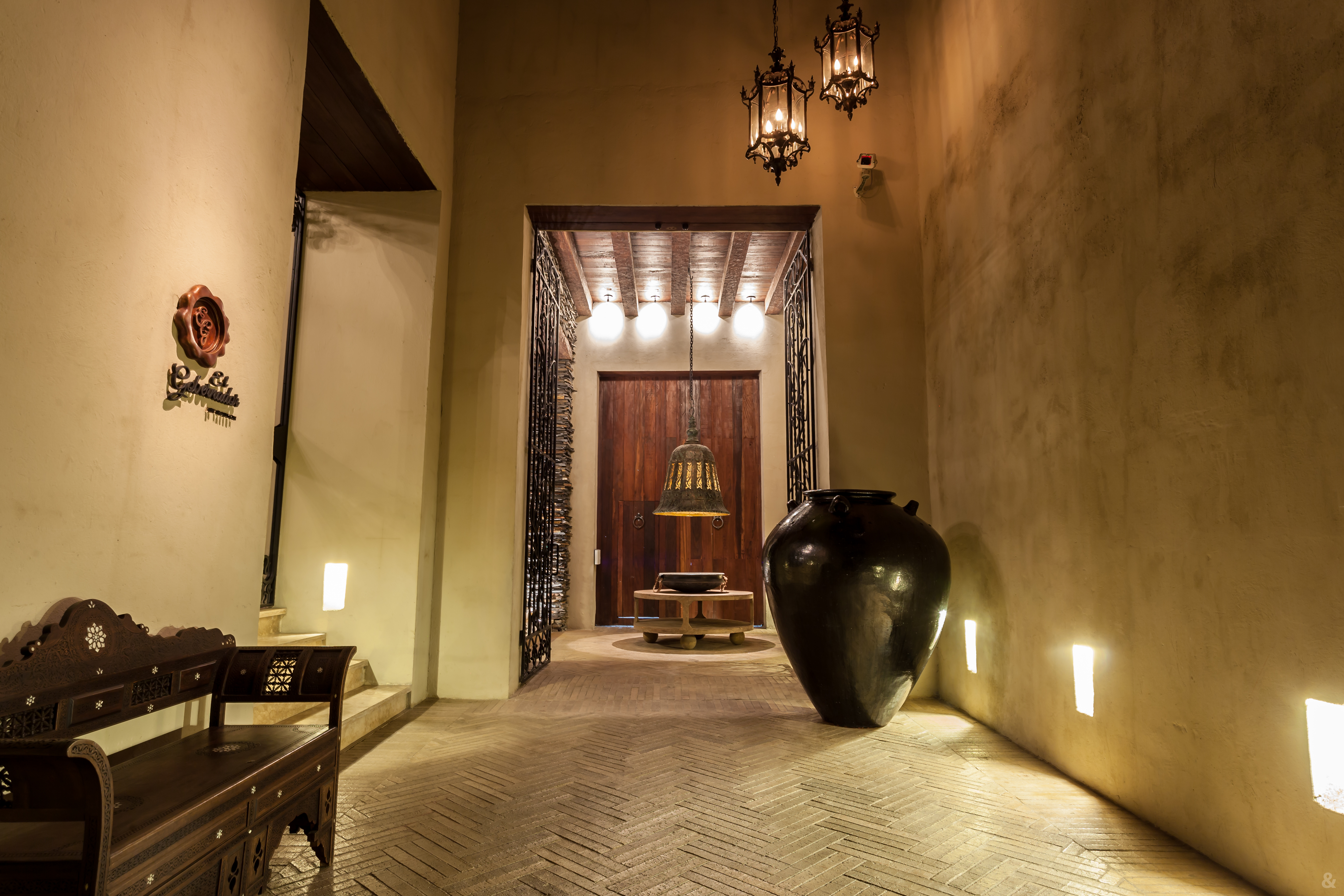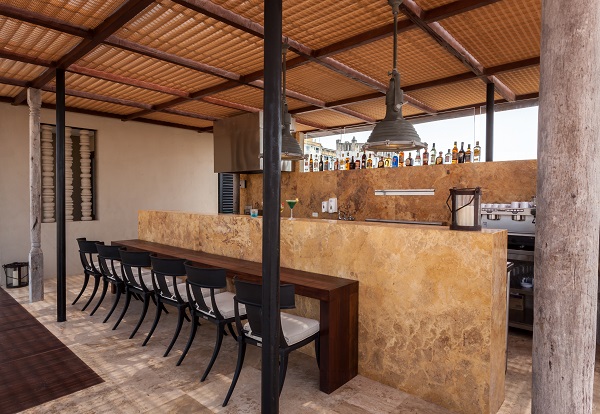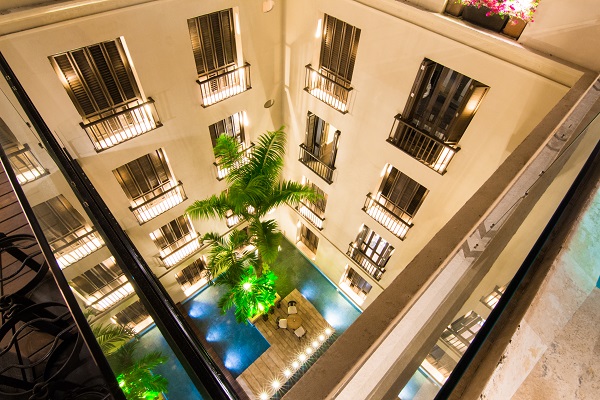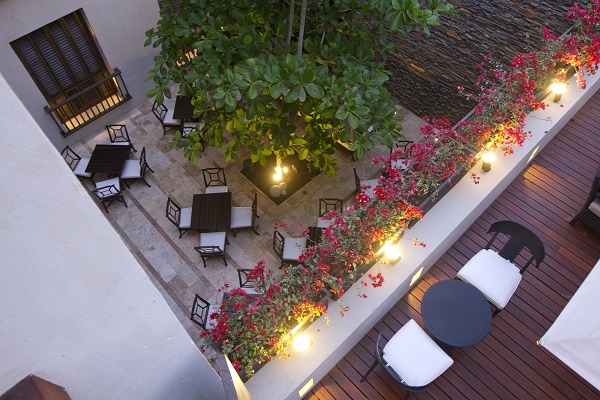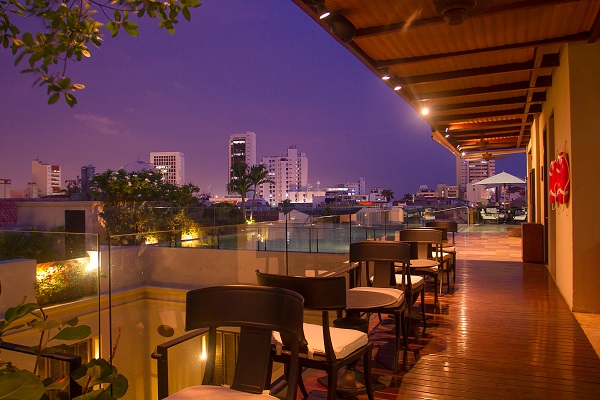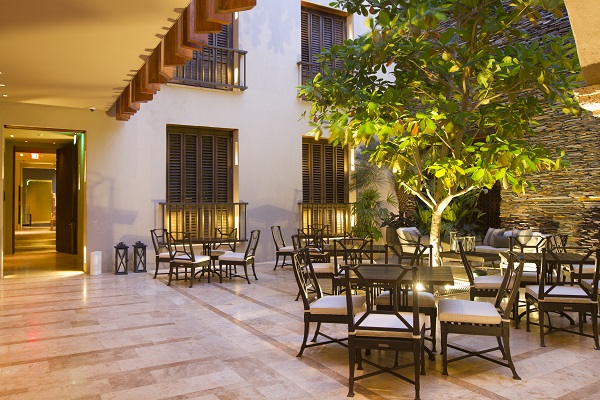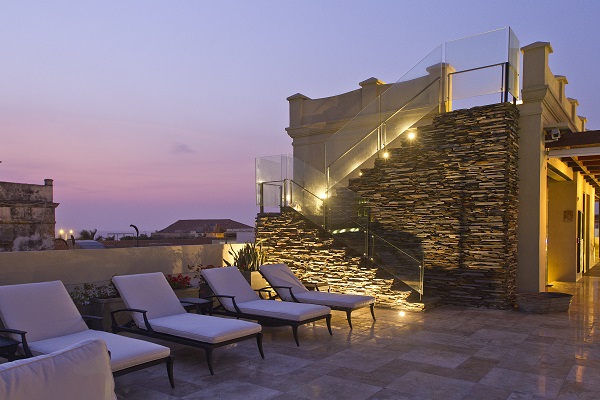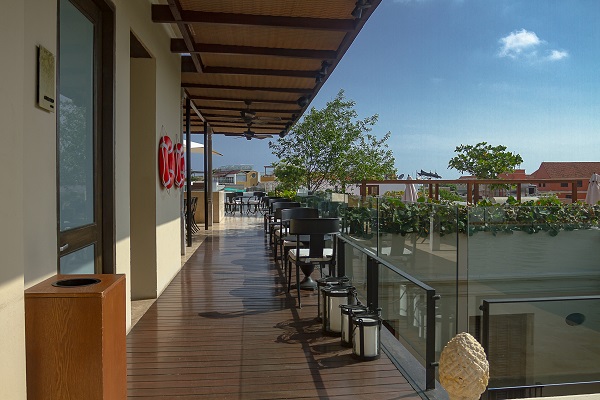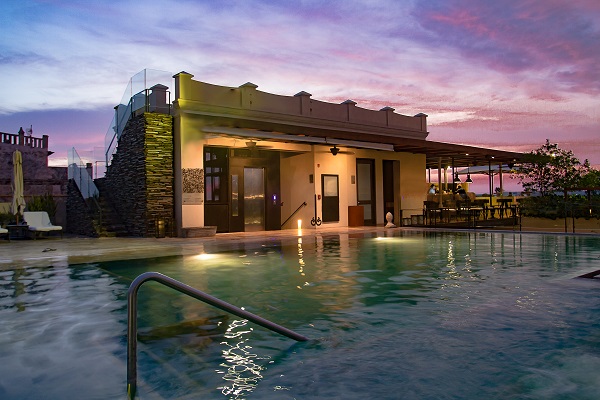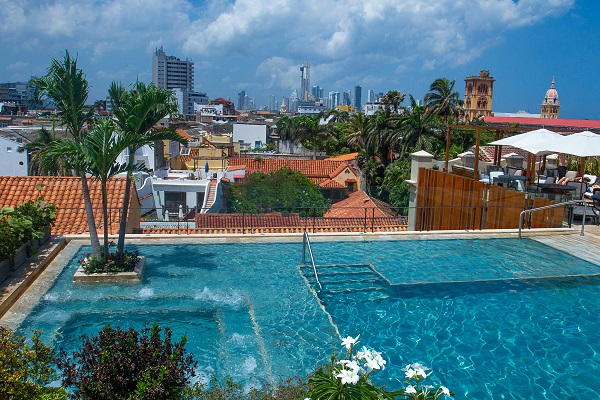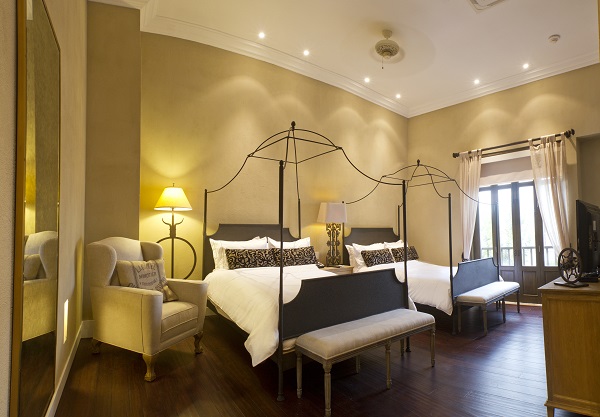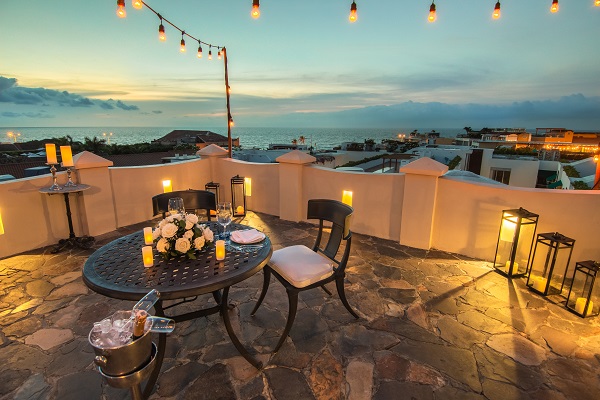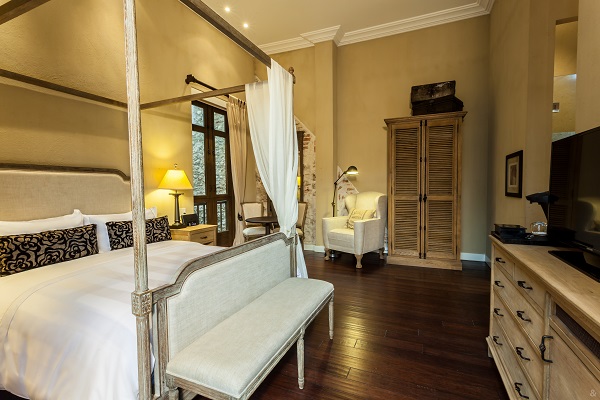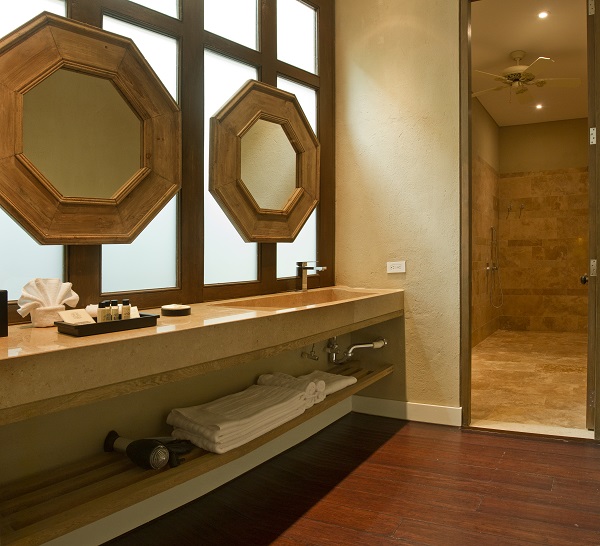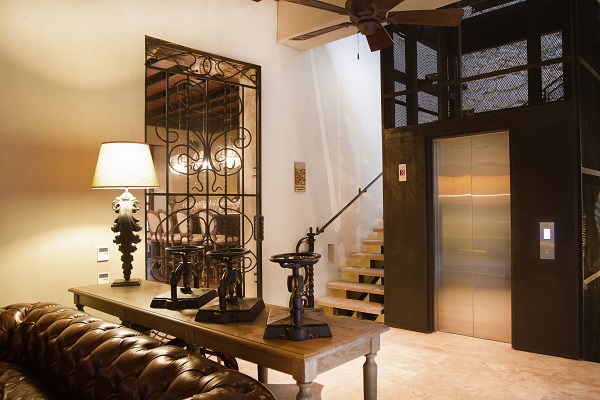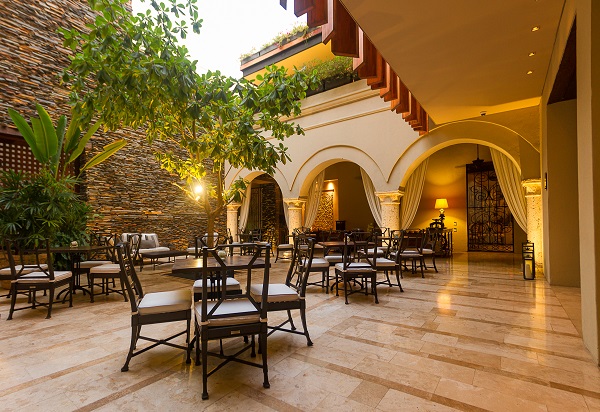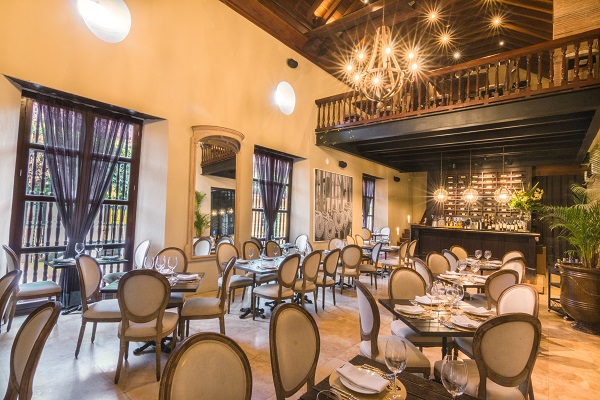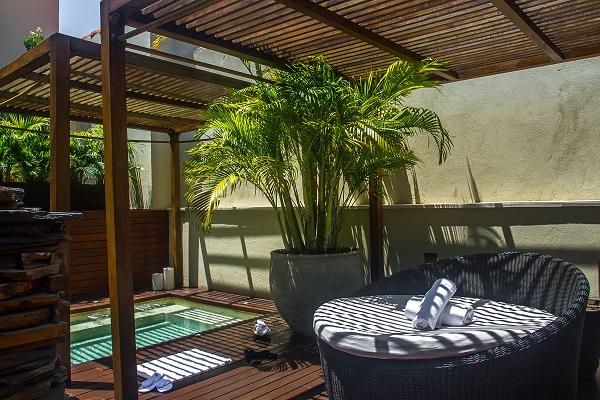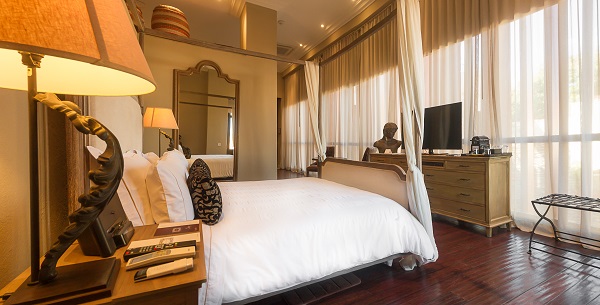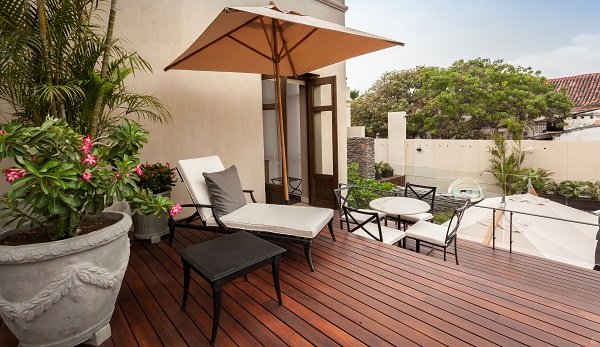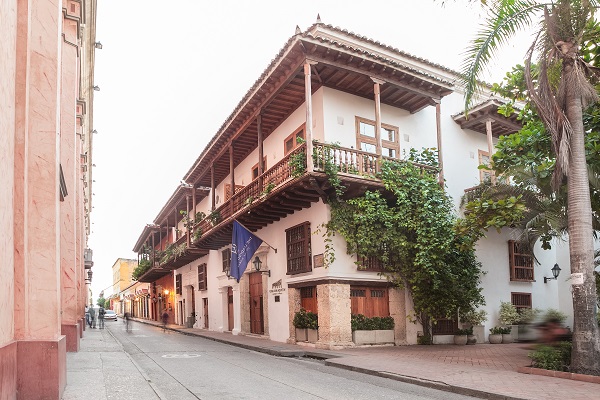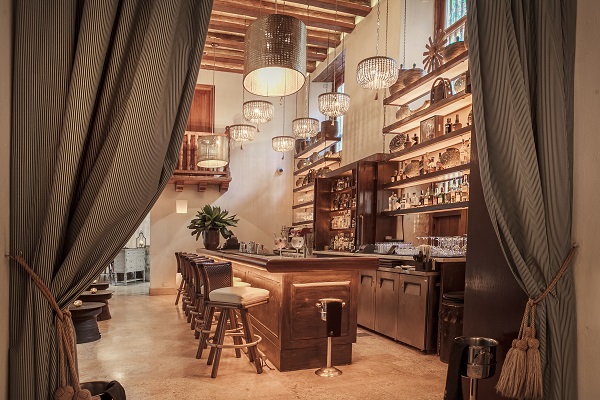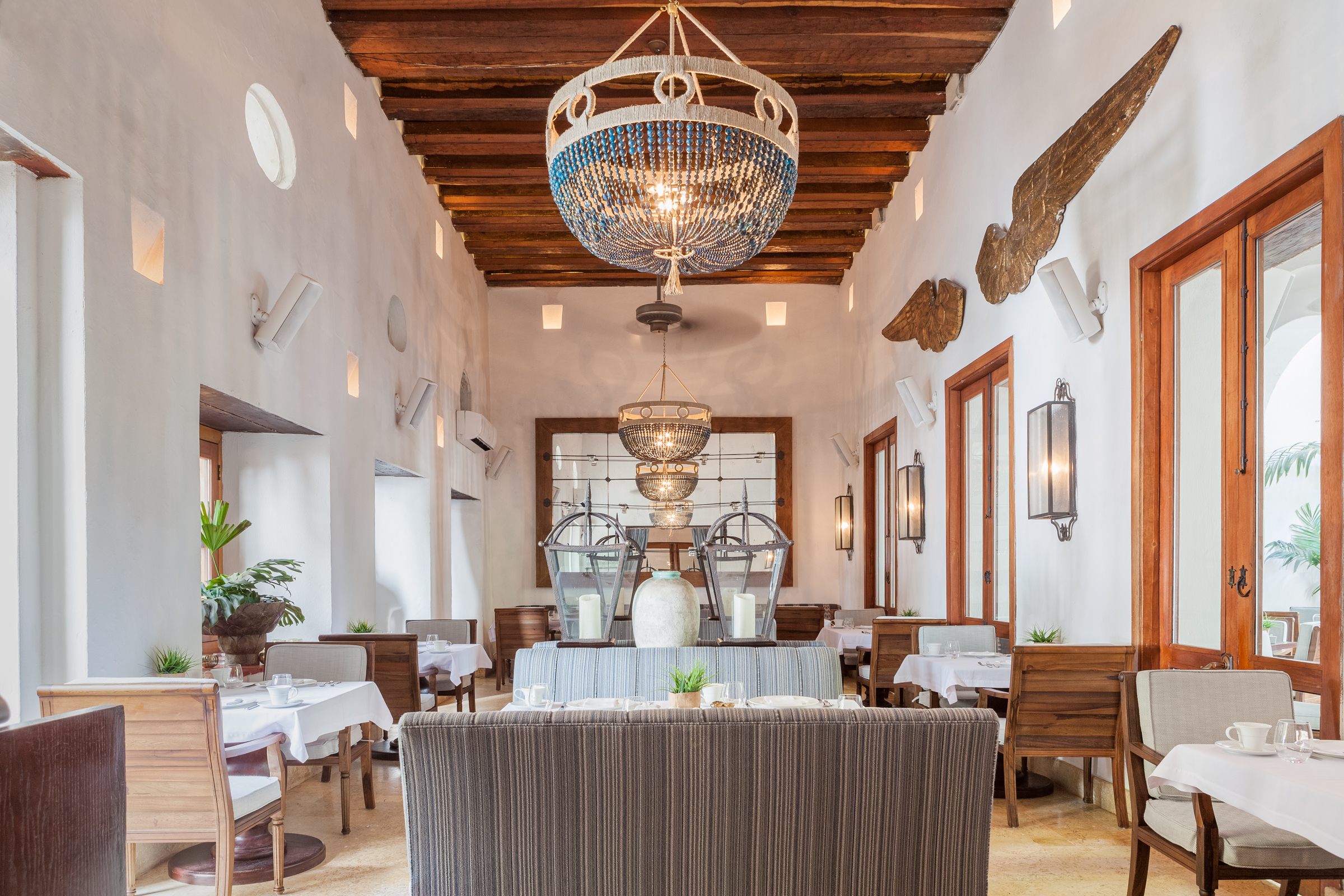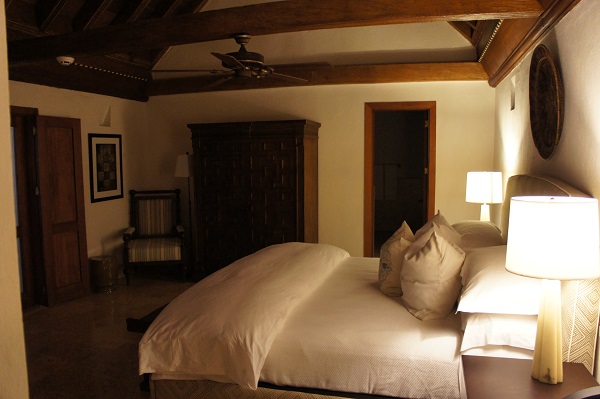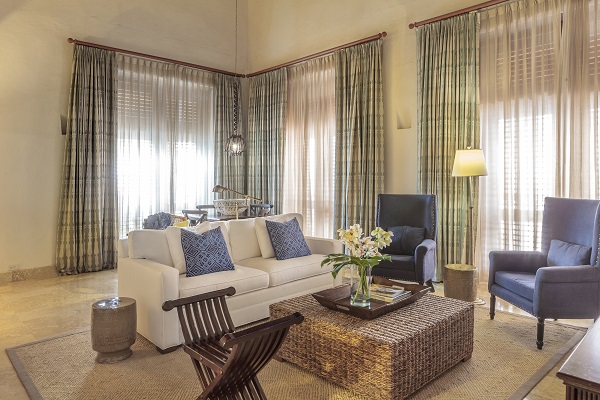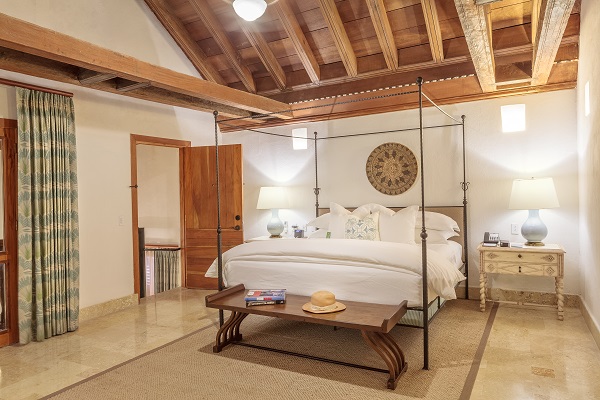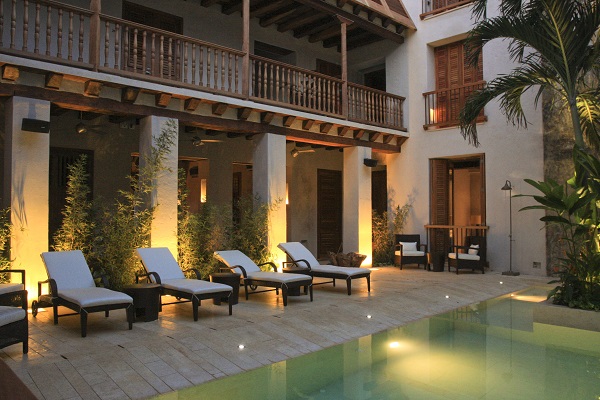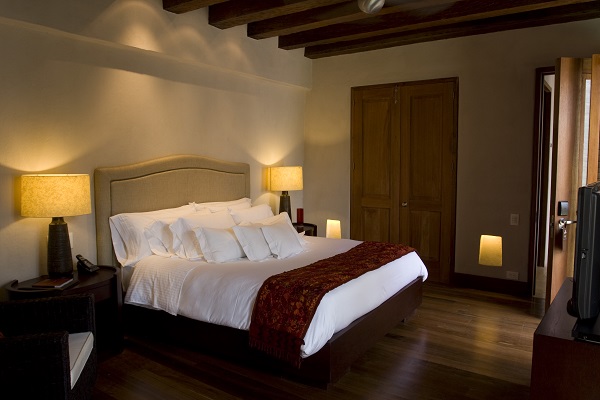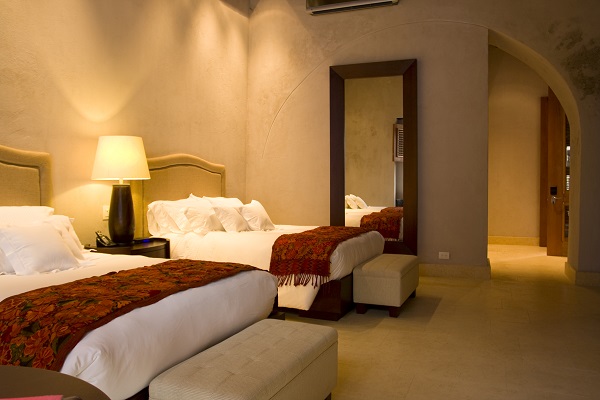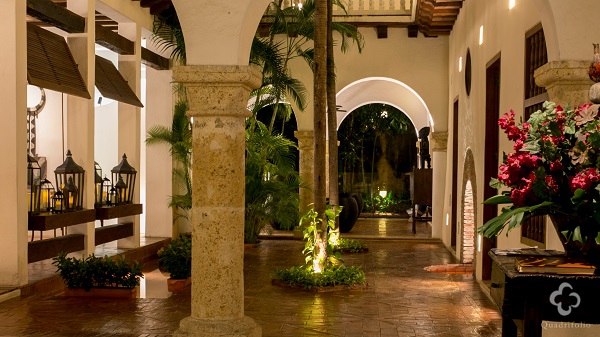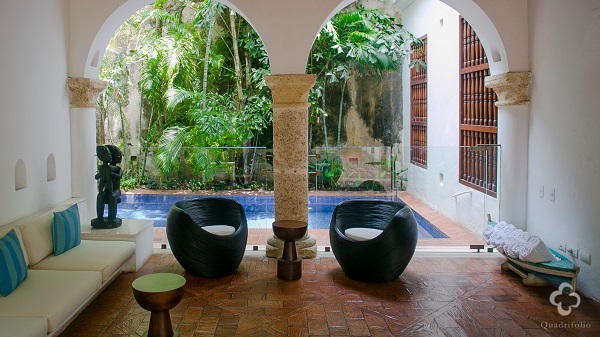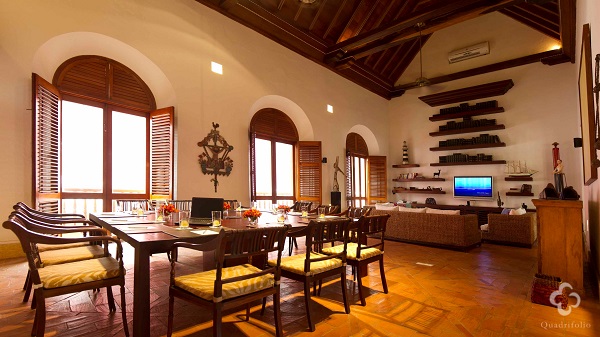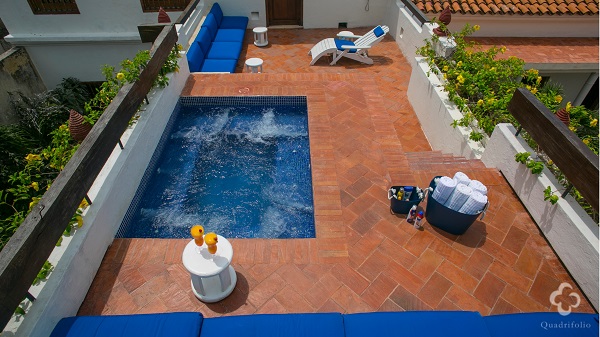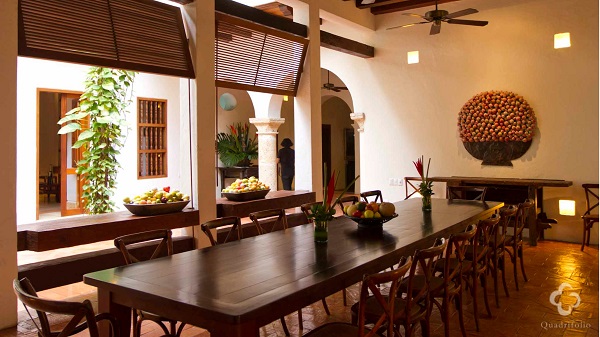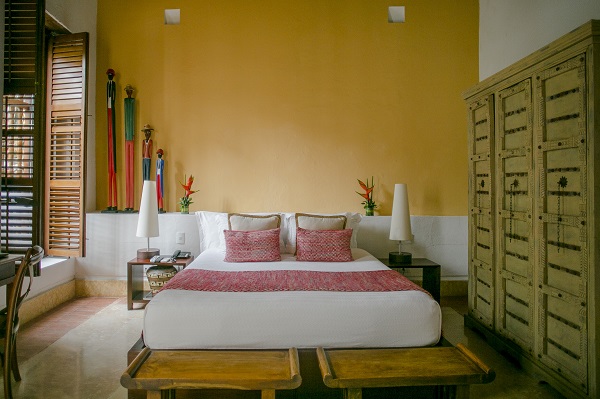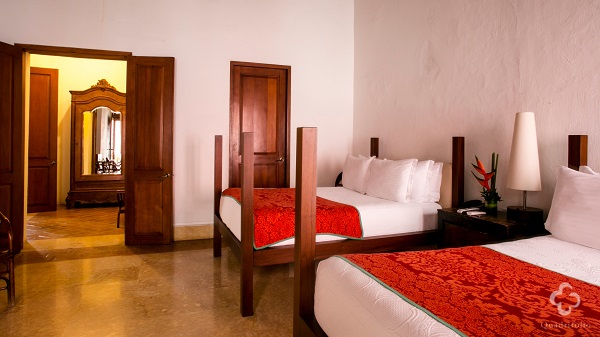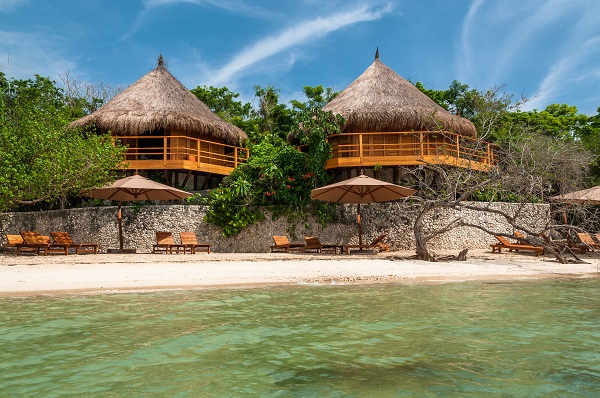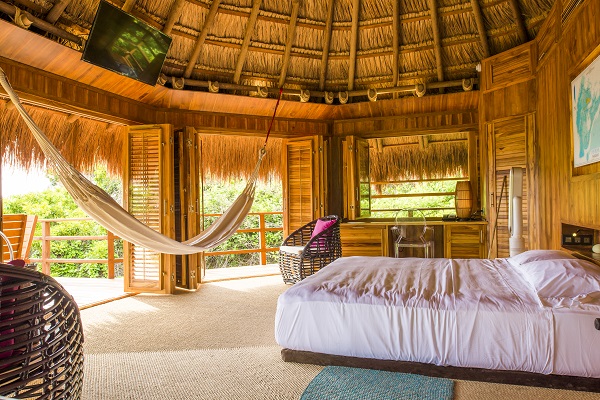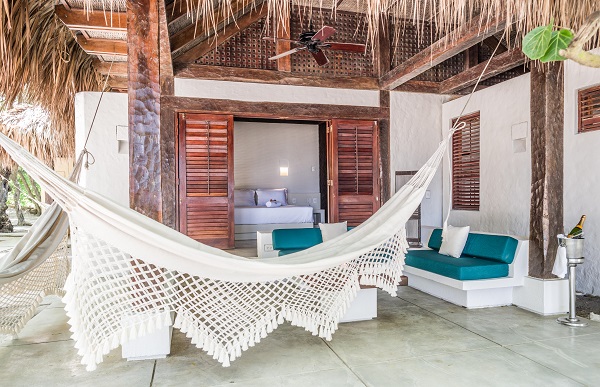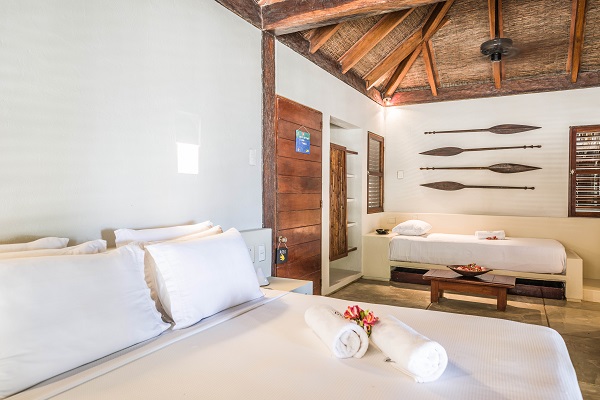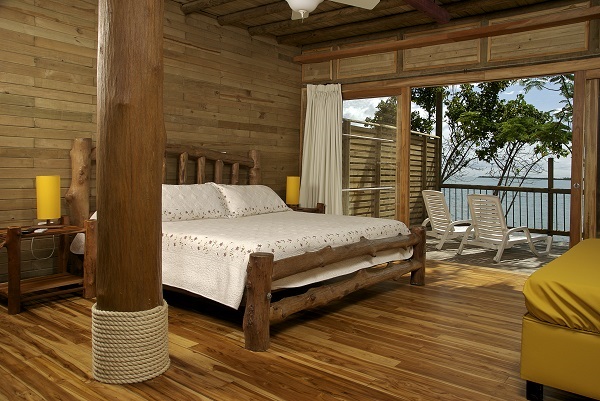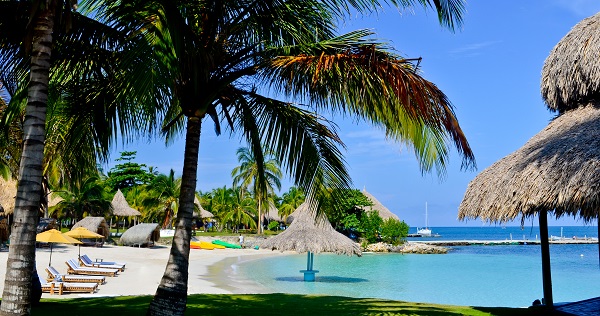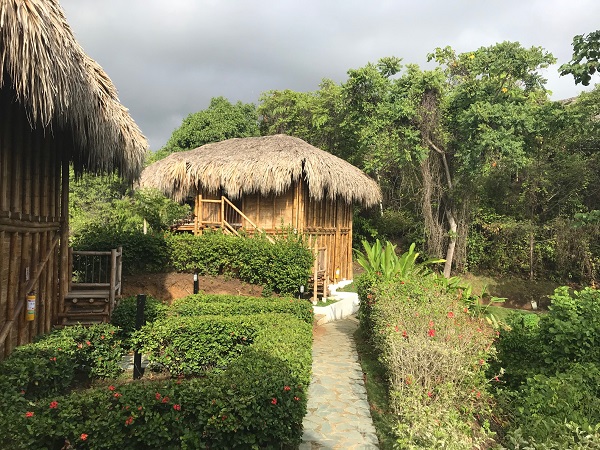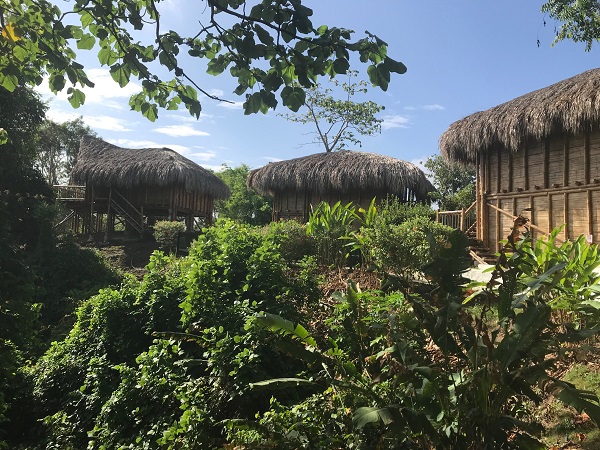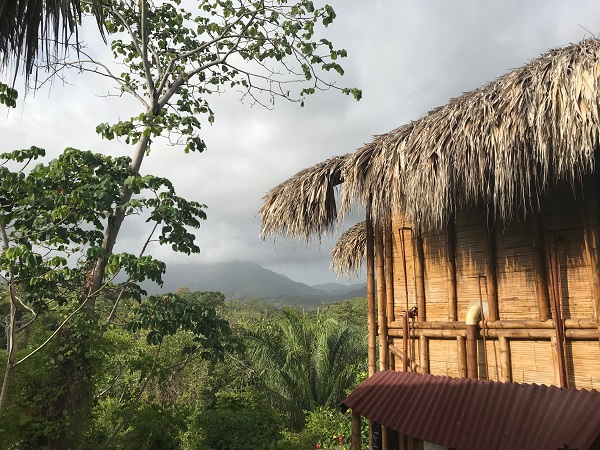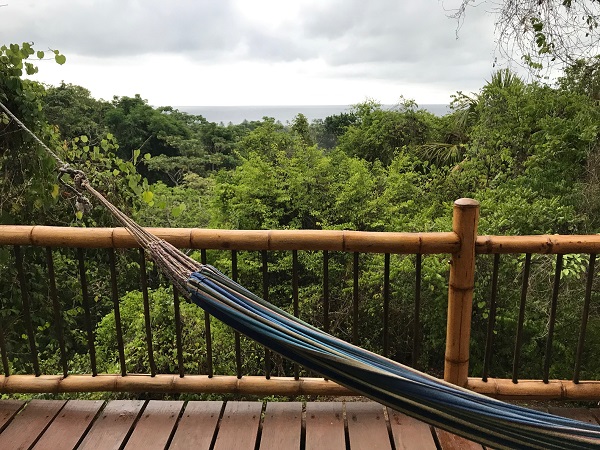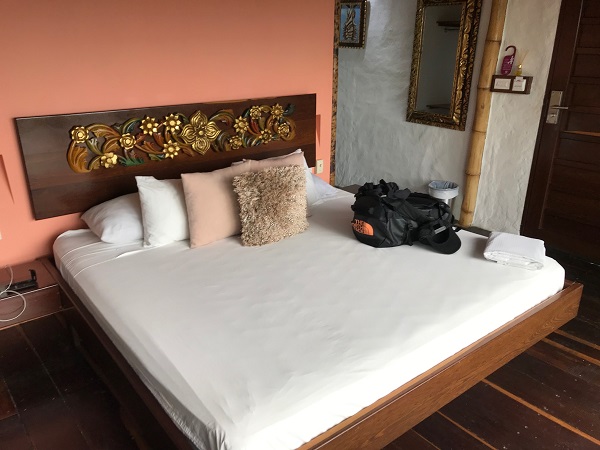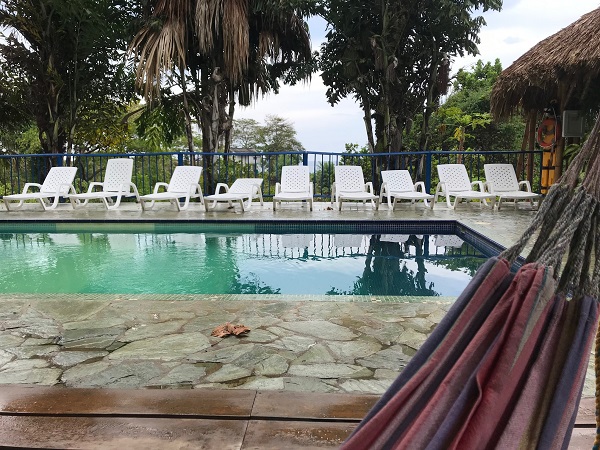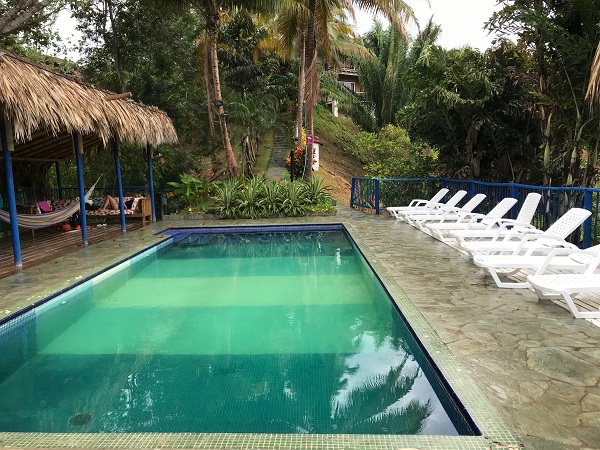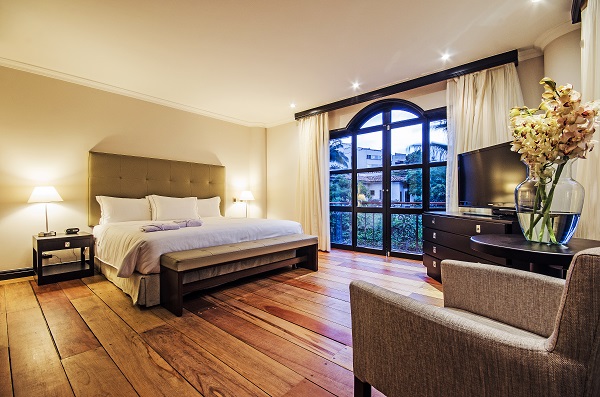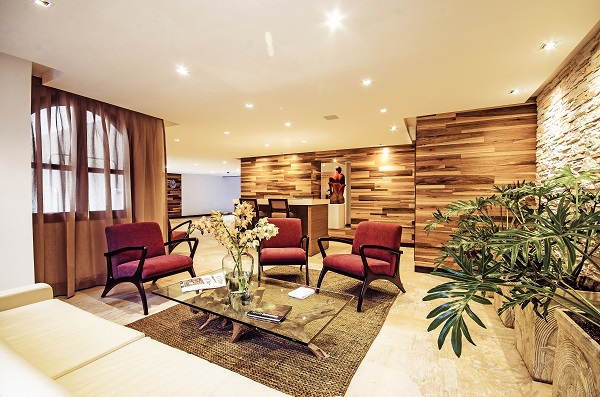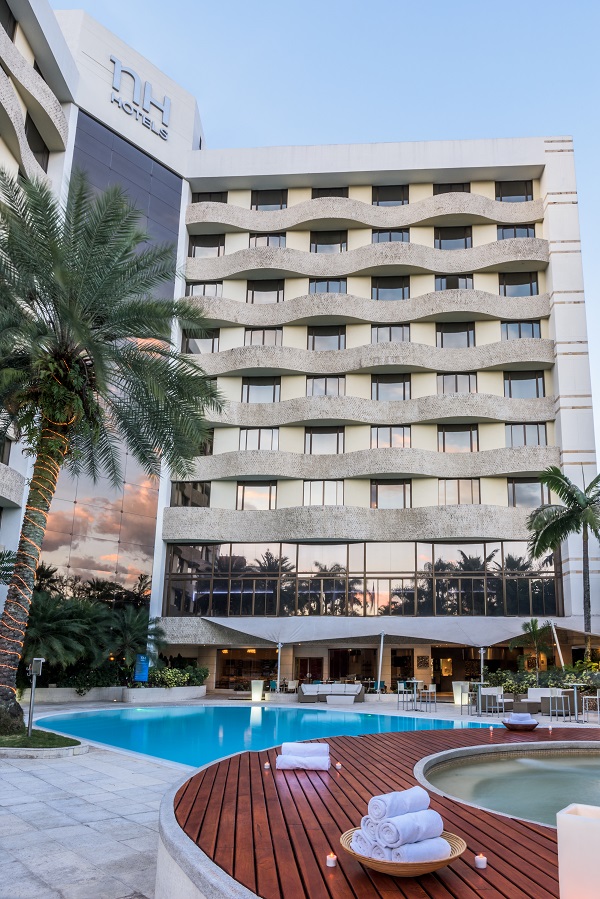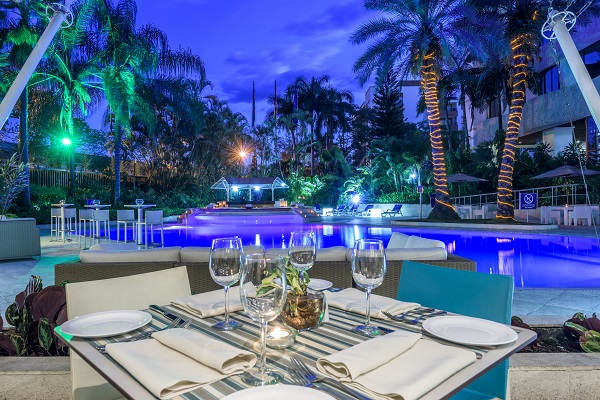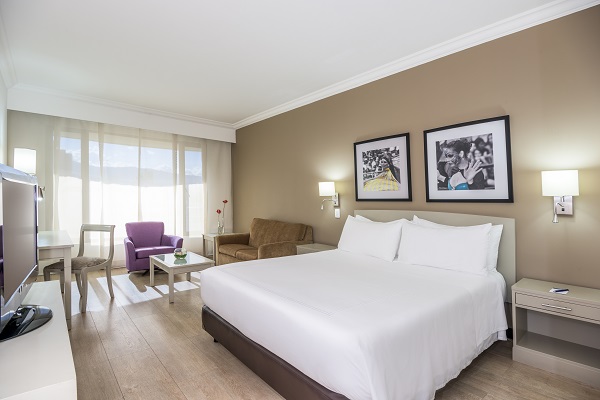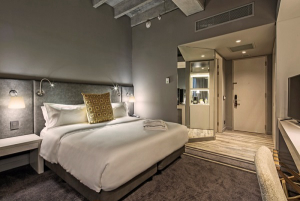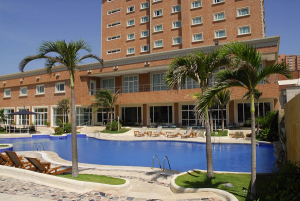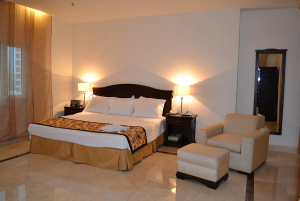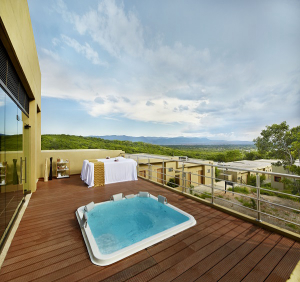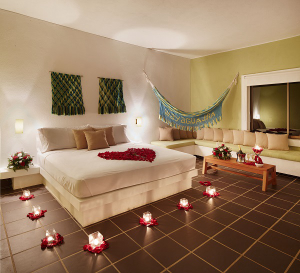Colombia is a wonderfully diverse country that offers many different experiences throughout. Admire the bustling capital of Bogota from Monserrate hill, mountainous regions with lush green landscapes, dotted with coffee plantations. The beautiful walled city of Cartagena with its colonial charm as it gazes upon the Caribbean Sea. Walk the trail at Tayrona National Park and enjoy its spectacular coastal scenery and unspoilt beaches as you walk through the jungle. Enjoy the energy and warmth of the smiles of the Colombian people and of course savour the delicious food! There is never a bad time of year to visit, it boasts a similar climate year round due to its proximity to the equator. Come to Colombia, it is waiting to be explored you’ll be pleasantly surprised by how much it will exceed your expectations.
To go back to the main Trip Merchant Journeys page to view other destinations click the logo below:
Step 1: Provides more information about this destination. In order to best use the Trip Merchant Tailor Made Journey builder, we recommend to first click on Step 2: Itinerary inspiration – Clicking on any of the itineraries featured will give you an idea of itinerary routings and pricing. Step 3: Select your accommodations in the towns/cities you want to stay at. Here you can choose which property is best suitable for you, as well as the number of nights you want in each. Step 4: Experiences – select which experiences are available based on the town/cities you selected your accomodations in (from Step 3). Step 5: Tailor Made Journey Builder will have compiled everything you have selected in the previous steps. You can always go back and make adjustments before completing the rest of the form. Once satisfied, click submit. A specialist will contact you within 48 hours to review what you’ve sent.
- STEP 1: Summary
- STEP 2: Itinerary Inspiration
- STEP 3: Accommodations
- STEP 4: Experiences
- STEP 5: TAILOR MADE JOURNEY BUILDER
Facts & Figures:
Official name: Republic of Colombia (República de Colombia)
Land area: 401,042 sq mi (1,038,699 sq km)
Total area: 439,736 sq mi (1,138,910 sq km)
President: Ivan Duque (Since 2018)
Capital: Bogotá, 10.574 million (2018)
Other large cities: Medellin 3.934 million; Cali 2.726 million; Barranquilla 2.218 million; Bucaramanga 1.295 million; Cartagena 1.047 million; Cucuta 913,000 (2018)
Currency: Colombian Peso
National Holiday: Independence Day (7/20)
Population: 47,698,524 (2017 est.)
Population Change: Growth rate: 0.99%; 16.1 births/1,000 population, 5.5 deaths/1,000 population, -0.6 migrant(s)/1,000 population; infant mortality rate: 13.6 deaths/1,000 live births (2017 est.)
Life Expectancy: 75.9 years (2017 est.)
Times of Year to go
Low Season (Oct–Nov)
Flash floods often wash out roads in the Andean region. Cartagena and the Caribbean coast are disproportionally wet in October. Low water levels in the Amazon mean excellent hiking and white-sand beaches. Prices everywhere are at their lowest.
Shoulder (Mar–Sep)
Bogotá, Medellín and Cali suffer a secondary rainy season in April/May. Best whale-watching is July to October on the Pacific coast. Cartagena shines through April, hard rains begin in May.
High Season (Dec–Feb)
Sunny skies and warmish days throughout the Andes. Dry everywhere but the Amazon. San Andrés and Providencia are gorgeous. Prices countrywide are at their highest.
Travel Tips
Dress in layers. Even though the temperatures throughout the year don’t change much, Colombia has a variety of climates depending on which city/location that you’re in. For example Bogota is over 2600 metres (8660 feet) above sea level so it won’t get much warmer than 18-20 Degress Celcius and tends to cool down several degrees in the evening. When you go to the coastal areas like Cartagena, expect temperatures of 30 degrees celcius and higher humidity.
Credit cards are widely accepted and there are lots of ATM machines available for you to withdraw money, especially in the major cities.
Altitude sickness – take it easy when arriving into Bogota, this is typically where most international flights will enter the country. Walk slower, drink lots of water, and don’t drink too much alcohol as it can dehydrate you and cause more issues with the altitude. It is normal to feel sleepy not long after arriving. If you want to go the top of Monserrate hill, don’t do it for the first day or two in Bogota, as its another 2500 feet in elevation. Give yourself some time to acclimatize.
Be aware of your surroundings, don’t wear lots of fancy jewellery or other displays of wealth, this can make you a target of thiefs, especially in places like Bogota and Medellin.
Drink bottled water, these are readily available everywhere.
Click Destinations Below to Learn More!
Barranquilla is known as the golden gate of Colombia due to its importance as a one of the busiest ports in the Caribbean during the XX Century. It is situated 13km inland from the Caribbean Sea and at the mouth of the Magdalena River which slices Colombia in half from north to south.
Barranquilla was the first city in Colombia to use the telephone, the first traffic lights and many other inventions. With such advances it quickly became the most cosmopolitan city in Colombia welcoming foreigners from all over the world. The area of Barranquilla was first settled by the indigenous Kamash people. The city itself was never formerly founded but the universally agreed date for this event is 1629 and the first reference to the area in Spanish chronicles was made by Gonzalo Fernández de Oviedo y Valdés in 1533 in which he describes the journey made by Pedro de Heredia, the founder of Cartagena, and the mention of an interesting region that would make for a good port.
Bogotá is the capital city of Colombia and the country’s most populated city. With almost eight million inhabitants it is the most important political city in the country. The city is situated in the geographical centre of Colombia at an altitude of 2640masl on a plateau known as the Sabana de Bogotá to the west of the Andes.
Bogotá’s privileged location means that it is blessed with a year round spring-like climate where the flowers are always in bloom. The average temperature is 14 C and fluctuates between lows of 4 C and highs of 28 C. December, January, February and March are the driest months; June and July the rainiest and August is hot and sunny with a strong breeze. Bogotá has a great variety of barrios or neighborhoods: the tall modern buildings are located in the Centro International and just beside is the bohemian Macarena district which takes in the Plaza de Toros. The historic centre is called the La Candelaria and is where the city was created and the seat of government and congress. Just north of here are the barrios of La Merced and Teusaquillo which are defined by having British architecture. Chapinero, Avenida Chile, Calle 2 and Calle 100 make up the commercial and financial districts. Further to the north is the colonial area of Usaquén formerly a town in its own right but now absorbed into Bogotá. To the West are the industrial barrios of Restrepo and Las Americas.
Bogotá today is a modern city with a bubbling cultural scene and vibrant social aspect. Picturesque, with an important architectural heritage, the most impressive collection of Pre-Columbian art in the world and fantastic museums it is also a city of futuristic architecture with enormous and modern building.
Founded in 1533, where the Caribe Indians used to be settled, the Spanish conquistador Don Pedro de Heredia founded the city of “Cartagena de Poniente” to distinguish it from “Cartagena de Levante” in Spain. Later the city became known as “Cartagena de Indias”, a name which remained until the end of the colonial era and the beginning of the Republic. This colonial city rapidly became the gem in the Spanish Crown’s territories. It was built up between the XIV and XIX centuries and in order to protect it from the continual attacks by foreign buccaneers and pirates, the largest fortification in the Americas was constructed around it.
Cartagena was the first province of the Nuevo Reino de Granada which gained its independence from Spain on the 11th of November 1811 and the city still boasts architectural treasures in its civil, domestic, religious, military and governmental constructions. Just walking through its narrow yet remarkable streets there is enough to understand why Cartagena is in the list of UNESCO World Heritage Sites. This colonial area is split into three zones, the Centro, San Diego (both inside the wall city) and Getsemaní. This whole city harks back to a time when pirates routinely attacked the bay and when the Spanish Inquisition executed a great number of slaves accused of witchcraft; furthermore strict rules were installed by the Dominicans who had the right to cast judgment over whomever they wished. The real joy of Cartagena is exploring its streets on foot, an experience that awakes all five senses with the rhythms of cumbia and mapalé, with the flavors of the Caribbean, the blend of the natural world against the variations in architecture all the while buffeted by a Caribbean breeze making the cityan incredibly romantic destination.
Aside from the centre of the city is Bocagrande, a long spit of land that is home to the majority of modern buildings and hotels, connected to the barrios of El Laguito and Castillo Grande which make up part of today’s modern city. The outstanding beaches of the Islas del Rosario, Barú and Playa Blanca are located at approximately 45 minutes by boat from Cartagena. Culturally, Cartagena is renowned for its Cinema Festival; it is the hostcity of the Hay Festival and is the seat of the National Beauty Pageant each November, the same month as the independence celebrations.
The cultural wealth that Cartagena enjoys is a result of the mix in backgrounds of the city’s inhabitants and its architectural beauty. The sea and the warm afternoon winds make Cartagena one of the Caribbean’s most fascinating cities.
The Guajira peninsula is the northern most point in Colombia and South America spanning an area of 20,848km2. It is bordered by the Caribbean Sea to the North, Venezuela to the East and to the West and South the Colombian Departments of Magdalena and Cesar respectively.
This peninsula that makes up the Department of the Guajira is divided into three sections: the lower and south, where the departmental capital of Riohacha is located, it was founded in 1545 as Nuestra Señora Santa María de los Remedios del Cabo de la Vela; Mid Guajira borders Venezuela and Upper Guajira is the dramatic collision point of deserts; and the upper where the ocean creating paradisiacal locations such as Cabo de la Vela and Punta Gallinas.
The Guajira is a place that never ceases to surprise due to its extreme contrasts: the brilliant white of the vast salt flats of Manaure – small mountains of white salt glistening beneath the merciless sun-, pink ibis with white and black flecks colour the sky in cacophonous flight between the lagoons in the Flora y Fauna Los Flamencos nature sanctuary and then there is the deep black of the coal extracted from the mine at El Cerrejon. Aside from salt and coal the Guajira is bathed by a crystalline sea that laps onto beaches of desert sand. The cacti that grow enhance the justifiably savage imagery and the long rises of the sand dunes are a reminder that this is an inhospitable land of myths and legends.
The Wayuu indigenous people of the Guajira and their legends make this territory all the more intriguing. They are nomads who live autonomously across the porous border that divides Venezuela and Colombia with no concern for national borders. The Wayuu are a matriarchal society organized into clans and that place supreme importance in their traditions, in particular that of the “palabrero” who is designated to resolve conflicts between the clans. Wayuu men are polygamous but before entering into a marriage the man has to reach an agreement with the bride’s family regarding a dowry of goats and precious stones. The Wayuu live in what are known as “Rancherias” small communities made up of family members that dedicate their time to fishing and weaving. This region is renowned for producing colourful handmade hammocks and “mochilas” of resounding beauty and artistry. Visiting the Guajira is an immersion into a local culture rich in traditions, simplicity and native customs. Things here are tough but the basics are done well making one’s visit pleasant and unforgettable.
Medellín, the capital of the department of Antioquia, is located deep in the fertile and mountainous Aburra valley in the central Andean highlands. It is at an altitude of 1538masl which gives this city an eternal springtime with an average climate of 20°C.
In 1541, roughly, the Spanish named this valley as San Bartolomé. Later, on 1616, under the orders of Francisco Herrera Campuzano, the land where today the barrio of El Poblado is located, was renamed San Lorenzo de Aburrá. This name, Aburrá, stems from a translation from the Aburraes and Yamesíes indigenous tribes which most likely refers to the embroidery in the cotton and textile work that these pre-hispanic people used to do, prior to the arrival of the colonial invaders. Then, on November 2, 1675, the Villa de Nuestra Señora de la Candelaria de Medellín was founded.
Originally Medellín was a modest, humble town which is evident from its colonial buildings that are far from sumptuous, and whose origins date back to the coffee boom of the 20th Century. Once coffee fever had taken hold of Medellín, the city’s economic development began in earnest and the Federación Nacional de Cafeteros de Colombia was created on June 27, 1927. From here on, the city was transformed thanks to the resourcefulness and hardworking nature of its citizens, the Paisas, as thepeople of Medellín are known. While the city initially flourished, things stagnated somewhat in the 1980s at the height of the narco-trafficking period leaded by Pablo Escobar. The name Medellín became a by-word for drugs, violence and the narco-mafia. After a disastrous era of severe violence the city has, for the most part, turned the page on these dark days and the population, showing its strength, has made clear its desire to associate the city international image with its real values: the thriving cultural life in the fields of journalism, literature, urban and fashion design, as well as the artwork and sculptures of the globally renowned artist, Fernando Botero. Furthermore, Medellín has become a bustling city of industry and commerce, especially textile manufacturing and exported cut flowers, which represent the best example of the whole country social transformation.
The city is well worth visiting during the annual Flower Festival, held over two weeks during July and August. The key events and perhaps the most interesting are the exhibitions of orchids, birds and flowers and the most representative parade, that of the Silleteros. During this procession the participants carry floral displays weighing up to 60 kilos each. The name “silletero” comes from the tradition that these farmers used to, and indeed still do practice, of carrying their children on chairs. However, this tradition has become a cultural phenomenon and rather than carrying children, the farmers transport these heavy floral arrangements instead.
The town of Popayán is a small and perfectly formed colonial town often referred to as the White City due to the prevalence of the chalk-white facades of the homes and buildings in the historical center. Founded in 1537 by the Conquistador Sebastián de Belalcázar, it played an important role in colonial times as it was the middle point in the journey between Cartagena and Quito. Its temperate climate attracted many wealthy colonial landowning families from the Valle del Cauca and Cali in addition to gold prospectors from Barbacoas in Chocó. These settlers built stately houses in Popayán and equally fine churches decorated with artwork brought from Spain. Popayán was an important administrative point in the times of Nueva Granada and was, besides Santa Fé de Bogotá, the only town to have its own coin mint.
Popayán’s historic center is one of the most beautiful and well preserved in Colombia with important houses that have become heritage symbols such as Casa Museo Mosquera, a mansion that was once home to General Tomás Cipriano de Mosquera, a Colombia’s President on four occasions. The Casa Museo Guillermo León Valencia is dedicated to the Popayán born poet who once lived here. There are also stunning churches such as the Iglesia de San Francisco, the largest and most beautiful in town; the Iglesia de Santo Domingo; Iglesia de San José as well as the oldest, the Iglesia La Ermita. Although the original town was damaged by
a 1983 earthquake, all of the historic buildings were completely restored. Popayán is also famous for its Easter Week processions a tradition from colonial times which its inhabitants have lovingly preserved. In 2009 Popayán’s Semana Santa celebrations were declared by UNESCO as an Intangible Cultural Heritage of Humanity.
The archipelago of San Andres, Providencia and Santa Catalina is located to the northwest of the Colombian mainland in the Caribbean and was declared a UNESCO Biosphere reserve in 2000. It is believed that the islands were first discovered by Christopher Columbus on his second journey but they were administered by the English from 1631. This led to a period of colonisation, in particular, by people of African descent. In 1670 the infamous pirate Henry Morgan established his base on the island of Providencia and there are still some who believe the legends that some of his treasures remain buried here. Due to the history of the archipelago the language spoken on the islands is a patois, the mixture of English and Spanish.
For many reasons the archipelago is a combination of backgrounds; it is geographically close to the coast of Nicaragua; has strong historical ties to England and politically makes up part of Colombia. For all of the aforementioned reasons the archipelago has many cultural contrasts to compliment the breathtaking scenery which all make this an interesting yet paradisiacal destination set to the lilting
rhythms of reggae. The average water temperature all year round oscillates between 27 and 29oC.
San Andres is the largest island in the archipelago and is the administrative and financial centre and has drawn in tourists for several decades. It is well known for its beaches, some with pink coral in the sand, the sea of seven colours with its clear turquoise blue waters in varying tones, its points of interest such as Johnny Cay found just a ten minute boat ride from San Andres, Morgan’s Cave, where supposedly the pirate hid some treasures and other fantastic places.
Providencia offers similar beautiful landscapes and it is the second largest coral reef in the northern hemisphere. The island is known for its colonial history, its inhabitants, its Caribbean style colourful wooden slat houses and its tranquillity. The island is a 20 minute flight from San Andres or an 8 hour boat ride. The 17km2 of empty bays found here make this an ideal location or enjoying the sea and the beach, perfect for relaxing or water sports such as scuba diving or snorkelling.
Santa Catalina is another small island in the Caribbean and is connected to Providencia by a colorfully painted wooden bridge. There are 57 different types of coral here, 12 species of mangrove, three types of marine plants and four types of sea turtles that lay their eggs in this area. It is as if the island is situated surrounded by some of the most beautiful and complex coralline formations in the world.
Founded on July 29 1525 by the Spanish Conquistador Rodrigo de Bastidas, Santa Marta was the first city in Colombia and therefore is the oldest in South America. It was the port of entry for those looking to conquer the New World. Its privileged location was chosen for its security and for its beauty, between the Caribbean Sea and the Sierra Nevada de Santa Marta, where the twin peaks of the highest coastal mountains in the world, Simón Bolívar and the Cristóbal Colón, at 5770m above sea level tower over proceedings. There is a vast array of flora and fauna as well
as the proximity to the Tayrona National Park, all which make this not only culturally rich but a supremely attractive and desirable place to visit.
The Tayrona indigenous people strongly resisted the conquistadores but by the end of the XVII Century most of their treasures had been moved to Spanish chests.
Santa Marta boasts a great wealth of history as is here that the first President of Gran Colombia and hero of the independence movement Simón Bolívar passed away on the 17th of December 1830. It happened in a hacienda that still exists called Quinta de San Pedro Alejandrino.
Nowadays, this hacienda acts as a museum exhibiting the history of the great Liberator and is surrounded by beautiful and lush gardens with monuments and many trees. Approximately fifteen minutes northeast from Santa Marta, a zigzag route brings you to a characteristic fishing village of Taganga. Nestled deep in a bay and surrounded by green mountainous vegetation, the landscape here is one of contrasting colours, the blues of the sea washing onto the beach, making this a magical and unforgettable destination. Observe the traditional fishing practices of the locals, view their canoes and see that all knowledge here has been passed down from generation to generation.
This is a particularly good location for watersports such as snorkeling and diving and is the departure point for boat trips to Playa Blanca, so named for the colour of the sand here. It is easy to reach different beaches of Tayrona National Park as well as the Sierra Nevada de Santa Marta, from Santa Marta or Taganga, by travelling just 45 minutes.
Tayrona National Park is located on the Colombian Atlantic coast a few kilometers from Santa Marta. The park’s boundaries extend from just beyond the bay of Taganga to where the Piedras River opens out into the sea. The National Park covers an area of 15,000 hectares, 75% of which are of land and the remaining are marine. Climate oscillates between temperate and hot with an average temperature of 25 to 30oC. One of the main entries to the Park is found at El Zaino, 34km from Santa Marta, from here one can gain access to the bays, natural beaches, coral reefs, mangroves, mountains and exuberant vegetation found within. Many types of animal inhabit this area including more than 100 mammals, 200 birds and numerous reptiles. It makes up part of the Sierra Nevada de Santa Marta, a mountain range separate from the Andes that makes for a unique ecosystem that rises up from absolute sea level where there are beaches of fine white sand through tropical forests to snowcapped altitudes of 5,770masl.
In Tayrona National Park there are various archeological sites that prove the existence of ancient cultures such as the Tayrona city of “Chairama”(in the indigenous language) or Pueblito, where it is believed that a community of at least 400 indigenous people inhabited in the pre-Columbian period and where still exist points of interest sacred to the Koguis, Arhuacos and Arsarios. These tribes are all descended from the ancient Tayrona people who were one of the most advanced
pre-Columbian tribes to have lived over the centuries in the Sierra Nevada.
These towns and cities were joined by Stone pathways which extended from populous mountainsides up to the peaks in the Sierra. These were circular windowless houses with stone terraces, palm roofs and painted with a whitewash. The real accomplishment of engineering were the cities that were built upon
terraces that were first used for agricultural purposes and then later for homes. They channeled the mountain streams through their homes and through their crops to be sure to prevent an erosion of the land.
From the bay of Cañaveral a three hour hike over stone pathways leads to Pueblito, one of the most well-established Tayrona developments given the prevalence of bridges, channels, terraces and pottery. The beaches of Arrecifes, La Piscina, Cabo de San Juan del Guía y Castilletes are within reach from Cañaveral as well. These beaches are all very distinct, some with still inviting waters, others with turbulent surf and thick with vegetation but all making the visitor feel as if he or she has been transported to another world, one of savage yet paradisiacal scenery. In the park itself there are many opportunities to enjoy such activities as mini treks, snorkeling, bird watching, kayaking, rent bicycles or just contemplate nature.
Words used to describe the Amazon can seldom to do any justice to this remarkable place that stays imprinted on the memory. The incredible size of the Amazon River, an irrepressible source of life, and the crisscross pattern of the smaller tributaries that splay out through the jungle leave an indelible impression.
The Amazon is the second longest river in the world after the Nilo River. His water source receives the runoff of hundreds of rivers and streams that extend all the way from the Peruvian Andes north of the city of Arequipa representing the source of the 20% of fresh water in the planet. It runs for 6,275 kilometres from the Andes Mountains to Pará in Brazil, passing through the main cities as Iquitos (Peru), Leticia (Colombia) and Manaus (Brazil).
The city of Leticia is located on one of the banks of the Amazon River in the heart of the most resplendent and exuberant forest on earth. An imaginary line is drawn here creating a frontier between three countries: Colombia, Brazil and Peru. Leticia is the capital of the Colombian Amazon Department and the arrival port for flights from Bogotá, boats from Iquitos (Peru) and Manaus (Brazil) and the departure point to explore the area. It was founded in 1867 as San Antonio and was originally a
Peruvian town until 1922 when it was ceded to Colombia and renamed becoming this country’s access to the “Green Lung”. The expeditions launched to explore the jungle towards Manaus and Iquitos all departed from Leticia.
It rains frequently in the Amazon but the wettest season is between February and April. The waters of rivers reach their highest levels from February until the start of June thus making it the best time for bird-watching, piranha fishing, pirarucu (sport fishing) and seeing the Victoria Regia – an enormous aquatic lily plant with large purple flowers, white petals and floating leaves that can reach up to two meters in diameter. In this season, it is a little bit easier to see forest animals and
reach most places by boat.
The driest months are in July and August. Rivers are at the lowest water levels from August to November, when many beaches are created by the retreating waters at the riverbanks, and this is when the river turtles lay their eggs. During this season, it will be more comfortable to explore the area as paths will be less muddy and there will be fewer mosquitos, but many places would have to be reached by land, therefore requiring longer walks.
Numerous indigenous communities live in these areas including the Huitotos, Yaguas and Ticunas all of whom have protected their cultures and traditions passing down their practices from generation to generation such as their knowledge of medicinal plants, magic, ceremonies and aptitudes for survival in the jungle. 75 km and 2hrs by boat from Leticia in the upper Amazon River is the town of Puerto Nariño which is considered the cradle of life of the Amazon for its natural and cultural setting of peace and harmony. This community is located on the banks of the river Loretoyaco where motor vehicles are outlawed and the only way of getting around is on foot.
Puerto Nariño probably shows one of the purest and clearest examples of community’s concept, where people are deeply involved with the environmental issues, the preservation of sea fauna and green-life, living free of smog and pollution. The Tarapoto Lake is nearby and its waters are like a natural aquarium as it is home to grey and pink river dolphins.
The town of Villa de Leyva, located 207 km from Bogotá at an altitude of 2,140m, was founded in 1572 by Hernán Suárez de Villalobos who named it after Andrés Díaz Venero de Leyva, the first president of Nueva Granada. Before the arrival of the Spanish, the area was inhabited by the Muiscas, a Chibcha-speaking people who built their main astronomical observatory at the site of the current town.
Villa de Leyva is one of the most beautiful towns in the area and is ideally explored on foot. It was declared a national monument in 1954 and has remained free of modern constructions. It is as if one can still breathe in the atmosphere of colonial times when visiting the expansive Plaza Mayor which at 14,000 m2 is the country’s largest. This special atmosphere does not end at the Plaza as it courses through the surrounding cobblestone streets; the Cathedral; the house of Antonio Nariño,
home to the Independence hero; the home of Antonio Ricaurte, who fought under Bolívar and is known for his heroic sacrifice during the battle of San
Mateo; the House of Congress where, on October 4th, 1812, the first Congress of the United Provinces of Nueva Granada took place; the Colonial Art Museum; The Monasterio and Convento del Carmen.
The Museo del Maestro Acuña is a worth a visit. Named after the artist, a painter, sculptor and writer. Acuña, along with other artists, created the Bachue movement, which can be seen here, and which sought to recover the essential feeling and atmosphere through art of the Chibcha ancestors. The Museo del Maestro Acuña also displays colonial objects, musical instruments and furniture. Likewise, there is the Fossil Museum, founded in 1977 and located 5,5 km away from Villa de
Leyva. The museum was built exactly at the place where a kronosaurus, a marine reptile of more than 120 million years and 20 metres in length, was discovered. On the outskirts of the town, there is also “El Infiernito”, a pre-Hispanic Muisca site, where around 30 stone columns known as megaliths are located. It is believed that these columns are about 2,200 years old, and that this space was reserved for the cult of fertility by the phallic shape of the stones, others, on the other hand, affirm that it was used as an astronomical observatory.
A few kilometers from Villa de Leyva and not to be missed is the Convento del Santo Ecce Homo, founded by the Dominicans in 1620 and considered a most outstanding Spanish legacy. The pavement is made of local stone embedded with fossils, and the chapel has a magnificent golden altarpiece with a small Ecce Homo image.
Nearby Villa de Leyva also there are many towns, each with its particular curiosity such as Ráquira which in the Chibcha language means “city of the pots” and therefore is known as the Colombian town that specializes in fine handmade ceramics; Sutamarchán, famous for its gastronomy, especially longaniza and morcilla spicy sausages and the Tomatina Festival, which comes from a
Spanish tradition; and Tinjacá known for its tagua (the seed of palm) handicrafts.
Below you will find an itinerary or itineraries that will not only inspire you, but to give you a better understanding of what you can include on your journey to this country!
Below you will find a list of hotels that can accommodate different star ratings / budgets. You will find a list of destinations within the country and in each destination it will feature different hotel accommodations available to include on your trip. Simply click and check off the boxes where it says “Add to Journey” for the hotels you wish to include in your itinerary and type in the amount of nights for each!
Hotel Rating Legend
Hotel Rating Legend
Luxury – An exclusive, marquee property offering the highest standards in accommodations and facilities. Guest and public rooms are luxurious, the service is impeccable.
Deluxe – An excellent property, offering a high standard in accommodations and public rooms. Full range of services, amenities and facilities.
Superior – An above average property, with very comfortable accommodations and public rooms. Usually provides a full range of services, amenities and facilities.
Medium/Comfortable – A nice and comfortable property, limited range of facilities with comfortable well maintained accommodations.
Hotel Four Seasons Casa Medina (Luxury)
Converted into a hotel in 1988 and built in 1945 by Don Santiago Medina, Hotel Four Seasons Casa Medina combines French and Spanish architecture. For the construction, the architect used pieces of two colonial convents that have been demolished for this reason, the hotel is a mixture of history and contemporary design. The building was declared a monument of cultural interest by the Colombian Ministry of Culture. Casa Medina hotel offers a comfortable stay for business and tourist guest due to a personalized service.
Location: Nearby one of Bogota´s main financial and commercial districts. The hotel is within a walking distance of the gourmet zone known as Zona G and recognised for its wide range of upmarket restaurants. It is approximately 40 minutes from El Dorado International Airport and about 30 min to the historic area of La Candelaria.
Sofitel Bogotá Victoria Regia (Deluxe)
Sofitel Victoria Regia refers to an elegance water lily that grows in the Amazon. The renowned architect Miguel Soto has achieved a fine blend of elegant and modern French style, with Colombian features, creating a welcoming and distinctive design. Elegance, comfort and the exceptional personalized service are the main identity signs of this hotel.
Location: It has a key location in the northern area of Bogota at La Cabrera neighbourhood, at a walking distance from La Zona Rosa. This area is well known within the city for its selection of designer boutiques, a varied gastronomy and entertainment options, night life and shopping centres such as Centro Andino. It is approximately 45min from El Dorado International Airport and 40min to La Candelaria colonial area and its tourist attractions.
The Artisan DC Hotel (Deluxe)
The Artisan D.C. Hotel offers an Urban Boutique experience. The hotel’s design was inspired by Colombian artisans, which constructed all the hotel’s wood furniture.
Location: In Rosales neighborhood, at a walkable distance of Zona G, one of the most important gastronomic areas in the city and very close to Parque de la 93. It is 30 min from the El Dorado International Airport and La Candelaria historic center.
Hotel Cité (Superior)
Cité Hotel is a modern, exclusive and chic hotel offers an absolutely quiet and a well-being environment. Hotel’s staff is completely dedicate to each guest personalizing service and being exigent in every single detail.
Location: Cité Hotel has a key location in the northern area of Bogota, at Chico neighbourhood, just next to El Virrey Park. It is at a walking distances from la Zona Rosa and its Zona T as well as from the Parque de la 93; both areas are well known within the city for its selection of designer boutiques, a varied gastronomy, entertainment alternatives, night life options and shopping centres such as Centro Andino. It is approximately 40min from El Dorado International Airport and La Candelaria colonial and historic district respectively.
Hacienda Santa Clara (Medium)
A boutique hotel located in Colombia’s coffee belt, declared a Cultural Landscape by UNESCO. They offer accommodation experiences in a natural setting with coffee tourism, community tourism, hiking, thermal baths, coffee tours and birdwatching. They promise their guests will enjoy coffee-making hospitality with simple yet extraordinary moments in our large mansion with architecture symbolic of the coffee landscape culture. Their 19 rooms are divided across two floors in a building that dates back to 1925, but which was restored while maintaining its history. They offer gastronomy experiences representing local flavours. In addition, they have a terrace where you can enjoy the best of their coffee, or cocktails in their Coffee Library Bar overlooking their gardens. Their location in the middle of the coffee belt means they are just 25 minutes from Matecaña International Airport.
Patio del Mundo (Superior)
The Patio del Mundo is a restored villa in the heart of the most vibrant district of Medellin, El Poblado. The French owners have created a unique oasis in the city with individually designed rooms and manicured gardens.
Location: The hotel is a 40-minute drive from the international airport and around a 10-minute walk to Parque Lleras, so has the advantage of being close to bars and restaurants but far enough away from the crowds to offer a peaceful stay.
Facilities: There are 7 individually designed rooms that are all themed with a specific destination in mind. All rooms have king or queen size bed (two rooms can be made up as a twin) and spacious bathrooms and showers. Two rooms have a private Jacuzzi and three rooms have private terraces and the majority have views of the garden. All rooms feature: Cable TV, free Wi-Fi, amenities, safe, mini bar and desk. The rooms do not have air conditioning.
Hotel Park 10 (Superior)
Designed to resemble and English house the Hotel Park 10 is decorated with wood, marble and stained glass.
Location: The Hotel Park 10 is situated in El Poblado district, 35km from the José Maria Cordoba International Airport.
Facilities: The hotel offers a total of 55 rooms: 30 Standard rooms (25 with extra-queen bed and 5 Twin), 15 Luxury Premium rooms fully remodeled (10 with extra-queen and 5 Twin), 4 Junior Suite rooms (one of these for people with reduced mobility), 5 Grand suites over 2 floors (2 of these with jacuzzi) and 1 Presidential Suite with jacuzzi and 2 floors. All rooms with Internet, telephone with voice mail, fax, air conditioning, minibar, cable T.V and a safety deposit box.
NH Collection Medellin Royal (Superior)
The hotel offers high security and standard services, as well as a modern infrastructure surrounded by gardens and streams.
Location: In the El Poblado district. 15 minutes from the International convention center and 16km from the Jose Maria Cordoba International Airport and 2.8km from Enrique Olaya Herrera Airport.
Facilities: The Hotel has a total of 134 rooms: 124 Superior rooms, 9 Suites and 1 Suite Presidential room, all equipped with air conditioning, Internet service, safety box, cable T.V., minibar.
Hotel Mansion Guatapé (Medium)
A magical and unique place in Guatapé, where you will live unforgettable moments with the best service at your disposal while enjoying our privileged location.
Hotel Mansion Guatapé, a paradise.
An easily accessible hotel, with main entrance. Excellent location just 500 meters from the entrance to Piedra del Peñol, and with direct access to the dam. We have our own catamaran which allows the experience in our hotel to be even more special. Our wet area has a swimming pool with waterfall, jacuzzi, Turkish, sauna, freshwater showers and private solarium. Large restaurant with delicious food, game room, wifi and DIRECTV.
Sofitel Legend Santa Clara Cartagena Hotel (Luxury)
Iconic hotel, where heritage meets modernity.
The Sofitel Legend Santa Clara is a hotel filled with stories. Housed in a former convent, it offers the perfect blend of colonial architecture and French luxury. Its privileged location is close to Cartagena’s main tourist attractions. Enjoy the comfort of the rooms and suites, as well as personalized service, gourmet cuisine, an upscale spa and meeting rooms offering modern technology for events, conventions and weddings.
Bastion Luxury Hotel (Luxury)
Bastion Luxury Hotel is found in the walled city of Cartagena de Indias. It is a hotel with the charm of colonial style Cartagena in harmony with the comfort of a modern day luxury hotel.
Location: The hotel is located in the beautiful city of Cartagena situated on the coast of the Colombian Caribbean Sea and was one of the first ports in the Americas in the Spanish colonial period. In 1984 it was declared UNESCO world heritage site.
Facilities: A total of 51 luxury rooms divided into 17 Bastion rooms, 11 Bastion Superior rooms, 17 Bastion Premium, 4 Bastion Deluxe, and 2 suites. All of them have a contemporary decoration including various colonial touches. They come with a view of our almond tree patio or the water-courtyard.
Casa San Agustín (Luxury)
Casa San Agustin is a luxurious small hotel constructed in three colonial style buildings from the XVII century that have been lovingly re-built and re-imagined whether for tourists or business travellers. From original frescoes in the library to centuries-old wood-beamed ceilings in the guest rooms, Casa San Agustín’s art and architecture evoke the city’s rich history as 17th century Spanish stronghold in a unique and magic ambience.
Location: It is located in the heart of Cartagena de Indias’ walled and old city, at 5min walking from Simon Bolivar Square where guest will find the Gold Museum and Inquisition Museum among other attractions. Rafael Núñez International Airport is located 10min drive from the hotel.
Anandá Hotel Boutique (Superior)
Ananda is a Sanskrit word that means happiness, joy; it represents the highest state of bliss. According to Hinduism, to reach Ananda is to reach the highest state of being, releasing the mind from its consciousness of the body. Thus, the main objective of Ananda Hotel Boutique is to make the stay every this restored XVI century colonial house a unique experience, based on a state of happiness.
Location: In the heart of Cartagena de Indias’ walled and old city, just 5min walking distance from Simon Bolivar Square where guest will find the Gold Museum and Inquisition Museum among other attractions. Rafael Núñez International Airport is around a 10min drive from the hotel.
Hotel Quadrifolio (Deluxe)
The hotel operates under the grandeur of a Spanish Colonial residence built during the first half of the XVII Century. It was restored under the most rigorous conservation standards, bringing back its original style. The Quadrifolio represents a four-leaf clover, a bearer of good fortune. Furthermore, every leaf represents the principles hotel: elegance, privacy, comfort and service.
Location: It is in the heart of Cartagena de Indias’ walled and old city, at 5min walking distance from Simon Bolivar Square where it is the Gold Museum and Inquisition Museum among other attractions. Rafael Núñez International Airport is located 10min drive from the hotel.
Hotel Las Islas (Deluxe)
Las Islas is a hotel to rest in the middle of the nature, facing a turquoise sea with white sand beaches. It has the high standards of hospitality and quality that characterizes affiliated establishments of “The Leading Hotels of the World”.
Location: Located on Isla Barú, one of the thirty islands that comprise the archipelago nestled in the cove of Cholón, about 45 minutes from Cartagena by boat. Also, you can arrive by land in a journey that ranges from 45 minutes to an hour and a half from the international airport of Cartagena. From there, guests are transferred by private boat to the hotel (10-minute journey).
Facilities: Offers 54 bungalows, divided into 22 Bungalows in front of the sea y 32 Top Tree Bungalows (with stairs to access) and 1 Suite Bungalow. Each bungalow has the name of a Colombian island. All include hammock, air conditioner and roof fan, private bathroom, Satellite TV, phone, safety box, Wifi, minibar, Expresso machine, iron and ironing table, alarm clock, hair dryer, electronic device repellent of insects, Hermes amenities and hot water.
Hotel San Pedro de Majagua (Superior)
The hotel was built with distinctive island architecture with an emphasis on respecting nature and the majestic rubber trees which Pierre Daguet, the painter, took protected during the last years of his life.
Location: Located on Isla Grande in the Parque Nacional Natural Corales del Rosario y San Bernardo, 24 miles from Cartagena.
Facilities: The hotel offers 17 rooms with marine names such as Snail, Dolphin or Octopus* distributed in 4 suites, 5 Junior Suite and 8 standard bedrooms, equipped with safe box, pillows menu, minibar, LCD T.V., room service from 8:00am to 9:00pm, air conditioning and ceiling fan, Wi-Fi area.
The Suite type rooms are located near one of the two beaches of the Hotel. These are rooms with outdoor living room, hammock, and maximum for up to 4 people.
Hotel Punta Faro (Medium)
With its unique log cabin design from mangroves and palms, Punta Faro stands out for its architecture and service.
Location: Opposite the beach of Bocagrande in Cartagena and 5.8Km from Rafael Núñez International Airport.
Facilities: The hotel offers 37 rooms classified as follows: 18 Standard rooms (5 of these have no hot water), 12 Deluxe rooms and 7 Junior suite rooms with sea view. All rooms have air conditioning, private bathroom with hot water, TV, telephone, Wi-Fi and mini bar.
Villa Maria (Medium)
Villa Maria Tayrona is a real wild jungle location. We bought the 45-acre property in 2003 which has taken us ten years to develop into the hotel from the raw jungle. The original colonial house is two hundred years old, and we tried to preserve as much as possible of the original plan and walls.
Villa Maria Tayrona is our pride, and we put our hearts into the project.
All of our rooms are truly unique, each one giving you its own experience, only possible at Villa Maria. The Villa offers an option for all tastes and styles.
Nothing makes you feel closer to the jungle than our bungalow, which evokes the essence of the nature and gives you at the same time a very comfortable stay. This room boasts a king-size bed, a stonning shower, air conditioning, a ceiling fan, hot water and a nice balcony. Breakfast included.
Movich Casa del Alferez (Superior)
Luxury Hotel in Cali, with new style decoration in each one of the environments and rooms, its architecture style with wooden floors and balconies with wrought iron is situated in a social and gastronomic area of the city. In the open air central patio, guests have the opportunity of enjoying a grill and life music in the evening.
Location: Located 19 km from Alfonso Bonilla Aragón International Airport, its strategic location in the most exclusive area of the city is complemented with restaurants and places of interest so close to the hotel. Only five minutes from the center.
NH Royal Cali (Superior)
The NH Royal Cali is part of the NH Hotel chain. Situated next to the Holguines Trade Center complex, in residential area of the city, this hotel is an ideal option for business or pleasure trips.
Location: The NH Royal Hotel is in Ciudad Jardín neighbourhood in the southern part of Cali, 15 minutes from down town and 25km from Alfonso Bonilla Aragón International Airport.
NH Collection Smart Suites Royal Hotel (Deluxe)
The Hotel was recently built and stands out as one of Barranquilla’s skyscrapers. It belongs to the international Royal chain, offering visitors the support and reliability as well as quality service they deserve.
Location: The Hotel is situated in Alto Prado, one exclusive residential area of the city. 30 minutes away from the airport.
Facilities: The hotel offers 118 bedrooms in 15 floors, all equipped with air conditioning, internet and minibar.
Hotel Movich Buró 51(Superior)
The Hotel and its decor evoke the colors and symbols of the Barranquilla culture, as they were specially designed to provide the best service possible and become the quintessential hotel.
Location: Located in Buenavista, one of the most exclusive areas of Barranquilla, due to its modern infrastructure and an important commercial, business and residential development.
Facilities: The hotel has 150 rooms, which are divided into 3 categories: Presidential Suite (1), Suite (7), Standard (142); all based on a concept of modern and functional design, inspired by colors and typical styles intended to ensure better sleep and comfort.
Hotel Dann Carlton Barranquilla (Superior)
Offering modern infrastructure together with high standards of customer service, the Hotel Dann Carlton Barranquilla enjoys a privileged location in a commercial area of the city surrounded by restaurants and malls.
El Giratorio restaurant-bar, with view of Bocas de Ceniza, where ocean and river are mixed. The Oasis restaurant with a mix between contemporaneity and elegance.
Location: located in the best area development at north of Barranquilla, front Buenavista mall, 15 km from the Airport Ernesto Cortissoz.
Facilities: The hotel offers a total of 142 rooms, all with air conditioning, safety deposit box, minibar, wireless internet access, Cable T.V, private bathroom, telephone. There are 9 Grand suites, 18 Suites Carlton, 17 Junior suites and 99 special rooms.
Hotel Waya (Medium)
Hotel Waya Guajira has gone to great lengths to preserve natural environment, not only for visitors to enjoy, but also out of respect for the Wayuu people, who have called La Guajira home for over 500 years. The hotel partnered with the Wayuu to organize tours, host cultural activities and provide guests with regional transportation.
Location: 45 minutes from Riohacha’s Almirante Padilla Airport and 5 minutes from the Cerrejón coalmine.
Facilities: The hotel offers 140 rooms divided in Standard Queen, Standard Twin and Junior Suite. Also, if guests want to experience the traditional way of living of Wayuu people, the hotel offers 8 Wayuu “Rancherias” with 12 hammocks in each kiosk and bathroom facilities. All rooms are equipped with free Wi-Fi, work desks, minibar, flat-screen tvs, private terraces and hair dryer
Below you will find a list of experiences that you can add to your itinerary when travelling to Colombia. As you did with the Accommodations step, you will find a list of destinations within the country and in each destination it will feature different options available to include on your trip. Simply click and check off the boxes where it says “Add to Journey” for the experiences you wish to include in your itinerary!
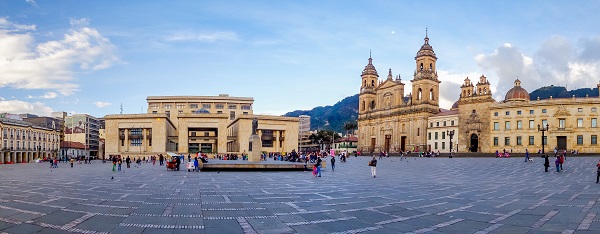

Full Day Bogota: Tour Includes
Full Day Bogota
Enjoy a Full Day visit to the historic centre of Bogotá known as La Candelaria. This archaic suburb has great significance in the country´s history due to its cultural heritage and is also a great example of Spanish colonial time architecture. Visit the main square Plaza de Bolivar, where a statue of the great emancipator Simón Bolívar is located. The plaza, originally called the Plaza Mayor, was used for civil and military purposes such as a marketplace, a bullring and it was also the place where many executions were held.
The visit continues with the Botero Museum, a colonial house exhibiting some of Fernando Botero´s works of art and in addition pieces from his own personal collection that includes works by Picasso, Renoir, Dalí Matisse, Monet and Giacometti. Next is the Gold Museum which has a permanent exhibition of some 32,000 pieces of gold, 20,000 stones, ceramics and textiles all precious to the Quimbaya, Calima, Tayrona, Sinu, Muisca, Tolima, Tumaco and Magdalena cultures. The Gold Museum is considered one of the most important museums of its type internationally and it has been operating since 1939.
After a traditional lunch visit in the Santuario de Monserrate, a symbol of Bogotá. Take the cable car or funicular up to Monserrate at 500 mts above Bogotá (total of 3140masl). The site offers the incredible panorama of the city on one side and the Andes on the other.
Then, head north travelling along on the Carrera 7, one of Bogotá’s principal Avenues. Called the Vía Real del Comercio in colonial times it was used as the main exit north to the salt mines. Along this avenue we can appreciate the contrasts of Bogotá passing by various styles of architecture, old and modern, with influences from all over the world and combined with touches from our Pre-Columbian ancestors. Go pass parks, the Centro Internacional, Museo Nacional, gastronomical, shopping and entertainment districts such as the Gourmet Zone or otherwise referred as Zona G, the Zona T and Zona Rosa. These last two areas are renowned for its shopping centres, pubs, cafes, fashion boutiques, jewellery stores and night time entertainment options.
The trip will end in Usaquén, a colonial district that was formerly a town in its own right but has now been taken by the city. Appreciate the atmosphere of the area that is slightly rural, colonial in style and at the same time modern. Walk through the streets, take in the colonial plaza and wander through its small boutiques, art galleries and restaurants. On Sundays there is a Flea Market where you can have the opportunity to admire or even purchase high quality products, try exotic platters and a great deal more, therefore Sundays is one of the busiest days in Usaquén.
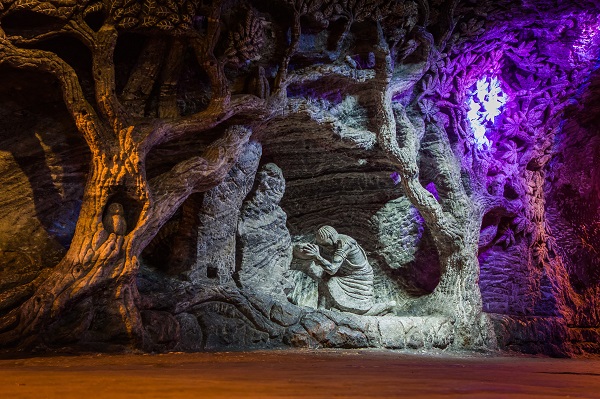

Zipaquirá and Salt Cathedral: Tour Includes
Half Day Zipaquirá and Salt Cathedral
In the morning depart from Bogotá and head north, towards Zipaquirá. Travel through the Bogota Savannah and as you travel by, glance at the many flower crops along the way. Flower production is an important industry for the hundreds of people that live in the region.
After a journey of approximately 1.15 hours reach the impressive Salt Cathedral, a true achievement of engineering. The name Zipaquirá refers to Zipa, the leader of the Muisca tribe and the chief of these rich salt mines. The excursion will begin by visiting the cathedral in a tunnel that passes the fourteen Stations of the Cross and continues on to the dome. The dome is lit in such a way that it allows one to contemplate the universe and the relationship between man and nature. Later, reach the enormous cross carved into the saline rock and finally the three naves of the Cathedral that represent the birth, life and death of Christ. In the central nave is the main altar, above which is the cross that measures 16m in height and 10m in breadth, made by the Colombian artist Carlos Enrique Rodriguez. This is the largest cross made from salt in the world. Next we visit the mine where there is an excellent auditorium that can seat up to two hundred people, host film screenings and events such as fashion shows. The trip ends at a mirror of water where it is possible to experience the amazing visual effects of water on carved saline rock.
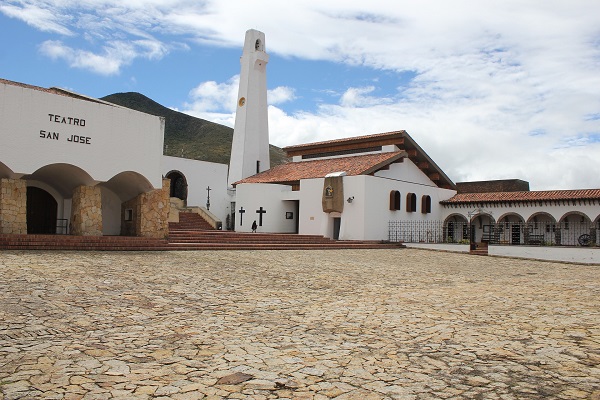

Half Day in Guatavita: Tour Includes
Half Day in Guatavita
Depart Bogota and head north passing the towns of Tocancipá and Gachancipá, travel for approximately 1.30 hours until reaching the legendary Guatavita Lake. The lake is located within the forest reserve of Cacique Guatavita and Cuchilla de Peñas Blancas. In this magical and mystical place, formerly inhabited by the Muisca people, it is possible to observe a great variety of flora and fauna endemic to the high altitude Andean woodlands. See hummingbirds, hawks, blackbirds flitting between the trees. There is also a great variety of interesting trees with exotic names such as Mano de Oso, Uvos de Monte and Te de Bogotá.
The legend of El Dorado came about from Muisca traditions. When the Muisca elected a new cacique or chief he would be accompanied to the lake bathed first in honey and then in gold dust before being launched out into the lake on a raft with offerings of gold and precious stones to later throw them into the depths of the water. This ceremony and act of transformation created the legend known as El Dorado. Visit the town of Guatavita and the lake of Tominé, striking with its white painted houses, beautiful square and tranquility. Sunday is market day and so there is much more activity in town.
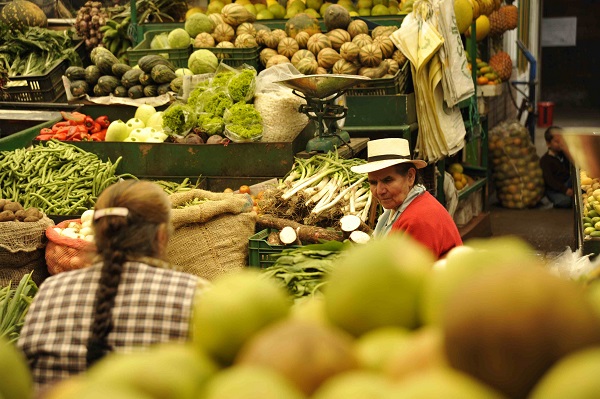

Visit to Local Markets and Cooking Lesson: Tour Includes
Half Day Visit to Local Markets and Cooking Lesson
Leave in the morning in the company of a Food concierge who is an enthusiast for local markets and Colombian cooking traditions. Head to La Plaza de Mercado Paloquemao, one of the biggest and most recognized local markets in Bogotá, where all traditional products and ingredients of Colombian cuisine can be found. Try some of the exotic fruits, local doughs, and Colombian cheese. Known to the vendors and the local cooking techniques; visit the flower market and the popular food stalls to feel a true local experience. At the end, buy the ingredients to cook a traditional dessert. Head to a restaurant in La Candelaria to enjoy a typical lunch (ajiaco santafereño and local fruit juice), then have the cooking class of a cachaco dessert.
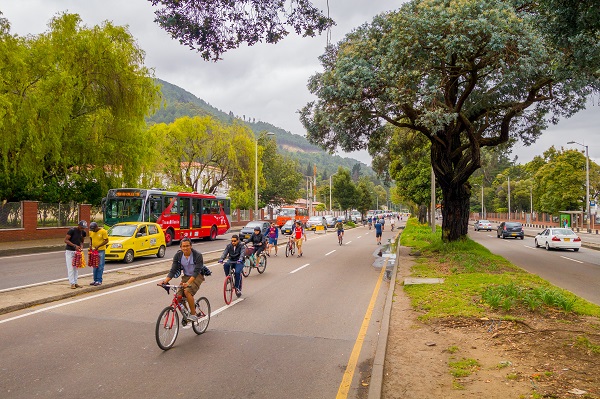

Graffiti bike tour Bogotá: Tour Includes
Half day graffiti bike tour Bogotá
Enjoy a graffiti bike tour in the historic centre known as La Candelaria. This antiquated neighbourhood has great architectural and cultural heritage and is made up of old “Stately homes” or large Spanish colonial buildings with iron windows, thick and sturdy wooden doors, balconies and internal patios with beautiful yet hidden gardens.
Bogotá has a great variety of colourful graffiti, murals and street art on its walls that can be found in the historical centre. These graffiti have gained an artistic, social and political form of expression of the city inhabitants.


Sanctuary of Flora and Fauna – Iguaqué: Tour Includes
Full Day Sanctuary of Flora and Fauna – Iguaqué
The tour begins with a long ecological hike from the high Andean forests to the moor, where a great diversity of flora and fauna can be appreciated. The path leads to the sacred lake of Iguaque, the place where the Muiscas based their mythology. According to Muisca legend, mankind originated in the Iguaque lake, when the goddess Bachué came out from the lake with a boy in her arms. Once the boy grew, they populated the earth. They are considered the ancestors of the human race. Iguaque is also a great place to practice bird watching. This tour includes transportation and a snack.


Full Day Villa de Leyva: Tour Includes
Full Day Villa de Leyva Tour
All day visiting Villa de Leyva, ideally seen by foot. Before the arrival of the Spaniards, the area was habited by the Muisca, a Chibcha speaking people who built their main astronomical observatory in the site of the current town. Villa de Leyva was declared a national monument in 1954 and has remained practically intact with very few modern constructions. We can still breathe the atmosphere of colonial times when visiting the Plaza Mayor -14.000 m2 make in the country´s largest- the surrounding cobblestone streets, the cathedral, the Casa de Antonio Nariño, home to the independence hero, the house of Antonio Ricaurte, who fought under the command of Bolivar and is known for his heroic sacrifice during the battle of San Mateo, the House of Congress, where on October 4, 1812, the first Congress of the United Provinces of Nueva Granada took place, the Colonial Art Museum and the Museo del Maestro Acuña, which exhibits works by this important painter, sculpture and writer, as well as colonial objects, musical instruments and furniture.
Visit The Fossil Museum, founded in 1977 and located 5,5 km away from Villa de Leyva. The museum was built exactly at the place where a kronosaurus, a marine reptile of more than 120 million years and 20 metres in length, was discovered. On the outskirts of the town, there is also “El Infiernito”, a pre-Hispanic Muisca site, where around 30 stone columns known as megaliths are located. It is believed that these columns are about 2,200 years old, and that this space was reserved for the cult of fertility by the phallic shape of the stones, others, on the other hand, affirm that it was used as an astronomical observatory.
A few kilometres from Villa de Leyva, not to be missed is the Convento Del Santo Ecce Homo founded by the Dominicans in 1620 and considered a most outstanding Spanish legacy. The pavement is made of local stone full of fossils and ammonites, and the chapel has a magnificent golden altarpiece with a small Ecce homo image. Return to hotel.


Raquira Visit: Tour Includes
Raquira Visit
On the way to Villa de Leyva stop in Raquira town. Ráquira which in the Chibcha language means “city of the pots” and therefore is known as the Colombian town that specializes in fine handmade ceramics; Sutamarchán, famous for its gastronomy, especially longaniza and morcilla spicy sausages and the Tomatina Festival, which comes from a Spanish tradition; and Tinjacá known for its tagua (the seed of palm) handicrafts.
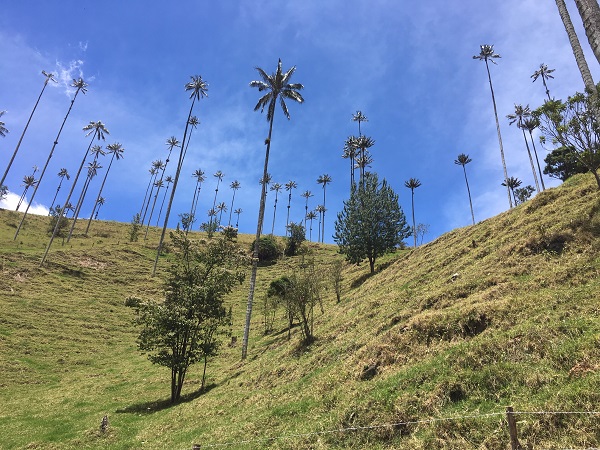

Full Day Valle Del Cocora, Salento and Filandia: Tour Details
Full Day Valle Del Cocora, Salento and Filandia
After breakfast, leave for the Valle de Cocora which is located in the central mountains of the department of Quindío. This makes part of the Parque Nacional de los Nevados and is the ideal place to marvel at the “Quindian wax palm” (Ceroxylon
quincense), the national tree of Colombia. This tree can reach a staggering height of 60m. Around here a great number of species of birds live, in particular some types of hummingbird and the orejíamarillo or the palm parrot (Ognorhynchus icteroti) which is endangered. Upon arrival in the valley, either hiking or on horseback (not included), head into the cloud forest to enjoy the biodiversity of flora and fauna. On the return journey, cross the River Quindío while walking along an ecological pathway which takes one past the tallest wax palms in the world. Learn why the indigenous people here worshipped this tree. Then you can have a typical
lunch (not included) and enjoy some free time here. In the afternoon, continue 10km towards the traditional town of Salento to enjoy a city tour that visits the Plaza de Bolívar with its colourful balconies, the Calle Real, the handicrafts shops and the Cocora viewpoint. Then, transfer to the traditional village of Filandia to enjoy a city tour that includes the viewpoint, the colonial homes, the Plaza de Bolívar and the coffee shops. Here, enjoy some time soaking up the regional atmosphere and perhaps some local spirits before returning to the hotel.
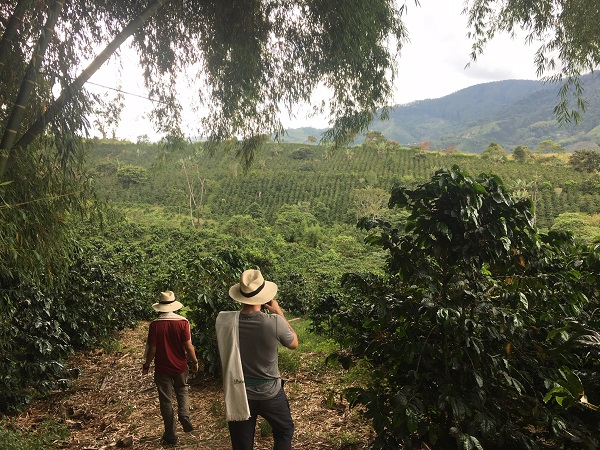

Half Day Plantations & Coffee Processingl: Tour Details
Half Day Plantations & Coffee Processing
Half day visiting the coffee plantations along the steep rolling hills so typical of this area. On a secondary pathway view the green carpet of coffee plants that spreads out as far as the horizon interrupted only by fincas and heliconia flowers. The visit continues on to one of the coffee haciendas to see the plantations and the production system in minute detail, including the harvest, the drying to the sun and treatment in this land of volcanic terrain along the Central Andes Mountain range which is perfect for this crop. The visit to the property begins in the house with an introductory chat about coffee, its preparation, toasting, the characteristics of quality and the properties that allows for such a variety of coffees in the world. The route continues through the grounds, appreciating its coffee plantations and the work of the coffee pickers as well as to understand the famous humid coffee that is characteristic of Colombian coffee. Visit the main house on the property to enjoy the local typical architecture and history. Taste different coffee brews and return to the hotel. The harvest in Colombia takes around a year, although the main period is between October and May/June. Most of the plantations in Colombia produce Arabica beans which produce a delicate and light tasting coffee which is widely recognized an consumed. The process begins from when the bean is planted and takes approximately 75 days to germination. The seedling is then placed in a plastic bag and placed in partial sunlight until its base dries. Two years after plantation the tree bears its first fruit which is harvested when the bean is red in color and therefore dry and ripe. Once the fruit has been picked, the pulp is stripped away, and the bean is cleaned and dried in the sun (the big haciendas now use a special machinery to strip and dry the beans in a short period of time). The beans are exported or dried in preparation for sale, before being ground up and made ready for human consumption.


Half Day Thermal Springs in Santa Rosa de Cabal: Tour Details
Half Day Thermal Springs in Santa Rose de Cabal
Leave for the hot springs of Santa Rosa de Cabal, 20km from Pereira in the department of Risaralda. The hot springs are east of the town of Santa Rosa de Cabal, known as the Ciudad de las Araucarias due to the prevalence of the trees native here, as well as the Municipio de los Termales or the city with the best
chorizos. The hot springs are on a hillside with three levels of waterfalls, the largest being on 170m in height. These have been open to the public since 1945 and around about the attraction there are Swiss chalet style homes. The hot springs offer visitors mountain views and naturally hot waterfalls that come from volcanic sources all at an average temperature of 70ºC, and then tumble over a beautiful 80m high waterfall into small pools where the temperature averages 40ºC, ideal for bathing. There are also cold pools for bathing in. Free time to enjoy the park and to have a curative thermal bath.
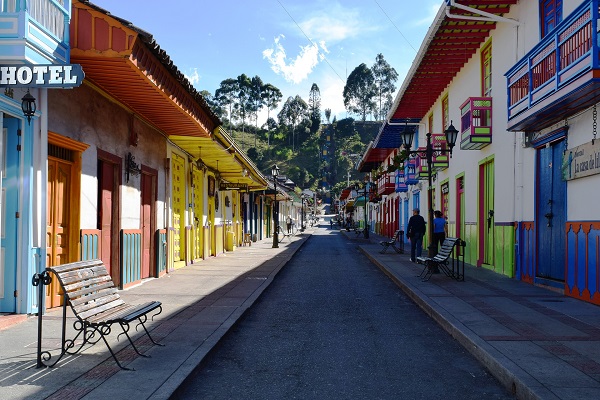

Half Day Bike Tour in the Coffee Region: Tour Details
Half Day Bike Tour in the Coffee Region
This is a full day of biking adventure where you have the chance to explore varied terrain, see incredible landscapes and visit traditional coffee pueblos and ultimately enjoy great coffee and more! There may be no better way to experience coffee culture in the traditional coffee region –a UNESCO World Heritage site– than on two wheels. Your bike ride will take you through coffee and banana plantations, bamboo forests and past cultivations of exotic fruits. As you breathe in the fresh countryside air you will possible be able to see different species of birds, monkeys, butterflies and much of Colombia’s cornucopia of nature on display. Choose one from the following routes: Coffee Valley (Vereda Montegrande, Caicedonia – Valle del Cauca), Colonial Salento Tour or route of Las Palmas (18-kilometer route to the Reserva del Valle de Cócora with a stop in Finca El Ocaso)


Full Day Colombian Cacao Experience: Tour Details
Full Day Colombian Cacao Experience
Colombia is renowned for its excellent coffee, but the rich and fertile soils of the coffee region also produce some of the world’s best cacao. On this full day tour, you will have the opportunity to enjoy some of the region’s most breathtaking scenery with picture postcard landscapes, rolling green hills and colonial villages and of course, visit a working cacao plantation. Visitors will learn about the entire process of cacao cultivation and will have the opportunity to toast and grind their own seeds in order to make fresh hot chocolate before having lunch on the farm. In the afternoon guests have a chance to visit the small town of Marsella to see the stunning main square and traditional architectural style found in the coffee region. There will be time to enjoy a cup of coffee in Marsella before heading back to the hotel.
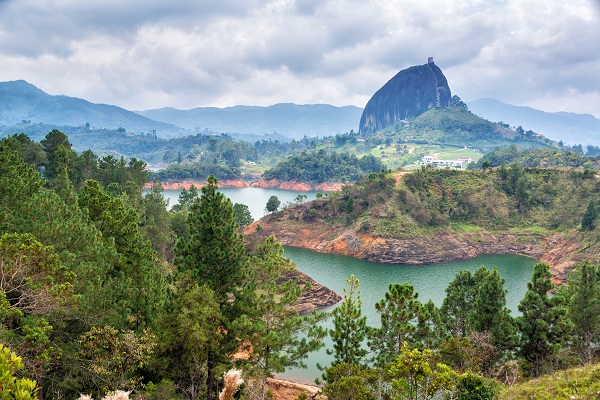

Full Day El Peñol & Guatapé: Tour Includes
Full Day El Peñol & Guatapé
Leave Medellín and head to the town of Guatapé in order to visit the enormous rock. The drive takes around two hours, during which you can appreciate the outstanding landscape of Antioquia. Guatapé has a reservoir created by the Colombian government for a hydro-electric dam. In the middle of the reservoir is the Peñol Rock. The Peñol Rock is possibly a meteorite due to its size.
Walk up the stairs if you are full of energy (there are 654 steps to get to the top), to view the entire Guatapé reservation, this is an optional activity. Then visit the picturesque village of Guatapé where all of the houses are painted in quaint pastel colors. After lunch (included), tour the Guatapé reservoir by boat (30 minutes) before returning to Medellin.
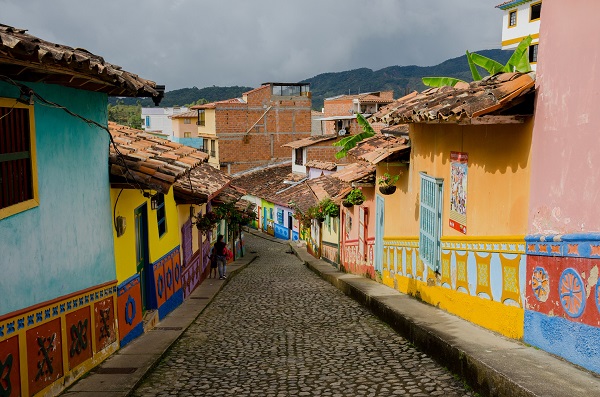

Social Transformation Tour: Tour Includes
Half Day Social Transformation Tour
Half day tour to visit those places that best represent the social transformation that has taken place in Medellín. The tour will show the symbolic areas of Medellín from the 1980s, when the city was one of the most dangerous in the world, up to today many projects that fostered the city’s change.
Enjoy an exciting tour through the history and present of Medellin and learn more about the transformation of this fascinating metrópolis. 20 years ago, Medellin was one of the most dangerous cities in the world. Back in the early 90s, when the hunt for Pablo Escobar took place, the head of Medellin’s drug cartel was at its peak. Thus, the reign of “El Patrón” came to its end. Until the turn of the millennium the struggles about Escobar’s successor continued, but since 2002 Medellin began to change. Intelligent local politicians started to invest heavily in infrastructure and public education. Today the “City of Eternal Spring” is one of the most innovative metropolises in the world.
Visit the barrio San Javier, which used to be one of the most unsafe suburbs of Medellín Located some 7km from the city centre, it is a clear example of the social transformation that has taken place in the last few years. Arrive here by the metrocable car that joins the north-east area with the city centre, which has been life changing to many of the inhabitants of Medellín.
Learn more about the city’s transformation after the death of Pablo Escobar and also get to know the innovative transport-system in the poorer neighborhoods at first hand. Explore Medellin’s newest invention: the electric stairways of the district Comuna 13, discover stories about its past by visiting the most important places marked by historical events and see some graffiti that symbolizes a form of expression of the community. Here it is possible to have a beautiful view over the city from the balconies of San Javier.
Then, go on to La Plazoleta located in the city centre, in an area that fell into decline in the 1980s and today houses 23 sculptures of Fernando Botero, donated by this famous local artist in year 2000. Since that time, the city has undergone a social and cultural transformation around these works placed in a public space.


Flower experience in Santa Elena: Tour Includes
Half day flower experience in Santa Elena
Medellin is well known and appreciated because of its nice weather, its natural wealth and its flowers. Just an hour away from the city is located Santa Elena, a small town where the silleteros are from. They are responsible for the symbolic annual silletero’s parade, main event of the Flowers Fair. The most important tradition for them is the making of silletas with flowers grown in their own gardens.
The tour begins early in the morning heading to the east side of Antioquia, passing through Corredor de Las Palmas, the main highway to the international airport. On the way, visit a typical craft market to appreciate the local handcraft or to taste a typical meal of the region. Also, enjoy the view of the green mountains landscapes that surround Medellin, the Andes.
Arrival in Santa Elena to visit the typical flower farm, where there are traditional local farmers and connoisseurs of the silleteros art. Meet with locals and learn more about this art. Keep in mind this is a rural area, roads to plantations aren’t always paved.
The word silleta comes from colonial times, when the Spanish nobles were carried by the native Indians on their backs using a structure made of wood, shaped like a chair. This tradition continued nowadays, not for carrying people but for products. Transfer back to Medellin.


Visit a community project and cooking class: Tour Includes
Half day visit a community project and cooking class
This community social transformation project is located in the Comuna 9, in the middle east of Medellín, where they are training low-income people in cooking and entrepreneurship with healthy food at affordable prices, applying techniques and recipes from all over the world with local ingredients and products.
Start with an introduction to the social transformation of the neighborhood and then explore the project headquarters. Visit public renovation projects, art murals, recreational and educational spaces that have improved the quality of life of its inhabitants. In addition, you will be able to interact with the community, visit the local business of a project participant to see the positive impact it has had on his life and his family.
Afterwards, you will have a cooking class in an outdoor patio where you can prepare and enjoy a Colombian dish or a gourmet dish of the social project. Finally, enjoy a ride on the tram and on the new cable car, a great infrastructure work that has improved the quality of life and accessibility of the community.
All funds generated on this tour are reinvested in the community project, subsidizing training, materials and equipment for low-income participants, and maintenance of the training center.
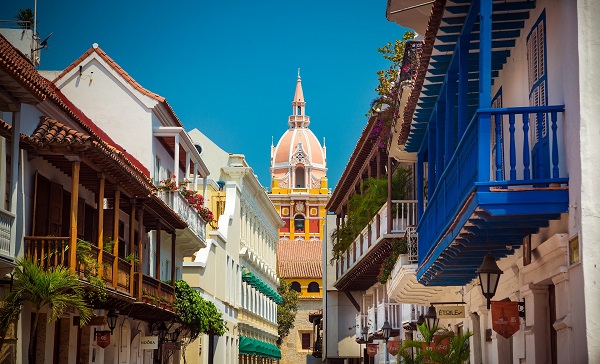

Half Day Panoramic City Tour: Tour Includes
Half Day Panoramic City Tour
Start with a panoramic view of the city from the Monasterio and Iglesia de La Popa. Formerly known as the “Popa del Galeon” and famous for resembling the stern of a galleon. Constructed in 1606 this church and monastery are located at a height of 140masl from where one can enjoy 360º views of the city and the sea as well as the port zone, one of the most important in the Caribbean. Continuing to the San Felipe Fortress, erected in honor of the poet from Cartagena, Don Luis Carlos López, made famous for his sonnet “A mi ciudad nativa” It was built on San Lázaro hill to defend the city from pirate attacks. Walk around the fortress and learn how the castle was constructed, the engineering feats, the tunnels, underground galleries and passageways. Then continue on to the Ciudad Vieja (old city) to visit the Convent and Church of San Pedro Claver which was built in the middle of the XVII century and owes its name to the “apóstol de los esclavos”. Lastly, continue to the handicrafts zone of the Bovedas, a collection of archways built into the city wall of Cartagena and that were used until the end of the 1700s to house armaments and then later as a prison in the XIX century. Nowadays it’s an artisan center where one can appreciate local handcraft.


Half Day in Palenque: Tour Includes
Half Day in Palenque
Depart in the morning and head to San Basilio de Palenque, a town located 60km away from Cartagena and at approximately one hour’s drive along the Vía de la Cordialidad on the way to Barranquilla. Recognized by the UNESCO as Cultural and Intangible Heritage of Humanity, the town’s name comes from the Palenques, communities of fugitive and escaped slaves from the colonial period of the XVII century.
This community has survived intact in San Basilio with their practices, customs and traditions. The inhabitants have retain heavy African influences in their daily routines, as for example their palenquera tongue which blends elements of Spanish with Bantu dialects from Africa. Upon arrival in Palenque meet a family who teaches visitors about the local customs and way of life. Palenque women teach how to carry fruit in a head basket while walking and Palenque men take care of the children while the women go off to work. Also, take a walk around the community to listen to tales of religious beliefs and customs. Try some traditional sweets. Return to Cartagena.
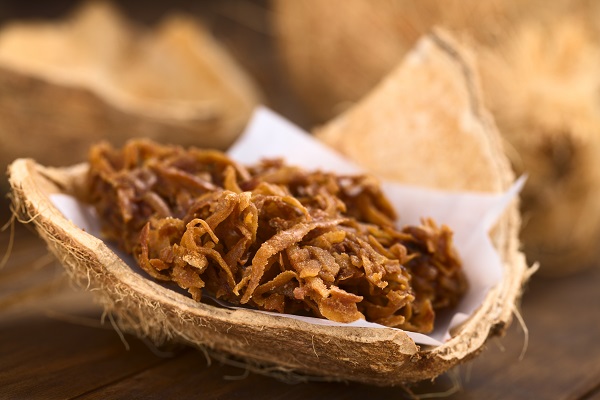

Gabriel García Márquez Literary Menú: Tour Includes
Half Day Gabriel García Márquez Literary Menú
Behind the walls of Cartagena, discover centuries of history, culture and flavors stirred by the fusion of Spanish, African slaves and migrants of 19th century. Typical food inspired one of the most important writers in Colombia and literature Nobel winner prize, Gabriel García Márquez mostly known for his book One Hundred Years of Solitude.
During these 3 hours walking, visit 9 favorite places of this beloved writer. In 6 different stops, taste a variety of snacks of traditional Caribbean food referenced in literary works by “Gabo” and discover the mestizo history behind the traditional cuisine of the Colombian Caribbean. Enjoy this tour in the middle of a city of almost 500 years old, with the “guardians” who preserve its gastronomic treasure and take home their stories and recipes.


Cartagena street food: Tour Includes
Cartagena street food
Cartagena’s vibrant historic center hosts a huge a variety of cuisine, combining Spanish flavours with African influences brought across by the slaves and migrants of 19th century. Locals have taken over this culinary tradition and culinary artisans are found throughout the streets of Cartagena.
Enjoy a walk through 10 must-see places in the historic center and have 7 stops to learn about Cartagena’s typical food by tasting different snacks and drinks, all prepared by local cooks in different places along the streets.


Visit to Local Markets and Lunch: Tour Includes
Half Day Visit to Local Markets and Lunch
Depart in the morning in the company of a guide, an enthusiast for local markets and head to La Plaza de Mercado de Bazurto located in the suburb known as Pie de La Popa in Cartagena. This is Cartagena´s main local market and stocks the largest variety of fresh produce in the Caribbean region. Try some of the exotic fruits available and follow the expert as he is welcomed by the vendors. Certainly, passengers will have an authentic local experience. To finish, enjoy a 2-course tasting menu of traditional cuisine. Back to the hotel.
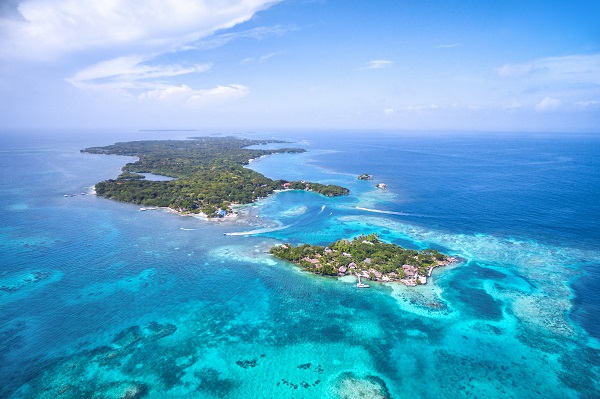

Rosario Islands Tour: Tour Includes
Rosario Islands Tour
The archipelago of the Rosario Islands is composed of dozens of islands of all sizes and waters
crystalline, that hide in a second plane, a fantastic coral reef. On this tour you can visit most of the islands and you will have the possibility of snorkeling or diving at certain points.
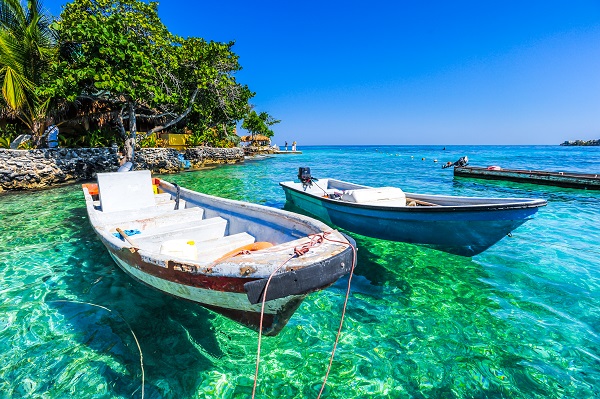

Mangrove Tour: Tour Includes
Mangrove Tour
Tour through the mangroves located near the hotel, in this tour mixes the fun, the contact with nature and the beach. Where we will find an ecosystem rich in fish and bird diversity.


Bioluminescence night tour: Tour Includes
Bioluminescence night tour
Every time the sun goes down, the sea shines and illuminates everything that moves around it, the luminous plankton, also known as “bioluminescent”, is an ecosystem that stands out for the brightness that tiny algae sparkles when it detects movement in water. The place to visit is 5 minutes away by boat from the hotel’s maritime wharf, in the “El Pelao” swamp.
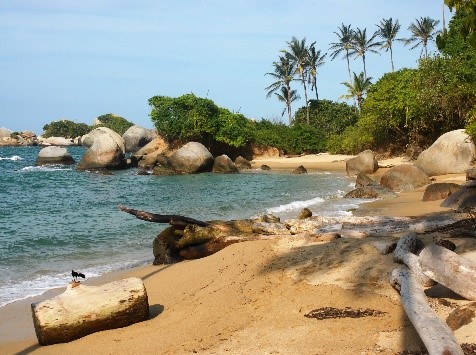

Trekking to Arrecife & Cabo San Juan: Tour Includes
Trekking to Arrecife & Cabo San Juan
Leave from Cañaveral, walking through the forest and its different micro climates begin. Birds are in abundance and on some occasions might be possible to see squirrels and monkeys playing in the trees.
After roughly 45 minutes walking, arrive at Arrecifes, one of the park’s most scenic and beautiful areas, which will astounds you with its beauty and drama with restless seas crashing on huge boulders. Continue by walking along the coast to La Piscina, a naturally calm stretch of beach ideal for bathing. Then, head on to El Cabo de San Juan de Guía which leaves an indelible mark on your memory due to its enormous boulders. Enjoy a free time in the beach to rest or take a bath. Return to Cañaveral in the afternoon.


Taironaka: Tour Includes
Taironaka
Taironaka is an ecological and archeological reserve within the Sierra Nevada de Santa Marta inaugurated on June 15 2008. There are the remnants of a Tayrona settlement here in this area known for its splendid vegetation, temperate climate and abundance of fauna.
Leave in the morning from Cañaveral to the Sierra Nevada de Santa Marta on a 60km journey that will take roughly 1.30 hour along the highway that heads to the Guajira. Go out the National Park and cross some rivers as Piedras, Mendihuaca, Guachaca, Buritaca and Don Diego; until arriving at Taironaka. In the midst of all of this nature is the Tayrona heritage of mysteries and wisdom. There are pathways, terraces, stairs, aqueducts and a ceremonial house which shows how the Tayrona people lived and how the Kogui, their ancestors, continue to live.
In Taironaka, kayak trips are available allowing one to glide along with the river or simply contemplate and relish the feeling of peace. Embrace the Macondo tree, the largest type of tree in this region and absorb its positive energy. Visit a small museum where there are displayed Tayrona’s urns, flutes, axes, ceremonial dishes and arrows amongst other items found and collected in this region.
Koguis, or as they are sometimes known Kaggabbas, still inhabit this region in the nearby river basins and ecotourism here is organized so that it benefits the conservations of this indigenous group and allows for them to remain true to their lifestyle and culture.


Half Day Santa Marta: Tour Includes
Half Day Santa Marta
Half day visit to the colonial area and the oldest city in Colombia.
Starting in the Bay of Santa Marta; continue to the Monument to the Tayrona gods and learn more about this culture that existed in that region long before the arrival of the Spanish; the Casa de la Aduana Museum, which makes up part of the Antropológico and Etnográfico Museum where is a fine collection of Tayrona artifacts and the Cathedral. Then, travel out to the Quinta de San Pedro Alejandrino with its beautiful gardens and where the great liberator Simón Bolívar passed away in 1830. Finally we will make a scenic tour of the bays of Rodadero and the fishing village of Taganga.


Half Day Aracataca: Tour Includes
Half Day Aracataca
Transfer to Aracataca located nearly 2 hours from Santa Marta. Arrival to Aracataca, where the well-known literature Nobel winner prize Gabriel García Márquez was born, known for his book One Hundred Years of Solitude. This place was the inspiration for some of his literary works. During the tour you visit “Gabo’s” youth places which have been described in some of his books. The visit includes places such as: the railroad station, Remedios La Bella sculpture, Montessori School where the Nobel studied, Masonic Lodge building, Berarcaza family house, Remedios La Bella library, United Fruit Company commissary, museum in the house of Gabo’s maternal grandparents (Márquez Iguarán), Bolívar square and telegraph house. Return to Santa Marta.
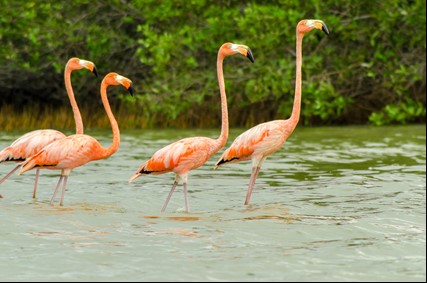

Flora & Fauna Sanctuary Los Flamencos: Tour Includes
Full Day Flora & Fauna Sanctuary Los Flamencos
The trip will start early morning. The Wildlife Sanctuary (SFF) Los Flamencos is 3 hours from the city of Santa Marta. Visit Tocoromana community and cross “Mainshirutshi” path learning about the medicinal use of plants in the area. You will make a tour of the lagoon Navio Quebrado, for interpretive sighting of flamingos and other birds that inhabit the SFF. You will share with locals a traditional lunch and then have a relaxing time on the beach. In the afternoon you will share sometime with Tocoromana community and return to Santa Marta.
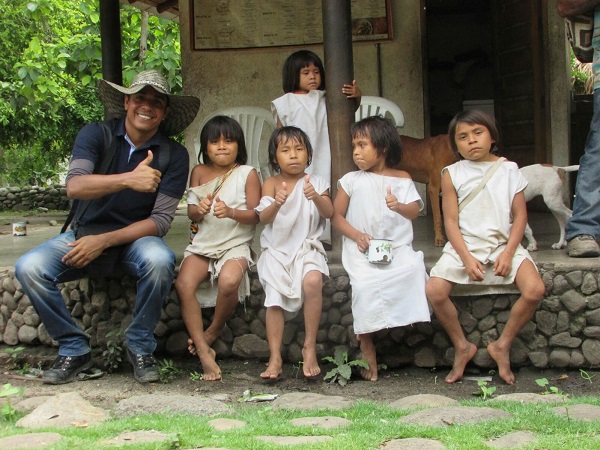

Full day to Kogui Serhviaka: Tour Includes
Full day to Kogui Serhviaka
Take a 1:45 hours journey by car from Santa Marta to Palomino, a town near Sierra Nevada de Santa Marta, place where one of the biggest indigenous community of Colombia live. Upon arrival, enjoy an ecological walk for about 2 and a half hour along an indigenous road which leads to Kogui Serhviaka town. Once with the community, learn about their culture and mores, guided by one of its members. Get to know their typical houses called “bohíos”, which are built with mud. Then visit Palomino beaches and then optional tubing activity through Palomino River. Lunch during the excursion. Return by car to Santa Marta.
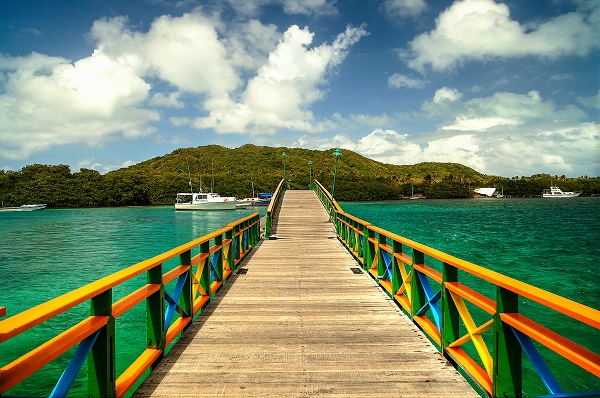

Providencia & Santa Catalina: Tour Includes
Full Day Providencia & Santa Catalina
All day excursion by boat around Providencia and Santa Catalina Islands. Visit the Cabeza de Morgan, a huge rock that resembles to a human head. Then visit the Puente de Los Enamorados, a colorful bridge that crosses the sea and communicates Providencia island with Santa Catalina. Continue to McBean Lagoon National Park, the most important ocean park of the western hemisphere. Inside the park, visit Crab Bay where it is possible to have a panoramic view of the islands and ocean. Finally enjoy Manzanillo beach where Caribbean lunch will be served.
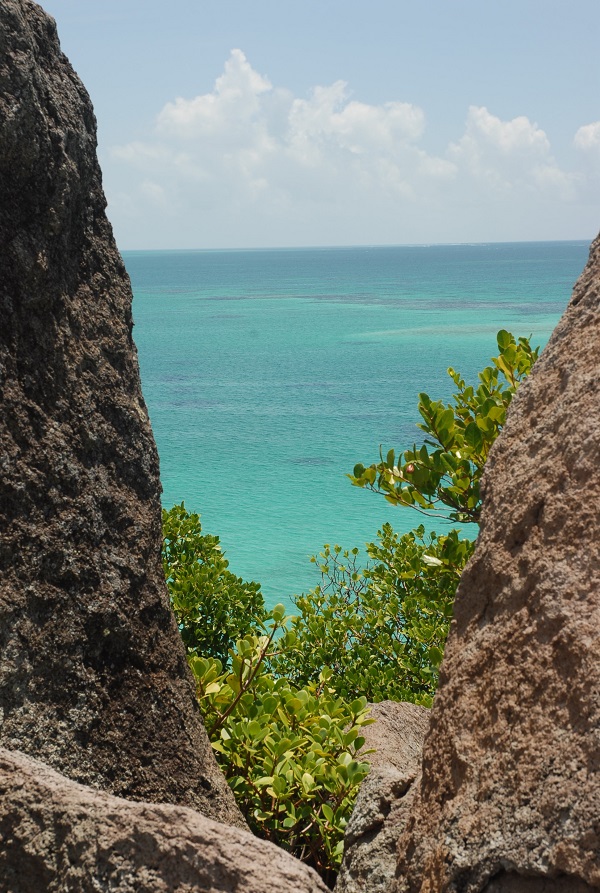

Mc Bean Lagoon National Park: Tour Includes
Half Day Mc Bean Lagoon National Park
Enjoy a half day at the McBean Lagoon National Natural Park where it is possible to admire the seven colours sea. Explore the park from the peak of Iron Wood Hill which has an altitude of 150 meters above sea level, to the coral reefs, which houses a great variety of marine species. During the walk through this path you will cross natural streams, mangroves, beaches and finally enjoy of the sea.
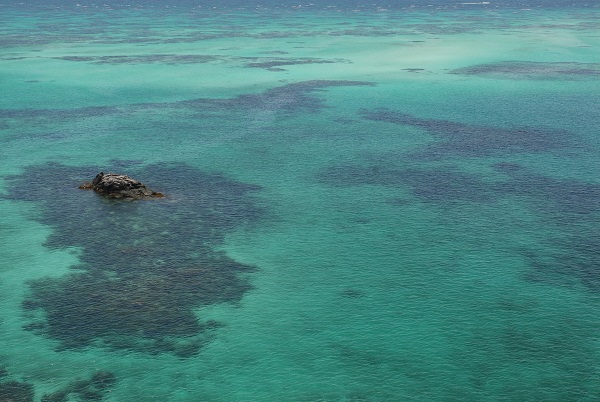

Walk to the “Peak” Tour: Tour Includes
Walk to the “Peak” Tour
In the morning leave for a walk up to the highest point on the island known as the “Peak”. This is 360m above sea level and from the top you will enjoy 360 degree views of the islands and the multicoloured nature of the sea and the extensive coral reefs. The majority of the freshwater found on the island is produced here from various sources. On the return hike walk through a rainforest which is spectacular as it is home to many different species of tropical birds.
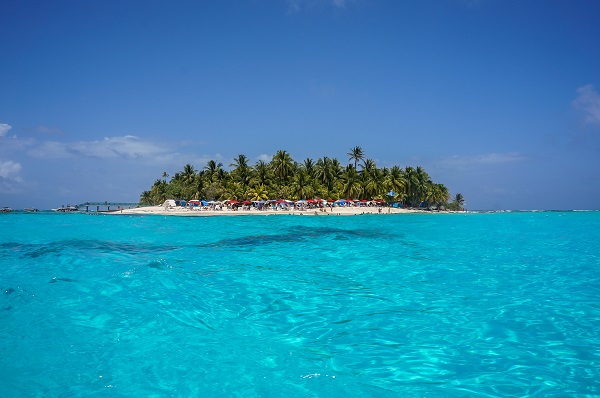

Excursion to the Aquarium and to Johny Cay: Tour Includes
All Day Excursion to the Aquarium and to Johny Cay
All day boat excursion to the Acuario Cay also known as Haynes Cay. This place gets its name from the ring of coral has been created making a natural aquarium full of multi coloured tropical fish. After a snorkel here continue to Johnny Cay with its famed white sands and clear waters where palm trees heavy with coconuts line the shore. This island is inhabited by locals who idly listen on to melancholic Caribbean tunes. Traditional lunch and return to San Andrés.
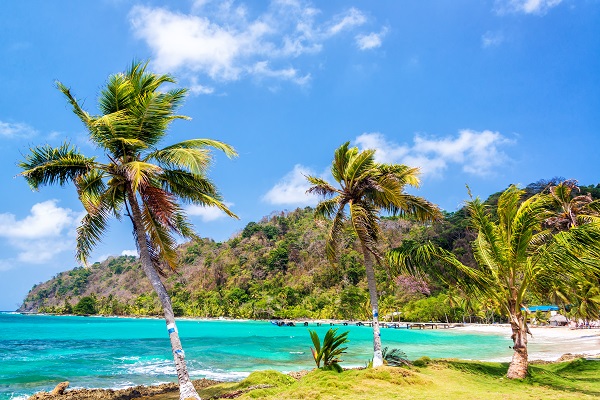

Excursion in catamaran: Tour Includes
Excursion in catamaran
Enjoy a beautiful and full of nature excursion in catamarán, a sail boat, bordering the mangrove area which make part of the Natural Park of Old Point Bay and Hooker Bay. Learn about the typical vegetation of the park, the different types of jellyfish. Enjoy the beach and return to the hotel.
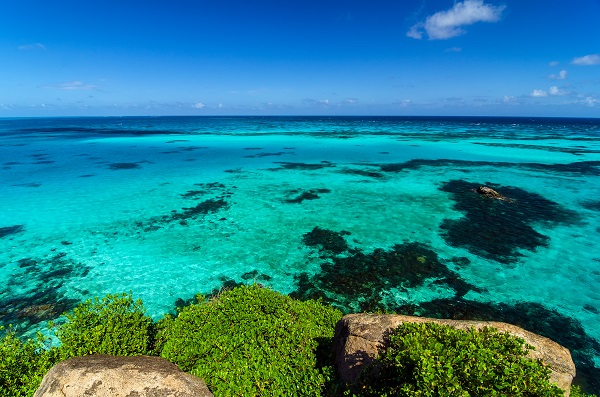

Half day transparent kayak tour: Tour Includes
Half day transparent kayak tour
Enjoy an excursion in transparent kayaks within the Old Point Mangrove Park. The visit to the mangroves is an experience in which you can enjoy and at the same time learn about these incredible ecosystems and their importance in the island culture. Paddle in calm and shallow waters, through beautiful tunnels formed by red mangroves, and sail on prairies of marine grasses, communities of inverted jellyfish, flat oysters and green algae and other species of mangrove. As part of the tour, you will snorkel and at the end of the tour you will be taste a typical island snack.
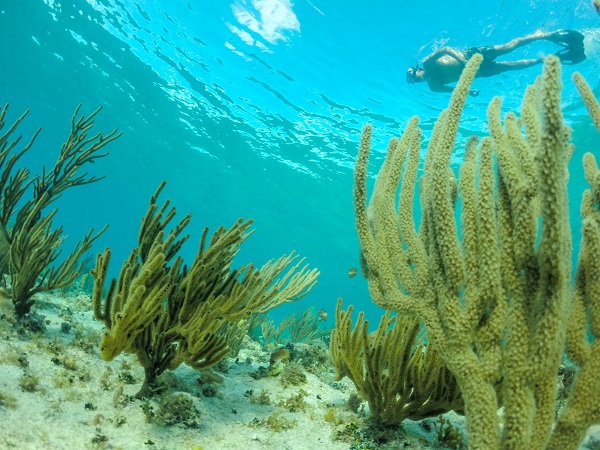

Snorkeling Tour: Tour Includes
Snorkeling Tour
A tour for those who are sea fauna amateurs. For 3 hours enjoy this eco-adventure where you have the opportunity to dive the right way and in the hands of an expert guide you will discover the coral reef of San Andrés. This tour includes dive equipment: mask, breathing tube, fins and life vest.


Half Day City Tour: Tour Includes
Half Day City Tour
The third largest city in Colombia, Santiago de Cali is the capital of the department of Valle del Cauca and is a city that enjoys a warm climate, as well as being known for its exciting salsa and warm hospitality due to its friendly and good natured citizens.
Half day visit to the most important historic and cultural sights in the city such as the Teatro Municipal Enrique Buenaventura, built in the XIX century and known as being of a creole yet classic design with a capacity for 1200 spectators; the Casa Proartes; the Centro Cultural; the Museo de Oro Calima, known for its fine golden ceremonial ornaments created by the Calima people in pre-Hispanic times; and finally the viewpoint in Cali’s historical San Antonio district and for a breathtaking view of the city and visit the antique church of the same name. The Iglesia San Antonio houses some well preserved and interesting artwork and wooden sculptures from the Escuela de Quito. The visit continues also to the Iglesia Sebastián de Belalcazar and the Iglesia de la Ermita.
Continuing to other interesting sights of the city such as the architectural complex of “la Merced”, the first construction in the city; the Plazoleta de San Francisco, striking with its Mudejar style tower; the Plaza de Caycedo, the city’s main square; La Tertulia Museum; and the monument to Cristo Rey on the Cerro los Cristales.
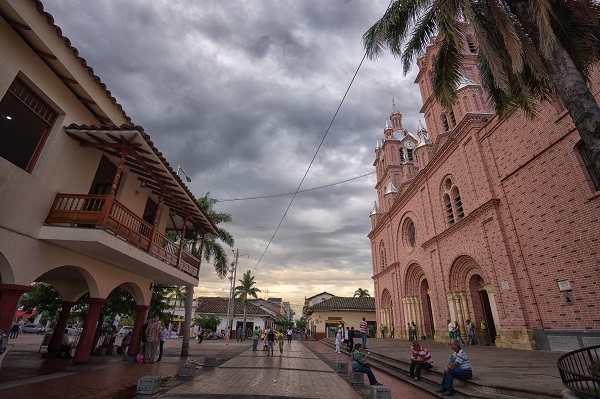

Panoramic City Tour by night with dinner: Tour Includes
Panoramic City Tour by night with dinner
The third largest city in Colombia, Santiago de Cali is the capital of the department of Valle del Cauca and is a city that enjoys a warm climate, as well as being known for its exciting salsa and warm hospitality due to its friendly and good-natured citizens. During this panoramic night tour visit to the most important historic and cultural sights in the city and the viewpoints of Sebastián de Belalcázar and San Antonio in Cali’s historical district where is an antique church of the same name, that houses some well preserved and interesting artwork and wooden sculptures from the Quito School. Also visit the Sixth Avenue and Granada neighborhood. You may choose between a typical regional food restaurant or sea food.


Salsa Classes: Tour Includes
Salsa Classes
Salsa has, over the years, become a unique unifying and expressive form of celebration. It is considered a healthy form of entertainment that allows one to keep in shape while permitting your body to express itself through dance.
Salsa classes are conducted by the best dance teachers in the city.
Recognized dancers who have travelled the world will coach and educate you in a patient and confident manner to surely impart some of the secrets of Caleño dance.
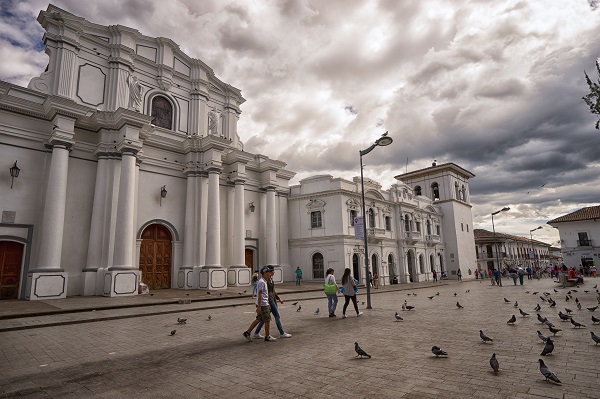

City Tour in Popayán: Tour Includes
Half Day City Tour in Popayán
Half day visit to historic Popayan founded in 1537, the tour begins on Caldas Park. Around the Park you will be able to see the main religious and governmental buildings, as well as the city’s original buildings such as the Clock Tower, considered one of the symbols of the city, built between 1673 and 1682 and set in 1737. Continue towards the Humilladero Bridge, built in 1873 to facilitate access from the city center to El Callejón (currently the suburb known as Bolívar) up a steep hill, particularly for those pilgrims making the journey on their knees. Visit outside La Hermita Church, Guillermo Valencia Theater and the Santo Domingo Church, a baroque style church designed by the Spanish architect Antonio García and commissioned by the Arboleda family. Enter to the Catedral Basilica Church, the San Francisco Church, considered the most beautiful baroque church in town and the Panteón de los Próceres or Parthenon of the Leaders of the Independence. Visit the Religious Art Museum, which houses an interesting collection of religious art, and the Casa Museo Mosquera, the Settecento style house that belonged to General Tomás Cipriano de Mosquera. Take a look from the bottom of the Morro del Tulcán, where an equestrian statue is found in homage to the conqueror Sebastián de Belalcázar, founder of the city. If desired, the ascent to the hill can be performed.
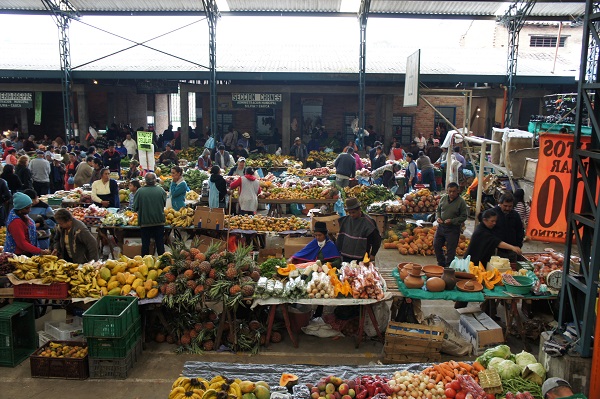

Half Day in Silvia Market: Tour Includes
Half Day in Silvia Market
Half day visit to the small town of Silvia, located in a temperate mountainous area near Popayan and consisting of picturesque houses surrounded by vast sugar cane plantations. The Indigenous Guambiano community with a population of 12,000 inhabitants lives in small mountain villages nearby. Every Tuesday, on market day, the village of Silvia is transformed into a colorful, bustling and picturesque place when the Guambiano indigenous people descend upon Silvia dressed in their traditional “anacos”, a blue knee-length skirt-like wraparound to sell, fruit, vegetables and handicrafts.
Note: It is only opened on Tuesdays until midday.
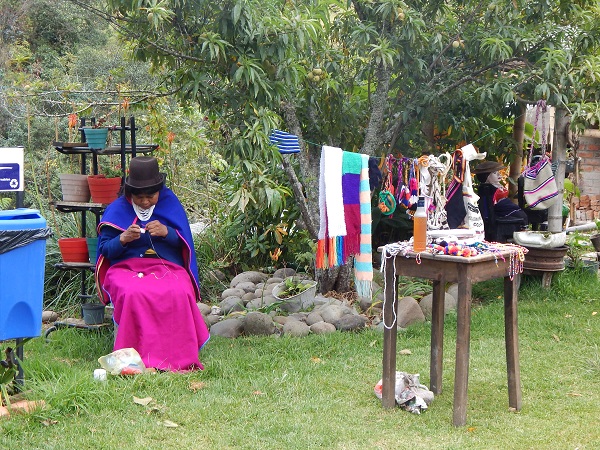

Guambiana Culture and Casa Payán: Tour Includes
Half Day Guambiana Culture and Casa Payán
The department of Cauca is home to the best organized and representative ethnic groups in the country and on this occasion, you will visit Silvia, the center of Guambiana culture. A member of the Cabildo Governor (Indigenous State organ) and a traditional doctor, give you a tour through the Guambia shelter, knowing their social organization, modes of production and traditional medicine of this indigenous people.
Have a musical welcome with a group of chirimía (traditional indigenous music performed with flute and drum) and a changuar tasting (indigenous liqueur). The traditional doctor will receive you and after a “Cleaning Ceremony”, he will share his knowledge about the sanitary powers of plants. Visit Casa Payan, an area where you immerse yourself in the cosmogonic concept of the Guambiana culture.
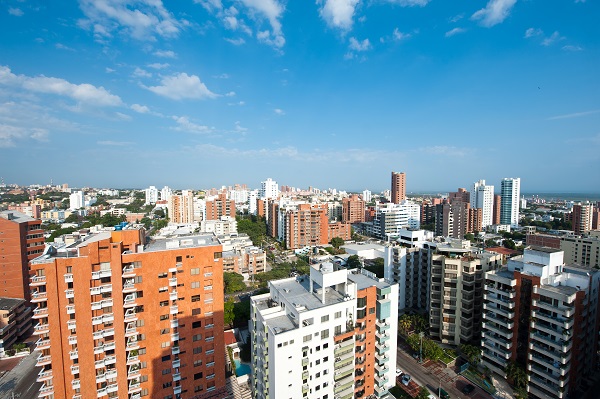

Historical Tour: Tour Includes
Half Day Historical Tour
Half day visit in Barranquilla starting in the north, in the historic El Prado district with its American and European style architecture. Continuing to Parque de los Fundadores which has beautiful gardens and Casa Del Carnaval to appreciate part of the essence of the festival.
The tour continues to the Teatro Amira de la Rosa, which is a 28 years old theater and was named after the poet Amira Arrieta, author of the city’s anthem. Continue the visit to the Metropolitan Cathedral, the Aduana building, Estación Montaya and Plaza del Ferrocaril with a republican style that was representative at the time of the railroad. Finally, visit the Museo Del Caribe where it is possible to learn about the environmental, cultural and historical aspects of the city.
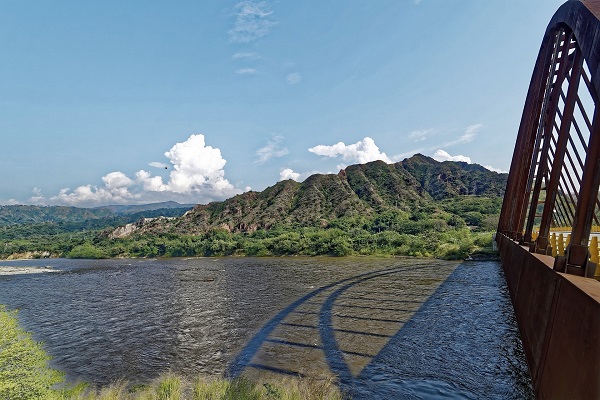

Bocas de Ceniza: Tour Includes
Half Day Bocas de Ceniza
Depart in a little train from Las Flores neighborhood in Barranquilla until Bocas de Ceniza, the place where Caribbean Sea and Magdalena River find each other. The name of this place comes from the ash, ceniza in Spanish, color of the seawater because of the mix of the sea with the gray water of Magdalena River. This river is the most important river of Colombia, it crosses 18 departments and is 1.500 km approx. of length. Enjoy a typical lunch by the river.
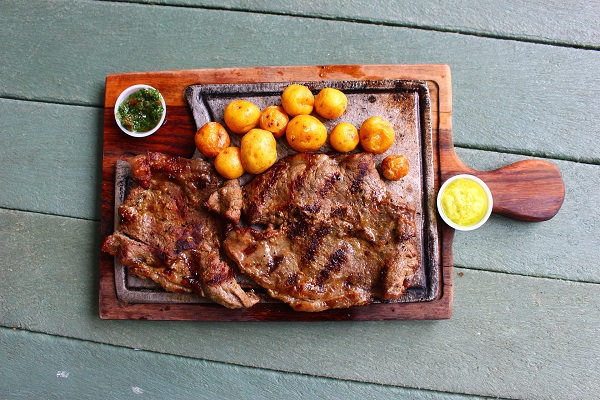

Gastronomical Tour at Night: Tour Includes
Gastronomical Tour at Night
A night tour to the typical restaurants of the city where it is possible to taste the varied flavors of the region and know the history of iconic places such as La Tiendecita, La Cueva, Rancho Rumbero, Patio Sabanero, Heladería Americana. The tour ends with a dinner in a restaurant with a live show of dancers representing the carnival.
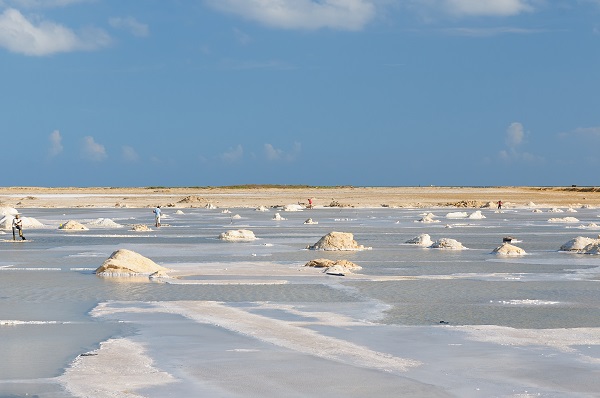

Cabo De La Vela Tour: Tour Includes
Full Day Cabo De La Vela Tour
After breakfast leave Riohacha heading northwest to Cabo de la Vela (180 km, 4 hrs approximately), a remote fishing village along the tip of the Guajira peninsula. Break the journey after 60km to visit the salt flats at Manaure. These tall mountains of brilliant white salt play tricks on the mind with extreme contrasts alongside the sea, sand and sky. Later in Uribia, the indigenous capital of the Department, see the fine artistry and handicrafts of the Wayuu such as their hammocks and mochila bags are on display. Continuing the trip through the desert following the road alongside the railway tracks the length of which freight trains haul tons of coal from the mine at El Cerrejon to Puerto Bolivar for exportation. Towards the end of the railway line the road leads off into the desert passing Wayuu dwellings and cacti.
After lunch, take a trip to the Faro viewpoint where a lighthouse beams out over the sea from this rocky peninsula and allows for fantastic sunset views. Moving on to Pilón de Azúcar beach, where the blue sea is only interrupted by golden sands. From the top of the point at Pilón there is a 360ª view. From here to one side are the sea and the sand and to the other the salt flats. Return to Riohacha.
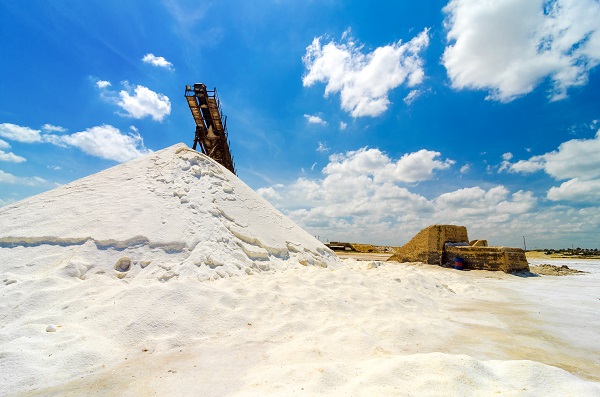

Afternoon in the “Mina Del Cerrejón”: Tour Includes
Afternoon in the “Mina Del Cerrejón”
You will be able to know the thermal coal deposits and its exploitation in open field for 30 years and its development day by day, as well as the process of extraction of the coal and how is its transfer to the rest of the world. The tour is guided by experts of the mining company.
The entrance to this complex will be done according to the time of entry authorized by the operators of the mine. Return to Riohacha.
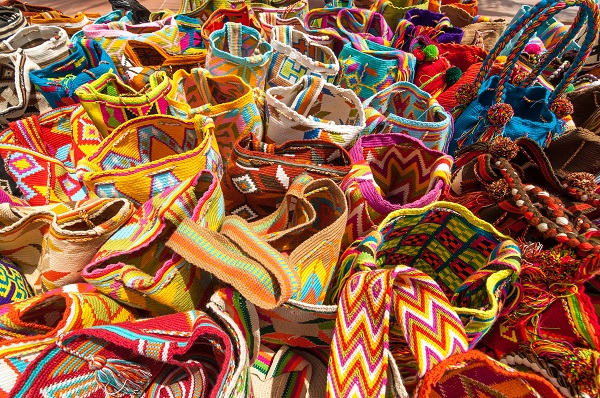

Afternoon in the Rancherias: Tour Includes
Afternoon in the Rancherias
Depart from Riohacha to visit an authentic and traditional Wayuu indigenous community in order to learn about their way of life and cultural practices. Observe the wooden structures that are traditional of Wayuu dwellings as well as listening to their myths and legends.
Appreciate their handicrafts and the Yonna dance while sipping some rum.


Half Day Bird Watching: Tour Includes
Half Day Bird Watching
In the morning or sunset take a boat to the Tarapoto Lakes for bird recognition. Colombia has the world’s richest bird population and only in the Amazon inhabit more than 700 species of birds This excursion will offer you the opportunity to admire and appreciate flocks of more than 20 species of parrots and other exotic birds. If you are lucky, you can see endemic species such as the white-winged parakeet (Brotogeris versicolurus), the white-throated kingbird (Tyrannus albogularis) and others.
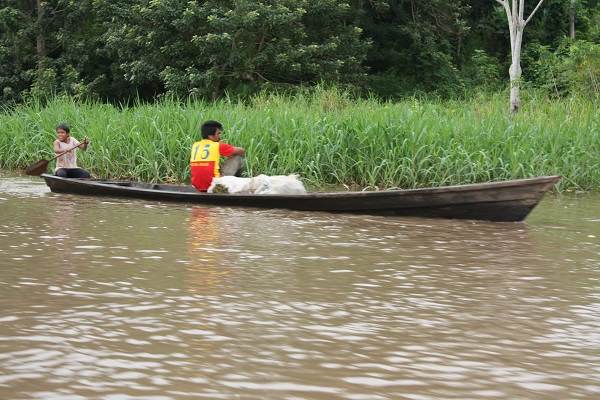

Puerto Nariño & Lago Tarapoto: Tour Includes
Full Day Puerto Nariño & Lago Tarapoto
Depart in the morning from Leticia for a trip along the Amazon River. Start your tour by visiting the Victoria Regia. Later visit Isla de los Micos Natural Reserve and observe the giant lotus plants, the local fauna and the Frailey Monkeys in their natural habitat. The tour continues with a visit to the Tikuna indigenous community village of Macedonia, a small town known for its handmade and intricately designed handicrafts such as the carpets and dolls made from yanchama (tree bark) as well as beautiful fashion accessories made from seeds and feathers, brightly coloured bags woven from chambira and various carved items such as walking sticks, necklaces all made from the fine and greatly valued wood of the palosangre (brosimum rubescens taub). After lunch continue on to Puerto Nariño, the second largest town in the department of Amazonas after Leticia. The town is a curious mix of colonists and native people. It is considered as the cradle of the Amazon given its unequalled natural, cultural and harmonious setting. Later, travel on up the river to Tarapoto Lake where, it might be possible to see a great deal of interesting species such as the grey and pink river dolphins. Finally reach Puerto Alegría on the Peruvian side of the Amazon. Return to hotel.
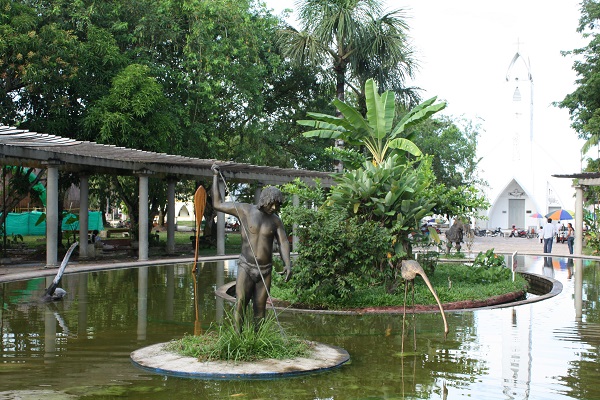

Leticia city tour: Tour Includes
Leticia city tour
Walking tour of the small city centre of Leticia, the capital of the Colombian Amazonas department. The visit starts in the Museo Etnográfico del Hombre Amazónico where you will be able to appreciate a collection of objects and utensils used by the indigenous cultures of the region. Continue the tour by visiting the city’s parks and stroll Leticia´s streets with plenty of time to browse handicrafts shops and have a taste of a local brew of “chuchuhuaza”, an Amazonian aphrodisiac drink made from an endemic species of tree.
